Turn Up the Color!
HOP ABOARD the best
FOLIAGE TRAINS
DISCOVER
VERMONT’S hidden HOT SPOTS
ROAD-TRIP with fellow LEAF PEEPERS















HOP ABOARD the best
FOLIAGE TRAINS
DISCOVER
VERMONT’S hidden HOT SPOTS
ROAD-TRIP with fellow LEAF PEEPERS














///
As crowds flock to Vermont’s top foliage towns this fall, there’s plenty of prime color to be found in surprisingly little-known spots, too. By Bill Scheller

110 ///
After years of watching foliage bus tours rolling past in autumn, a Yankee editor hops aboard to see his home through a leaf peeper’s eyes. By Ian Aldrich
///
Meet New England’s “grainiacs”: the farmers, millers, and bakers who are right now creating some of the best breads in the country. By Rowan Jacobsen
///
A decades-old packet of seeds holds the promise of remarkable blooms—and the memory of the equally remarkable woman who collected them. By Julia Shipley
128 ///
The granddaddy of New England country fairs may be turning 200 next year, but its appeal never grows old.
Photographs by Mark Fleming
///
How Ken Burns’s documentary on the most divisive event in America since the Civil War came to life in a quiet New Hampshire village. By Mel Allen


















































32 /// An Ideal Setting
Rhode Island jewelry artist Carolyn Morris Bach transforms an overgrown 18th-century Cape into a polished work-and-living space. By Annie Graves
40 /// The House at Allen Cove

A legendary American writer. A stunning Maine saltwater farm. This just might be Yankee ’s ultimate House for Sale. By Mel Allen
58 /// Fruits of the Forest Photographer turned forager Jamie Salomon sets his sights on wild mushrooms. By Keith
 Pandolfi
Pandolfi
64 /// Local Flavor
10
DEAR YANKEE, CONTRIBUTORS & POETRY BY D.A.W.
12
INSIDE YANKEE
In praise of unexpected encounters.
14
MARY’S FARM
Drawing strength from an extraordinary family friend.
By Edie Clark16
LIFE IN THE KINGDOM
As the days get shorter, the list of chores grows longer.
By Ben Hewitt20
FIRST LIGHT
A bike trip into the heart of Maine’s famous landscape and the lives of its people.
By Peggy Grodinsky26
68 /// New Vintage Cooking
TraversoBaked in a farmhouse and sold on the honor system, these pies are a Vermont slice of life. By Amy
Re-creating a recipe from memory ... when the memory isn’t yours. By Amy Traverso
70 /// Could You Live Here?
Find maritime history and witchy lore side by side in one of the most idiosyncratic towns in the country. By Annie Graves

76 /// The Best 5
Ride the rails to autumn color on New England’s top foliage trains. By Kim Knox Beckius
80 /// Local Treasure
Paying tribute to the Maine lumbermen who felled the trees that built a nation. By Ian Aldrich
82 /// Out & About
From Oktoberfests to country fairs, we round up regional events that are worth the drive.
KNOWLEDGE & WISDOM
Taking the measure of a country mile, revisiting Philip Johnson’s iconic Glass House, and scary insight from Stephen King.
28
ASK THE EXPERT
Pro tips on winning a wife carrying championship.
156
TIMELESS NEW ENGLAND
Remembering the quirky shopping paradise that was “the Basement.”





















1121 Main St., P.O. Box 520, Dublin, NH 03444. 603-563-8111; editor@yankeemagazine.com
EDITORIAL
EDITOR Mel Allen
ART DIRECTOR Lori Pedrick
DEPUTY EDITOR Ian Aldrich
MANAGING EDITOR Jenn Johnson
SENIOR EDITOR/FOOD Amy Traverso
HOME & GARDEN EDITOR Annie Graves
PHOTO EDITOR Heather Marcus
SENIOR PHOTOGRAPHER Mark Fleming
DIGITAL EDITOR Aimee Tucker
DIGITAL ASSISTANT EDITOR Cathryn McCann
ASSOCIATE EDITOR Joe Bills
INTERN Heather Tourgee
CONTRIBUTING EDITORS Kim Knox Beckius, Edie Clark, Ben Hewitt, Julia Shipley
CONTRIBUTING
PHOTOGRAPHERS Julie Bidwell, Kindra Clineff, Sara Gray, Corey Hendrickson, Joe Keller, Joel Laino, Jarrod McCabe, Michael Piazza, Heath Robbins, Carl Tremblay
PRODUCTION
PRODUCTION DIRECTORS David Ziarnowski, Susan Gross
SENIOR PRODUCTION ARTISTS Jennifer Freeman, Rachel Kipka
DIGITAL
VP NEW MEDIA & PRODUCTION Paul Belliveau Jr.
DIGITAL MARKETING MANAGER Amy O’Brien
YANKEE PUBLISHING INC.
established 1935
PRESIDENT Jamie Trowbridge
EDITOR-IN-CHIEF Judson D. Hale Sr.
VICE PRESIDENTS Paul Belliveau Jr., Jody Bugbee, Judson D. Hale Jr., Brook Holmberg, Sherin Pierce
CONTROLLER Sandra Lepple
CORPORATE STAFF Mike Caron, Linda Clukay, Nancy Pfuntner, Bill Price, Sabrina Salvage, Christine Tourgee
BOARD OF DIRECTORS
CHAIRMAN Judson D. Hale Sr.
VICE CHAIRMAN Tom Putnam
DIRECTORS Andrew Clurman, H. Hansell Germond, Daniel Hale, Judson D. Hale Jr., Joel Toner, Cor Trowbridge, Jamie Trowbridge
FOUNDERS
ROBB & BEATRIX SAGENDORPH
PUBLISHER Brook Holmberg
ADVERTISING: PRINT/DIGITAL
VICE PRESIDENT/SALES Judson D. Hale Jr.
SALES IN NEW ENGLAND
TRAVEL, NORTH Kelly Moores KellyM@yankeepub.com
TRAVEL, SOUTH Dean DeLuca DeanD@yankeepub.com
TRAVEL, WEST David Honeywell Dave_golfhouse@madriver.com
DIRECT RESPONSE Steven Hall SteveH@yankeepub.com
SALES OUTSIDE NEW ENGLAND
NATIONAL Susan Lyman, 646-221-4169 Susan@selmarsolutions.com
CANADA Alex Kinninmont, Françoise Chalifour, Cynthia Jollymore, 416-363-1388
AD COORDINATOR Janet Selle
For advertising rates and information: 800-736-1100, ext. 204 NewEngland.com/adinfo
MARKETING
CONSUMER
MANAGERS Kate McPherson, Kathleen Rowe
ASSOCIATE Kirsten Colantino
ADVERTISING
DIRECTOR Joely Fanning
ASSOCIATE Valerie Lithgow
PUBLIC RELATIONS
BRAND MARKETING DIRECTOR Kate Hathaway Weeks
NEWSSTAND
VICE PRESIDENT Sherin Pierce
DIRECT SALES
MARKETING MANAGER Stacey Korpi

SALES ASSOCIATE Janice Edson
SUBSCRIPTION SERVICES
To subscribe, give a gift, or change your mailing address, or for other questions, please contact our customer service department: Online: NewEngland.com/contact
Phone: 800-288-4284
Mail: Yankee Magazine Customer Service P.O. Box 422446 Palm Coast, FL 32142-2446





Like his great-great-grandfather, (a clipper ship sea captain), Keith travels every two years to the Far East to acquire gems at the source and then he designs and makes the jewelry for us.
The Clipper Ship Trade Wind Jewelry Collection is again in the port of Portland for 2017. Over one-hundred pieces of luscious sapphire, ruby, and emerald jewelry. Sneak peek preview on-line. Call or click to buy, or to experience the real thing, visit us in downtown Portland.
Check it out on-line. Come visit us Monday - Friday 9:30am - 5:00pm

Travel: Ultimate Foliage Weekend Planner
A weekend-by-weekend guide to the best seasonal color in New England.

NEWENGLAND.COM/ FALLWEEKENDS
Events: Biggest Fall Fairs




We round up our favorite places to go for deep-fried whoopie pies, tractor pulls, concerts, and more.
NEWENGLAND.COM/ FALLFAIRS































Recipe: Apple Cider Doughnuts
Enjoy the ultimate flavor of fall with this easy recipe you can make at home.
NEWENGLAND.COM/ CIDERDOUGHNUTS
Travel: Best Pumpkin Festivals
Celebrate October’s signature crop at these five great gatherings.
NEWENGLAND.COM/ PUMPKINFESTIVALS














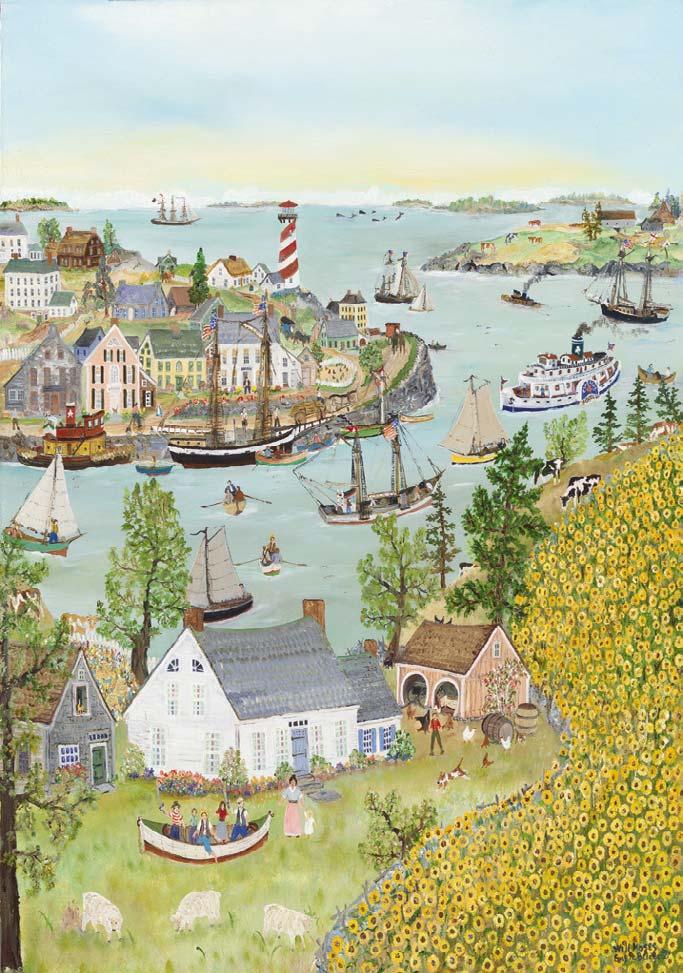
IAN ALDRICH


Yankee ’s deputy editor admits he usually avoids groups when he can—and especially group travel. But joining a weeklong fall foliage bus trip turned out to be a surprisingly good time [“Leaf People,” p. 110].
“Part of that was the people, all of whom were from outside New England, including some who’d never been here before,” he says. “Their excitement about the region made me appreciate my home even more.”
PEGGY GRODINSKY

For Grodinsky, the toughest part about reporting on her BikeMaine ride was having to write up detailed notes by flashlight every night while the other tired cyclists went blissfully to sleep [“Tour de Maine,” p. 20]. The Portland Press Herald food editor didn’t even learn to ride a bike until she was 10 or 11; these days, the chain grease marks on her legs much of the summer prove that she’s making up for lost time.
ANDREW DEGRAFF
Having just returned to the East Coast after two years in California, this Maine-based artist enjoyed the chance to illustrate his home turf [“Leaf People,” 110]. “While I was trying to access the impressions, colors, and feel of a visitor to New England,” he says, “this assignment was also a sort of homecoming for me. It’s nice to be back.” DeGraff’s second book, Cinemaps: An Atlas of 35 Great Movies, is out this fall.
SARA GRAY
Though today she’s a photographer living in Maine, Gray was born in Vermont and actually grew up on a Morgan horse farm in Shelburne. She says she was thrilled to shoot a foliage story in Vermont [“Hidden Gold,” p. 96] that focused on four different parts of the state—three of which she’d never visited before. “Vermont is such a small state, and I love the fact that I am still discovering new areas!”
ROWAN JACOBSEN

Recently named a Knight Science Journalism fellow at MIT, this Vermonter got a master’s in creative writing and then never wrote fiction again, instead penning seven nonfiction books as well as articles for the likes of Outside and Mother Jones. Of this issue’s story about New England bread [“On the Rise,” p. 118], he says, “It contains my favorite line I’ve ever written. Just four words. Can you guess?” [Ed. note: See bottom of p. 11.]
JULIA SHIPLEY
This year Shipley was a national award finalist for “The Farmer’s Life,” her column for Yankee ’s digital issue. Her latest dispatch also appears in these pages [“Something Borrowed, Something Blue,” p. 126], which yields “some amusing irony,” she says. “There were six people at our wedding (including us), because we wanted a really private occasion. But by writing about it here—well, that’s kinda the opposite, isn’t it?”
Just wanted to send a quick message about Weekends with Yankee on PBS. The “Icons of New England” episode is the first I’ve ever seen, featuring segments on Olneyville New York System wieners and Philip Johnson’s Glass House. I look forward to many more episodes, but this was a great one to catch for my first time….
I am a born-and-raised Southerner; however, beginning before college I would take a yearly trip to New England for either snowboarding and skiing in the winter/spring or a summer/fall trip for all the other amazing activities, food, people, and scenery. I would love to have a vacation home in New England; at the very least, I would like to resume my yearly excursions to New England for my family, so they can experience all of the sights and sounds that I fell in love with many, many years ago. All of this reignited by one episode of Weekends with Yankee . Please keep up the great work, and I can’t wait to get back.
Josh Escue Acworth, GeorgiaWhen I saw the words “How Many Lobster Rolls Can You Eat in 10 Minutes?” on your cover, I immediately turned to the story inside [“Feeding Frenzy,” July/August]. In 2010, my son, Matt “Megatoad” Stonie, won the Hampton Beach Lobster Roll Eating Contest, stuffing down 24½ lobster rolls in 10 minutes. To this day, although “Gentleman” Joe Menchetti and Teddy Delacruz came very close, Matt still holds the record. I wish that fact had been included in the article.
Matt, who is now 25, lives in California but spends his summers with his grandparents, the Rev. Henry Stonie and Mary Jo Stonie, in Hampton, New Hampshire. His eating escapades are eagerly covered by the


Behind the couch, two crickets play A back-and-forth duet all day
Convinced that summer’s here to stay
And tunes have kept the cold at bay.
—D.A.W.

Cathy
StonieSan Jose, California
I expect you will get many notes thanking you for publishing “Hometown” [July/August]. I was drawn into every photograph and lingered over them and returned to them again and again. That is the very thing every photographer, amateur or pro, seeks to make happen, and few do. Not in the way Barbara Peacock has managed…. I have never felt so uplifted by anyone’s work as I do seeing these moments from a hometown.
Diana Hayes

South Woodstock, Vermont, and Bedford, New Hampshire
in “On the Rise,” is “I met a maltster.”
Jacobsen’s favorite line ever, from p. 148
We are not making this up: Rowan
henever I take to the road, the stories I tell when I return are always about what I stumbled upon when I wasn’t following a plan but just casting about to see what might be waiting for me if I looked around. The turnoffs leading to country lanes, for instance, that might bring me to someone’s art studio or woodworking shop standing nearly out of sight, so when I step inside it feels as if I have discovered a secret known only to locals. There are few more satisfying pleasures of leaving home than that. This is what readers tell me: They look to Yankee to guide them to the tucked-away places where their own adventures can take shape. This issue’s stories do just that.
Rowan Jacobsen’s “On the Rise” [p. 118] began when he took a bite of fresh bread made by a small Vermont bakery using wheat grown right down the road, and he realized it might be the most satisfying, most wholesome he’d ever tasted in his career as a food writer. Yankee ’s food editor, Amy Traverso, found two women who sell home-baked pies in one of the most “look what I discovered” places imaginable: a pie shed on the lawn of their farmhouse in a New England village [“Poorhouse Pies,” p. 64]. And for our travel feature, frequent contributor Bill Scheller sought out not the familiar, high-traffic leaf-viewing spots but instead the towns where you’ll find plenty of room at the inn, at the dining table, and on the hillsides in this season of beguiling foliage colors [“Hidden Gold,” p. 96].

“The Making of The Vietnam War ” [p. 136] had its start when I was dining at the Restaurant at Burdick’s in Walpole, New Hampshire, and happened to glance at a poster on the wall for an upcoming movie by the town’s most famous resident, Ken Burns; the premiere was still more than a year away, and I had not known about it. And “The House at Allen Cove” [p. 40] happened just two weeks before this issue went to press. I was traveling in Maine, and someone I was chatting with said, “Did you know E.B. White’s former house might be for sale?” A tour of the property ensued—and in my four decades doing stories here, I can’t recall a more time-stopping moment than entering White’s studio and seeing what he saw when he wrote some of the most elegant prose of our time.
There is yet another journey of unexpected discoveries that awaits you, dear reader, in Yankee ’s digital issues. The mere tap of a finger on your mouse or keyboard will bring you to many additional stories and columns, including Julia Shipley’s “The Farmer’s Life,” which also appears in this issue as “Something Borrowed, Something Blue” [p. 126]. The pages may be electronic, but the heart and soul is all New England. All Yankee. So take the turn off the main road, and go see what you’ll find at newengland.com/yankee-digital.
Mel Allen editor@yankeemagazine.com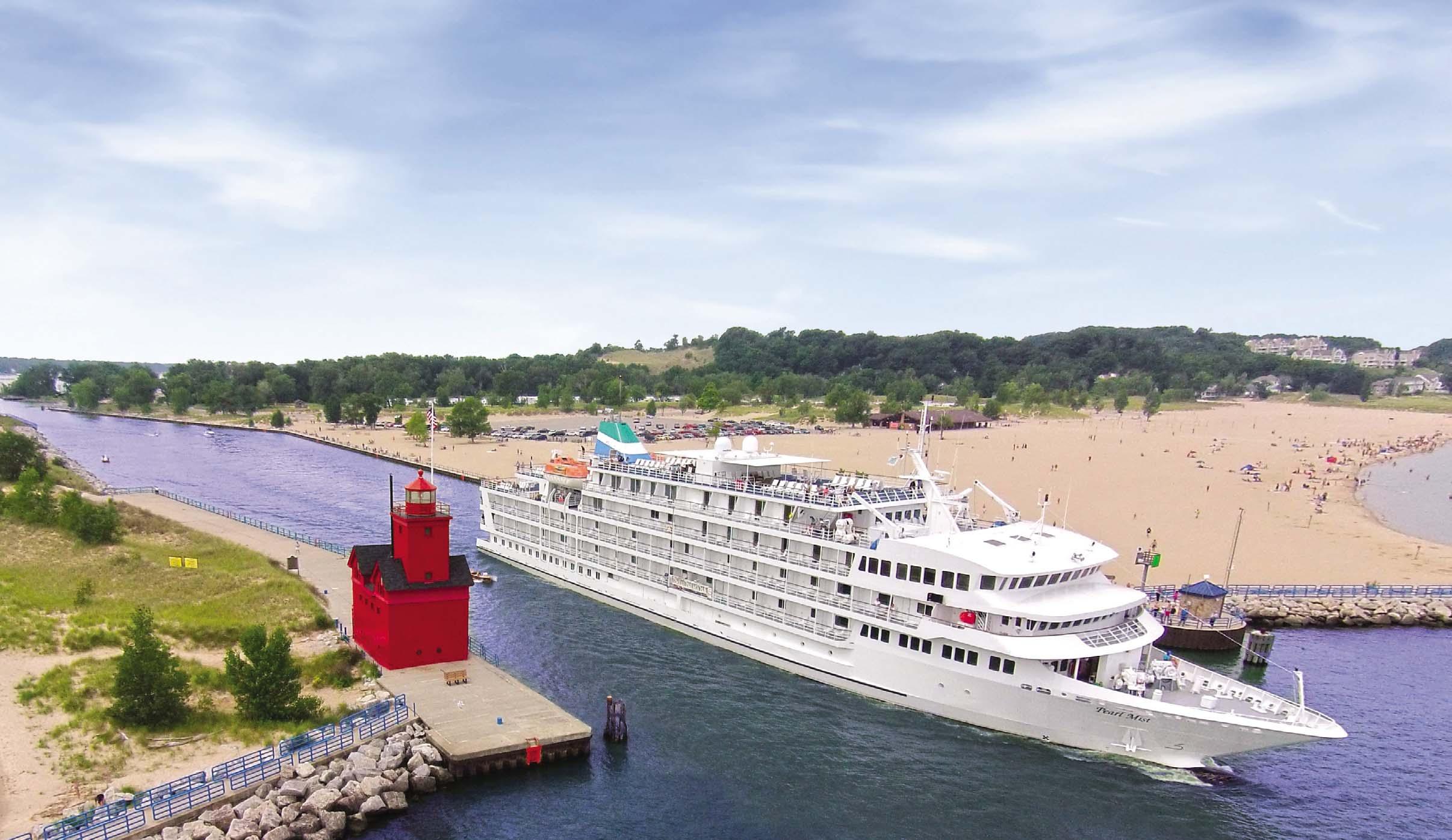









In troubled waters, it helps to remember the courage of a remarkable family friend.
almost drowned three times before I turned 5. The first near-miss happened when I was only 3 and my father was carrying me out to the big surf, as I had begged him to do. An enormous wave tore me from his arms and into the crashing sea. It felt as if I had been propelled into the spin cycle of my mother’s washing machine, hitting the ocean floor and then bouncing upward again, over and over. My father tried to grab me, but a lifeguard got there first and pulled me to safety. It took my mother weeks to get the sand out of my scalp and my bathing suit.
Then came the riptide incident at Shelter Island. I was paddling in the shallows when I realized that the shore was drawing farther and farther away from me. How could that happen? I wondered. As hard as I tried, I could not change direction. My mother was on the shore, waving her arms and calling me to come in. Another lifeguard was on the way, and pretty soon we had joined my parents on the beach, where they hovered over me anxiously.
Finally, there was the time when we were all swimming in my aunt’s pool, and I was in a plastic ring meant to keep me safe. But while the adults were standing knee-deep in the water, talking intently, I slipped through the ring—so easily, as if it was meant to be. All the grown-ups rushed to my rescue. I coughed and spat out the taste of chlorine, everyone patting me on my back and later taking me out for ice cream.

You’d think I would fear the water after that and never again go swimming. But then we moved to a house next door to a neighbor who had a large pond. My sister and I called this neighbor Uncle Jack, even though we were not related. The pond was spring-fed and 16 feet deep, and the water had a beautiful green color to it. All summer we could be found swimming in the big circle of its embrace. No waves threatened us.
Uncle Jack was the local sheriff, which gave him some distinction. When on duty, he wore a badge and a special broad-brimmed hat, which sat on his head at a tilt, as well as a stern look that could be fearsome. He had grown up in rural Georgia and had only one arm, with just a stump sticking out from his other shoulder. As a boy, Uncle Jack had taken lunch to his father at the cotton mill and, while walking past the spinning wheel in those pre-OSHA days, gotten his sleeve caught in the big machine. He was young, maybe not yet 10, so he had many subsequent years in which to teach himself to do things with one hand, one arm.
During Uncle Jack’s workday, the stump was hidden by the sleeve of his jacket or shirt, but when he swam with us it was unavoidable—just a swirl of underarm hair and the results of what must have been a primitive surgery in the early 1900s. It took me two years before I could look directly at it.
I used to watch Uncle Jack from the kitchen window as he worked on his little “plantation,” as he called it. What he could do with one arm was incredible in my eyes. He could cut down trees, drive his tractor, and rake leaves like a well-oiled machine. There was no mention of handicapped or disabled . He was not, he seemed to be saying, any different from anyone else. Sometimes I would hold one arm behind my back and try to do even the smallest tasks with the other. There was no way. When difficult times come and riptides pull me in the wrong direction, I think of Uncle Jack the sheriff. I know that some feared him, but I loved him, because of what he could do.
















Introducing the ridiculously comfortable Hubbard Fast. High performance cleverly cloaked in style.


he shortening of the daylight hours takes me by surprise every autumn, perhaps in part because it comes at precisely the wrong time for us. In no other season is there more urgency in the air; September and October offer the last chance for reliably good (or at least not horrendously bad) weather in which to check off the list of tasks we’ll never reach the end of. Indeed, it often seems as if we add new tasks faster than old tasks are completed, and it occurs to me that were I a mathematician, I could probably develop an equation to demonstrate the precise disparity between the rate of adding tasks and the rate of completing tasks. For some reason, this depresses me.
Truth be told, I am not much of a list maker. I find them an unwelcome reminder of all that remains undone—and besides, does not the list itself become yet another chore demanding my attention? Must I now add “make a list” to my list? And oh, how many lists have I lost, how many precious hours of my too-short life frittered away frantically searching until the list is finally plucked from the wallet pocket of my rainsoaked Carhartts, the ink having succumbed to the moisture so that Finish cow gate looks something like Fin is sow mate. (My son Fin does not find this nearly as humorous as I do.)
My wife, Penny, on the other hand, is a list maker of unequaled commitment and expertise. She could teach university-level list making. Her lists never stray: They are like perfectly trained dogs, always at her beck and call. Furthermore, they are reliably legible, printed neatly onto the backs of junk mail envelopes pulled from the recycling bin (selection of proper list-making materials would come in week two of her class).
In an effort to stockpile enough snacks to last their boys through winter, the Hewitts slice and dry foraged apples in autumn.
Most amazing to me, Penny has an uncanny sense of the proper lifespan for a list; she knows when to give up on one and begin another, even if this means transferring tasks between them. Me, I just keep halfheartedly scrawling on the same old list, my printing growing smaller and smaller as I run out of space, until I give up and cram the damn thing into the back pocket of my work pants, where it is forgotten until I am afflicted with the nagging sense that there was actually something important on that list, something I really need to accomplish before the cold settles, something I cannot quite recall, but if only I could find … ah, there it is. Fin is sow mate. Now what could that have been?
At least the weather is on our side. Indeed, it transcends superlatives: day after day after day of azure-blue skies speckled with lazy drifting clouds, a pattern that is interrupted by showers just often enough to keep us from falling into the same drought that’s afflicted much of the Northeast.
On these halcyon mornings, I milk in a T-shirt just as the sun is clearing the copse of spruce to the east. Milking outdoors, kneeling on the ground, we are subject to the vagaries of weather. Halter, fence post, cow, bucket. Sometimes I wish for more commodious infrastructure, but not as often as I’m glad to not have it, because if I had it I’d use it, even on mornings as fine as these—the early slanting light, the smell of sun on cow, the laying hens gathering around me
Since 1996, Good News Garage has provided more than 4,600 refurbished donated vehicles to New England families in need.
“Thank you for this opportunity to help myself. This car makes it easier for me to get to the babysitters and to work. Thank you for helping my family!” FREE TOWING & TAX DEDUCTIONS

Donate online: GoodNewsGarage.org
Donate toll-free: 877.GIVE.AUTO (448.3288)

And oh, how many lists have I lost, how many hours of my too-short life frittered away frantically searching for them?
as if this might finally be the morning I do something other than shoo them away. Forever hopeful, those hens. A guy could learn a thing or two.
On the days I’m not checking off tasks on the list I can’t find, I work at a farm a mile down the road, alternating between running our small excavator and laboring on a variety of building projects. The farm is owned by our friend Tom; we drive past it almost every day. It’s situated precisely where the road narrows and curves through a stand of old mother maples. The narrowness of the road, the corner, and the proximity of the big trees compel me to ease off the gas, but truth is, I would do so anyway because there’s almost always an excuse to crane my neck: the muscle-bound draft horses, grazing a roadside paddock; or Tom on the tractor, flipping
a towering pile of compost; or the big flock of hopeful laying hens, clucking and pecking and scratching their way around the barnyard. Sometimes Tom’s younger daughter and her friend sell lemonade at the side of the road, and I stop and give them a dollar for a 25-cent cup because I’m a sucker for a lemonade stand on a scarcely traveled gravel road run by a couple of 8-year-olds who wave their arms frantically and shout, “Stop! Ben! Stop!” when I approach.
I like working at Tom’s farm. In part, I like it because I often work with the young man who lives there, in a single room adjacent to the haymow of the barn. His name is John, and he’s 24, and when he’s not working on the farm he logs with the horses grazing that roadside paddock. He smokes hand-rolled cigarettes and keeps a bushy beard that goes smashingly with the grease-
stained suspenders holding his pants in place. John is young enough to be my son but seems to already have found his place in the world. He tells me he does not aspire to have a farm of his own; he is happy with his life as it is, the day-in, day-out labor of the farm, the single-room apartment, his team of horses, and the occasional logging job. He thinks of finding a woman who can be similarly content with these modest circumstances (and if she, too, rolls her own, all the better). He realizes this might be a challenge, but he can be patient.
John and I work well together; we are silly and somber in equal measure, and we both like listening to classic rock on the radio. Never, ever underestimate the value of a workmate who likes the same music as you do—though in all honesty I really like classic rock only in particular circumstances, such as when I’m installing
‘hoo-guh’) means “a sense of being cozy or comforted.” Chilton’s Hygge table is designed and built in Maine from solid ambrosia maple, known for its rich, distinctive wood grain. What could be cozier?

clapboards on the gable ends of an old barn, and it’s raining a bit and just cold enough to make me wish it weren’t raining, and I can smell the smoke spiraling off the lit end of my workmate’s hand-rolled cigarette.
I like working at Tom’s farm also because I like the work itself. I am not an especially skilled builder, but I’m competent enough to imagine that I know the pleasure a skilled builder must feel when driving a nail into a piece of wood that fits just so . And though I’m a tad loath to admit it, I sort of like working with machinery, and in particular the excavator, which is a remarkable piece of equipment, capable equally of destruction and production. I take satisfaction in operating the excavator with maximum precision, and sometimes I find myself calculating how many hours it would have taken to do the job by hand, and I marvel anew at the ingenuity of our species.
I do not normally worship at the altar of efficiency, and I understand all too well the ways in which laborsaving devices undermine the sheer pleasure of manual work, along with the experiences and knowledge it confers—not to mention the relationships cultivated around shared work. My time on the excavator is always solo, absent the jobsite banter I value so much. It’s just me and the steady thrum of the diesel engine. Yet it is truly impressive what the machine can accomplish, and to spend less than an hour excavating a water line trench that would have taken me three or more days (and an extra-large bottle of Tylenol) to dig by hand seems worthy of acknowledgement.
Finally, toward the end of October, the fine weather breaks, and on the 23rd we awaken to wind-driven snow, four inches on the





ground and mounting, the cows on the wrong side of their sagging fence, browsing the garden for remnants. It’s not yet daylight as we drive them back to their paddock, but the accumulated snow lends its particular luminescence, and we do not need head lamps.
Later, I lay flakes of hay to kneel on for milking, a little prayer mat upon which to repent my sins one squirt at a time. Locked my sister in the closet. Squirt. Snitched one of my father’s Lucky Strikes. Squirt. Snitched another. The snow melts into the heat of Pip’s flanks and the sleeves of my wool jacket. No T-shirt today. No early sunlight falling across my cow and me.
I milk fast, fingers cold, until the bucket is full and my hands ache from the effort. I release Pip from her halter and drape it over the fence post. She ambles back to her mates. I pick up the bucket and walk back through the new-fallen snow to mine.
Apartment and cottage living at Piper Shores offers residents fully updated and affordable homes, with all the benefits of Maine’s first and only nonprofit lifecare retirement community. Located along the Southern Maine coastline, our active, engaged community combines worry-free independent living with priority access to higher levels of on-site healthcare—all for a predictable monthly fee.









atch out! Sand!” I hear the woman I’m riding with warn me at the very moment my bike slides out from under me. Even as her words float into my ear, I’m down. Luckily, I’m more shocked than hurt, and it’s only later at our (astonishingly beautiful) oceanside campsite that evening that my brain truly registers the fall. The car behind me didn’t hit me, and the merging road immediately in front of me was empty. My bike is intact and— discounting a scraped knee—so am I.
It’s Sunday, day 1 of BikeMaine 2016, and I have started with a bang, or at any rate a splat.
The annual seven-day ride is organized by the nonprofit Bicycle Coalition of Maine as a way for participants to “explore the people, places, culture, landscape, and food of Maine.” This is the third consecutive year that my sister Carolyn and I have signed up. I’ve lived in Maine just three years, but my job as a newspaper editor requires that I know the place like an old-timer. The appeal of getting to know it at the leisurely pace of a bicycle outweighs my ever-present anxiety about my ability to ride 60-plus miles a day.
A day earlier, Carolyn and I and 398 other cyclists from across the country and around the world congregated on a sunny September afternoon on the Schoodic Peninsula, the less-traveled part of Acadia National Park. We were surrounded by iconic Maine scenery: scraggy pines, crashing waves, rock-strewn beaches. Also hundreds of
bicycles, piles of gear, and many rangy, muscular 50- and 60-somethings. More than a third of us are repeat riders—which tells you something. The youngest rider, I later learn, is 26; the oldest is 79.
Each year, BikeMaine focuses on a different area of the state. In 2016 the route zigzags from the Schoodic Peninsula to Eastport and back again, covering 354 miles in one of Maine’s more remote, impoverished, and—I am about to discover—ravishing regions. Though I live in Portland, I’ve never been here before.

The Bicycle Coalition of Maine launched BikeMaine in 2013 to promote bicycle tourism as a path to local economic development. Staffers work with the communities along the route, plotting the off-the-beaten-path rides and integrating everything local: food and drink, farms, libraries, historical societies, conservation organizations. By the time we bikers arrive, these villages are as intrinsic to the experience as the cycling.

Day 1 brings a breathtaking ride, despite the scary tumble and an even scarier fast-moving storm, the only bad weather in a week of blue skies. Before I know it, I’m in Jonesport, the day’s destination. Sawyer Memorial Congregational Church—a church of the elegantly simple, white-steepled New England sort—has opened its doors to us. Carolyn and I snack on homemade molasses cookies in the church basement and check out a craft fair on the lawn. Then a member of the congregation steers us to the sanctuary, where the church organist sits at the big pipe organ previewing the Christmas service by candlelight just for us. Joy to the world indeed.
On my desk as I write this sits a miniature lobster trap, a souvenir given to each and every rider by the town of Machias, where we camp on day 2. The town manager itemizes the trap components as we polish off barbecued chicken, kale salad,
green beans, baked potatoes, and hermit cookies (all meals and snacks are included in the $875 price). She explains that inmates from the Downeast Correctional Facility made the traps from Maine balsam wood, while she herself made the blue soap lobsters, which smell like blueberries, a nod to the region’s signature crop. The traps also hold dollhouse-sized scrolls that tout Machias’s attributes, summarizing the town as “unique as a rare blue lobster.”
BikeMaine can feel like a happy roving summer camp for grown-ups, and, as at camp, we quickly settle into a routine: There are blueberry bogs and blueberry crisps, and many (sometimes too many) short, steep hills with many (sometimes too many) Maine-made Bixby bars to fuel the climbs. There are waving schoolchildren along the road, then ringing cowbells and applause when we reach camp. The lines for hot showers, post-ride beer gardens, and communal teeth-brushing under the stars are reliably sociable. Bedtime is early—“Nine p.m. is biker midnight,” a rider tells me—and we rise early, too. Because I am slow, a passing cyclist’s “On your left” becomes the rhythm and refrain to which I ride.
The Down East beauty, though, is never routine. On the days when my back aches, my legs protest, my lungs huff, and I am wondering what I could have been thinking to spend my vacation like this, I remind myself to look
There’s a lot of harmony between what I make every day and where I live. I need a place to stretch out, feel relaxed. Fuel my passion. Here, you can be open to new ideas and are completely free to explore them. I couldn’t do this in a big city anymore. There are too many distractions. But here, in this fantastic place, I can be creative and follow my own way. It’s a place where I proudly proclaim every morning, this is me.


















































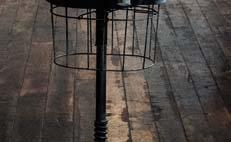



























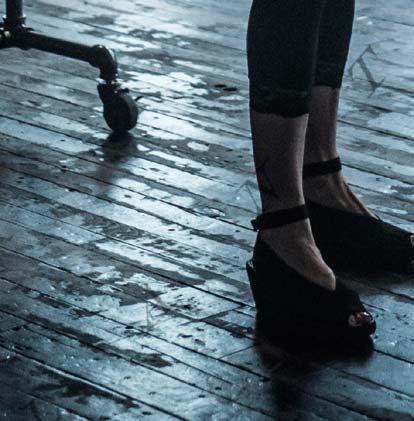






















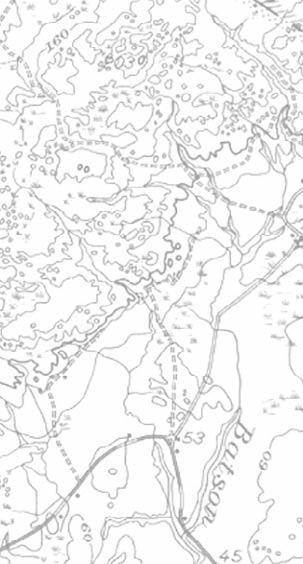




 JOURNEY NO.21 BEACHES REGION
JOURNEY NO.21 BEACHES REGION
around. Spectacular! Miraculous! Magical! Awesome! I write all these words, with all these exclamation points, in my trip diary. Our campsite on private land at Kelley Point is so beautiful that I consider staying there and abandoning the ride. The stunning route into Eastport has me contemplating a move Down East. Awesome in the true sense of the word , I scribble by flashlight in my tent after we pedal to Reversing Falls Park in Pembroke.
We snap out of our collective routine one evening in Eastport. Two riders in cycling shirts and shorts who have lived together for years casually stand up in the big communal tent where we’ve been eating a tasty salmon dinner. A rabbi materializes and, before a cheering congregation of bicyclists, they pledge their love. The most stress-free wedding ever, the bride tells me later.
On day 5, we ride through blinkand-you’ll-miss-it Dennysville, one of many villages in which the cyclists outnumber the residents. I hop off my
bike to take in the Audubon exhibit at the Academy Vestry Museum, quite possibly the most charming museum in Maine. It has opened specially to accommodate us, and inside I learn that John James Audubon preceded us Down East by almost two centuries.
The next day, in even-smaller Whitneyville, a 70-something gentleman named Skip happens to hear me ask about the local library, a former schoolhouse. Skip locates the library key and gives me a private tour, spinning tales of the school it had been in his boyhood, when there was no plumbing or electricity and the reward for good behavior was getting to ring the big cast-iron school bell. The money the town has raised by feeding the cyclists will go toward renovating the building, he says.
BikeMaine 2016 ends with an exhilarating ride on perfectly paved

park service roads into Acadia. There’s one last excellent lunch, then I’m lugging dirty gear to the car, loading up my bike, and hugging new friends good-bye. When I get home, flush toilets and cotton sheets briefly turn my place into the poshest of four-star hotels. It’s nice to wake up without worrying about rain. Still, for a week or two I struggle to make the transition from two wheels. In the car, I find myself fixated on hills and fretting over cratered road surfaces. And then, gradually, my BikeMaine adventure recedes. My days shift from sweating hills to sweating deadlines. Though I sit for hours, it’s on a swivel-tilt office chair, and the glow comes from a computer screen and not incandescent skies. Another year will pass before I am on a bicycle saddle again, riding BikeMaine, with the state unfolding and revealing itself inch by inch and mile by mile as I roll by.
For more information on the BikeMaine tour, go to ride.bikemaine.org.


n our last trip through southwestern New Hampshire, we had many opportunities to ask directions in both the larger towns and offthe-beaten-track hamlets. Out of curiosity, we checked our odometer against the local estimates in hopes of establishing the exact distance of that old chestnut, the country mile.
We found that the average country mile is more than twice as long as the standard mile: 2.3 standard miles to the country mile, to be precise. But as this figure is subject to change without notice, we postulate the following:
1. Country miles get shorter as they increase in number. One country mile may equal three standard miles, but three country miles will be closer to six miles than nine. If you’re lucky.
2. The smaller the town, the larger the mile. In Manchester, a mile is a mile is a mile. In Rindge, a mile is two miles or probably three or four. Usually.

3. A winding line is just as short as a straight line between two points in the country. No one needs to know how far it is to the next town “as the crow flies,” and the shopkeeper giving you directions knows this. The road he sets you on is The Road, if not The Best Road, and is therefore the shortest way, regardless of what the crows are doing.
—Adapted from “How Long Is a Country Mile?” by David N. Wyman, October 1975

Stephen King (born September 21, 1947, in Portland, Maine). Following on the heels of his 70th birthday this year—and the release of the big-screen adaptation of his novel It—Halloween seems a fitting time to celebrate Maine’s horror master. Just don’t do it at his Bangor mansion, please: To cut down on holiday crowds at their gate, King and wife Tabitha have been known to publish ads in the local paper saying they would not be home on Halloween night.

“We may only feel really comfortable with horror as long as we can see the zipper running up the monster’s back.”
11









Number of acres bought in New Canaan, CT, by architect Philip Johnson in the mid-1940s

1949
Year that Johnson completed his so-called Glass House, which became his second home after his New York City residence
Three Number of years he spent designing a transparent home for his property, inspired by Ludwig Mies van der Rohe’s Farnsworth House in Plano, IL
$60K
Cost of the Glass House project (including a brick guesthouse)
1,792

Size in square feet of the Glass House, comprising one bedroom, one bathroom, and a kitchen/living area
1997

Year that the Glass House property earned National Historic Landmark status


Ninetyeight Johnson’s age when he died in his sleep at the Glass House, in 2005




14

Number of Johnsondesigned structures on the now-49acre property, including a studio, sculpture and painting galleries, and a “ghost house”
130,000
Estimated number of visitors who have toured the Glass House property since it opened to the public in 2007
n some level, the success of every relationship is dependent on the couple’s ability to pick each other up when they are down. Westbrook, Maine’s Elliot and Giana Storey, winners of the 2016 North American Wife Carrying Championship at Sunday River Resort in Newry, Maine, have taken this to something of a literal extreme.
“When I first met Elliot, he would talk about this ‘wife carrying’ thing and I had no idea what it was,” Giana recalls. “Then we married and eventually gave it a shot, and it was fun.” For the uninitiated, a wife carrying contest is an obstacle course run by a male competitor while carrying his female partner. The official rules state that “the wife to be carried may be your own, or the neighbor’s, or you may have found her further afield.”

The official course is 278 yards long, with two dry obstacles and a water obstacle. There is no set way in which
the wife must be carried, but the most common is the so-called Estonian carry, in which the wife clings upside down to the husband’s back. “When he runs, he needs his arms,” says Giana. “My goal is to be a good jockey. They call it saddling up—the girls just need to be fit and hold on, but that’s not as easy as it sounds. My sister says I have good koala bear skills.”
Elliot is a big, powerful guy who competes in strongman events. Giana is an aerobics instructor and cake maker— professions that may sound as if they shouldn’t go together, she admits, “but I’ve always loved baking and I needed to work from home.” Elliot’s leg strength is a major reason for their success. “He can lift anything,” says Giana, who acknowledges that her own biggest strength, cardiovascular fitness, isn’t much use in the race. “I always want to take over the cardio section for him. He has the power, but I’ve got the wind.”


“See how this woman has her arms locked in around his chest?” Elliot says, pointing to a photo. “That’s right around his heart and lungs. As soon as he starts to run, she’s going to be choking him out.” When Giana is in position, she locks in by using her hands to grip her own legs. “I’m barely touching him at all. My goal is to stay tight like a backpack, so he has mobility, and I can shift and compensate if he stumbles.”

In the championship race, Elliot cleared the giant log hurdle at something close to a full run. (Most competitors sacrifice their momentum to clamber over, for reasons that become obvious when we watch a video of his leap. “That was so close to my face!” Giana marvels.) “We talked about it and practiced,” Elliot says, “but you don’t know how it will go until you do it. You get one chance. We needed that
edge, because on the straightaways I’m not the fastest guy.” Indeed, Team Storey opened a big lead coming out of the log hurdle, but the second-place team, from Virginia, closed strong and was just 3.5 seconds behind at the finish.
“The whole race lasts about a minute,” Elliot says. “It’s amazing how spent you can be after a minute of going 100 percent.” Giana takes a beating, too. “My quads slam on his shoulders, and it really hurts,” she says. “But Elliot is really spent. Two years ago he wouldn’t even speak to me after. This year he was so cranky that I couldn’t stop laughing.”
“It’s a crazy thing to do,” says Elliot, “but our kids think it’s awesome.” For winning, the Storeys took home Giana’s weight in Goose Island Oktoberfest beer (11 cases) and five times her weight in cash ($665). Normally a very fit 145 pounds, Giana gets down into the 130s for the race; even so, she was the heaviest woman ever to be part of a winning team, making theirs the competition’s biggest prize ever. “I’ve never been one to be precious about my weight,” she says, and laughs. “I guess that’s a good thing.”

Team Storey’s win earned them a berth in the world championships, held in Finland every July. Though they had hoped to be the first Americans to bring home the title, they missed a spot on the podium by fractions of a second, finishing fourth overall. They were, however, the top-finishing “actually married” team. “We aren’t disappointed,” Giana says, “because now we’ve been through the course, and we can strive to be better next year.”
This year’s annual North American Wife Carrying Championship will be held at Sunday River in Newry, Maine, on October 7.
When was the last time you considered “60” as old? Today’s 60- and 70-year-olds are running marathons, starting second careers, and generally bashing the traditional idea of “aging.” Yes, it’s finally happening —our youth-focused culture is acknowledging that there is a lot of life in what many call “the third chapter,” or retirement.
Part of the reason for this trend is the “silver tsunami” that is closer every year. By 2030, we will have more 65-year-olds than any other time in U.S. history. In addition to the sheer magnitude of people, this group has a longer life expectancy than any prior generation —and will live longer with more complex diseases,
thanks to improved medical care. This means their medical costs will be greater.
Not only that, but this group of retirees has greater expectations of their retirement than any prior generation. After all, boomers have redefined every other social institution they experienced; from marrying later, having children later, moving more often, etc.


Today’s retirees are significantly more active than any previous generation. They are physically and mentally more active, and they want to travel more, start new projects, and find new purpose in life.
To learn more about CCRCs, start by investigating these communities.
Unlike their grandparents, this group can’t count on their children living around the corner. Most adult children are more far-flung than ever, sometimes living across the country. No longer is there the reliable daughter across town—today she may be heading up a company in California. So the traditional 1950s family support model that served for the previous generation is becoming defunct.
Given that people are living longer, and seeking more from their retirement years, and given that social dynamics have changed, how can someone stay independent, and still ensure their health care is covered?
There is one solution that has been quietly operating for the past 100 years in the U.S., whose structure and practices are uniquely positioned for this generation. Continuing Care Retirement Communities (CCRCs) could be described as “retirement communities with benefits.” There are 1,900 across the country, but just a handful in New England, and they are often misunderstood.
CCRCs, which are also called Life Plan Communities, provide three levels of care: independent, assisted living, and skilled nursing. The critical differentiator is that people enter the community when they are independent, and can live safely on their own. They enjoy active, independent lives, free of the worries and time consuming work of home maintenance.
With the addition of housekeeping services, inside and outside maintenance, transportation, a meal program, fitness activities, and 24-hour emergency call service, residents have more time to enjoy life, meet friends, and pursue new interests. They create fast friendships, and enjoy the benefits of community living. Meanwhile, they have the assurance that if
and when their health needs change, they can transition within the community.

Although CCRCs look like beautiful retirement communities, complete with gyms, pools, libraries and arts rooms, moving there is not a real estate decision. CCRCs are an insurance product, and they are governed by each state’s regulatory body. Therefore, a percentage of a resident’s entrance fee and monthly service fee are considered a tax deduction as a prepaid medical expense—a real advantage for many.
Most CCRCs in New England are not-for-profit, and offer a Benevolence Clause, which states that if a resident has outlived their assets (and has not intentionally impoverished themselves) they will not be asked to leave due to lack of funds. The pricing varies by organization, but on the whole, the larger apartment or cottage you prefer, the more costly the entrance fee and monthly service fee.
Within CCRCs there are contract differences. Some are Type A, which are all-inclusive plans, meaning that as you move from one level of care to the next your monthly fee does not increase (except for two additional meals per day). Type B or modified contracts offer targeted insurance, typically providing a portion of your health care fee at a discount off of market price, when you need health care. Type C contracts provide independent living at a lower rate, and then offer health care at full market rate.
The solution that CCRCs offer to the next generation of retirees is clear—peace of mind for you and your family, a home where you can be as independent as you like, where you can build a community of friends, secure in the knowledge that if anything changes in your health down the road, you have chosen where you will receive your care.

TRANSFORMS AN OVERGROWN 18TH-CENTURY CAPE INTO A POLISHED WORK-AND-LIVING SPACE.
he house sits in a cup of sunlight at the end of a two-mile dirt road that winds past old sheep meadows. It sits with assurance and composure, a fact of the landscape. In 1784, this postand-beam Cape in Richmond, Rhode Island, was built on the road to the mystical-sounding village of Usquepaug, about 10 minutes away; today it is Carolyn Morris Bach’s home and studio. The house has sat here, in this clearing, longer than almost anything around it. It is a world unto itself, defined by clusters of birches and red sugar maples and a 200-year-old chestnut tree that leans toward the sunroom like an old friend. The corncrib, also c. 1784, was reclaimed by Carolyn from a raucous tribe of red squirrels. Graceful walls of Connecticut flat stone meander around the blueish-gray home; elsewhere, indigenous-stone walls trail off into the woods. “I call them Fred Flintstone stone walls—round and lumpy,” says Carolyn, a slender artist who moves through the house like a dancer on a familiar stage.
Near Bach’s workbench you’ll find this collection of “things of inspiration,” which includes, on the top shelf, a brush she made from a deer antler found on a walk in the woods.
OPPOSITE : An owl pendant Bach created from cow bone and detailed with sterling silver and gold.


She sparkles when we talk about the house, “only 20 minutes from the raw Atlantic.” It is ideally sited for someone who makes intricate, beautiful jewelry that is sensitive to the natural world: “To be able to have the woods, and to know that the ocean is out there—I don’t know if you can improve on that.” At the same time, it fulfills the needs of an artisan whose work appears in the Boston Museum of Fine Arts and is cherished by the likes of Madeleine Albright (who featured one of Carolyn’s brooches in her book Read My Pins). T.F. Green, in Warwick, is “an amazing airport,” and Richmond is less than 15 minutes from Amtrak, offering an hour’s ride to Boston or three hours to Manhattan.
I originally came to see Carolyn for “Open Studio,” Yankee ’s regular series of portraits of New England artists. I was prepared to enter the tiny world she inhabits, a world of images that are mysterious and elemental. Foxes, ravens, moon goddesses; creatures made of carved bone, moonstones, and golden twigs. Miniature works of art that her collectors often refer to as talismans. As a matter of course, most studios reveal something of artists and their craft. But in this case, Carolyn’s entire home, where she’s lived since 1991, breathes with the same sensibility imbued in her jewelry. “My life as an artist and this place are completely interwoven,” she agrees.
As we walk through the old Cape and into the newer ell, arcing behind like a scorpion tail, nature appears everywhere. Deer antlers picked up on walks through the more than 65 acres that she owns. Barred owl feathers parading like exclamation points atop a doorway. Shells displayed
OPPOSITE : Melding the antique with the artistic, the dining room features primitive furniture from the early 1800s lit by a wrought-iron chandelier.
LEFT : In one of the front rooms, an original granite hearth becomes an eyecatching display space.

BELOW : A 19th-century apothecary case holds bird’s nests of all shapes and sizes that Bach has collected over the years.

in a bathroom, tucked into the slots of an antique wooden fixture that once held room keys in an old Italian hotel. “I look at things literally—bathroom, water, shells,” she says with a smile. She’s always been fascinated by things with wings; there are bird’s nests in every nook. “When I’m out walking, the property gives me gifts.”
Carolyn’s life as an artist began even before she attended the Rhode Island School of Design. “I studied ceramics at a progressive high school in Michigan,” she says. “I really had no interest in jewelry, but my art teacher suggested I try it. It was as if I was meant to make it. That’s something that people say about my work, too—it looks effortless. And in a way, it is. I don’t make mistakes. It’s usually right the first time.”
Clear vision is important when you’re working with precious stones and metals. But every homeowner knows it’s absolutely vital in renovation, where second-guessing can demolish a bank account. By the mid-1980s, Carolyn had begun to hit her stride as a crafter of tiny talismans. Her interest in Inuit artwork, sparked by a 1981 show at the Smithsonian Institution, had evolved into fashioning her own mystical little creatures. “And once I started doing figurative work, it just took off,” she says.
She and her then-husband were living at the time in a spacious Greek Revival in the center of Carolina, Rhode

Island. “I wanted to be able to look out of my window and see no houses, only nature,” she says. “We saw a little blurb about this house in the local paper and came to look at it. It was so overgrown, a real wreck. I didn’t know if I had the heart to renovate another house, but really, I fell in love.”
Love begat labor. The original center-chimney Cape is dominated by three massive granite fireplaces on the ground floor, one of which was hidden beneath vinyl paneling. The stones are staggering in size. In the low-slung dining room, a square bread oven punctuates a fireplace blackened by centuries of use. Particleboard ceilings were removed to reveal old beams, beautifully preserved under the layer of ugliness. “I wanted to cry some days, it was just such a mess,” Carolyn remembers.
The dark kitchen—an addition from the early 1900s—was gutted to the studs and opened to the peak. Velux skylights now overlook a peaceful blend of pale pine cupboards and terra-cotta tile floors. High shelves display baskets, teapots, and doll-sized Adirondack chairs. The effect is masterful: Where many collections feel cluttered, this is pared down, painterly. A still life everywhere you look. “You don’t really notice they’re there, but when you do, it’s like, ohhhh,” Carolyn says, looking up. “I don’t know anyone who isn’t enamored of little chairs.”
As for the Mexican floor tiles: When she asked her tile man about the pile of accumulating rejects, he showed her their dog and chicken tracks. “He thought they were flawed,” she says. “And I said, ‘No, no, I want them in the floor.’” She points to an espadrille print. “Apparently as the clay was drying, all sorts of stuff was walking by. What could be better than dog paws?”

“THERE IS NOT ONE INCH OF THIS HOUSE THAT HASN’T HAD MY DESIGN AND MY MARK ON IT.”
 Italian and Portuguese pottery lends a splash of color to the kitchen, which is anchored by a floor of handmade Mexican tile.
Italian and Portuguese pottery lends a splash of color to the kitchen, which is anchored by a floor of handmade Mexican tile.
Meanwhile, as the beauty of the old house was emerging, there was new construction going on just a few steps away. Two studio rooms—one for storing materials and the other outfitted with tiny tools, like a fairy-tale workshop—were designed and built specifically for Carolyn’s furniture. “This is my paint box,” she says, opening a long drawer in an old printer’s cabinet to reveal a tumble of stones. Petrified sycamore looks like barred owl feathers. Flares of petrified manganese oxide in quartz resemble minuscule leaves. And rutilated quartz—“Each of those lines is a different mineral,” she explains, pointing at the golden filaments in the stone. “Doesn’t it look like spun straw?”
In the adjacent workroom, Carolyn hammers slender gold twigs, carves tiny fox faces from cow bone supplied by a dairy farmer in Little Compton, and fashions wings for a deer goddess. “This is where I spend most of my life,” she says. Here, too, the surroundings are spare and tranquil. “I couldn’t work in an ugly space. Ever since I was a little child, things that are ugly upset me.”
A few years after she moved in, Carolyn joined the house to the studio with a long, angled room that she calls her office. Paid for with “gold scrap,” it is flooded with natural light, thanks to the bank of windows running along each side, and filled with design books, Japanesestyle sculptures from her days at RISD, and a few choice pieces of furniture, like the 1840 partner’s bench from Ireland. “Can you imagine trees being that big?” she asks, stroking the massive width of the desk.
LEFT : Modern additions complement the house’s historical charm, as do the classic stone walls and mature hardwoods.

BELOW : Bach in her studio, where she blends her love of the natural and the mystical with jewelrymaking skills honed over the past three decades.

“You know,” she says, “I’ve touched every square inch of this house. There is literally not one inch that hasn’t had my design and my mark on it.” As we stand in the office, with views into the old Cape one way, a glimpse of her studio the other, Carolyn’s clear vision is apparent on all sides.
It’s there in her jewelry, too. “I thought I would reinvent myself last year by focusing on gemstones,” she confesses. “People loved the work, but one woman came up to me at a craft show, pointed to a pair of opal earrings, and said, ‘You know, these are really beautiful, but any jeweler could do this.’ And then she walked over to one of my weirder goddess pieces, and she goes, ‘Only you can do that.’”
Carolyn nods slowly. “And that was like ... the universe sends me messages when I need it. I just needed to hear that.”
Prices range from $400 for a pair of simple silver earrings to $12,000 for a major necklace in gold. For more information, call 401-364-0623 or go to carolynmorrisbach.com.
E.B. White wrote some of the most enduring words in American literature while living on this

Though chickens and sheep have given way to flower gardens, this North Brooklin, Maine, farm still looks much as it did when its most famous occupant lived here.

40-acre-plus saltwater farm in Maine. For the past three decades, the Gallant family have made it their own. Now, they hope a new family will love it the way they have.
BY MEL ALLENLEFT : E.B. White, shown in Maine in 1977, loved the privacy that small-town life afforded him. For a series of New Yorker essays he filed from North Brooklin, he used only the dateline “Allen Cove.” That way, he said, “no one will be able to find [me] except by sailboat and using a chart.”

BELOW : The rope swing made famous in White’s 1952 children’s classic, Charlotte’s Web

he swing still hangs by the barn doorway. There may or may not be a spider spinning her web in the darker corners of the rafters on this early July afternoon in North Brooklin, Maine. Allen Cove, a small inlet in Blue Hill Bay, sparkles in the sunlight. There are gardens of flowers so beautiful that the eye goes to them even before settling on the sturdy white clapboard farmhouse that has stood here for more than 200 years.
I knock on the farmhouse door. No answer except for the bark of a dog. A man who I soon learn has been the caretaker here for over 15 years is working in a shed by the barn and calls out, “Just walk on in, they know you’re coming.”

Robert Gallant is waiting inside, and I follow him to a breezy sunlit room that looks out on a patio, gardens, a pond, and a sweeping view of the bay and the distant mountains of Acadia National Park. He and his wife, Mary, have been married nearly 60 years, and for more than half of those years they have traveled from their South Carolina home to spend summer and fall on their 44-acre saltwater farm, one of the loveliest and best preserved in Maine. They arrived here only a few days earlier, and Robert greets me in a voice with the slow, easy inflection of the deep South. He’s led a vigorous life, with a highly successful business career as a managing partner of the GallantBelk department store chain and a property developer. But he’s on the back end of his eighties now, and lately he’s had a rough go of it. His right wrist is heavily wrapped after a recent fall, and he’s reluctantly coming to terms with what he can and can’t do anymore. I learn all of this over the next few hours as I hear Robert’s and Mary’s stories, which speak to a deep love for everything my eyes can see—as well as those things that undoubtedly only theirs can. There is a bittersweet feel to
our time together. It’s clear they do not want to leave. They know they should. It is time, they say, to downsize to one home and live closer to their four children and seven grandchildren, who remain in the Carolinas.
Mary enters the room. Within moments she connects the threads of their story with those of the previous owners, E.B. and Katharine White, who bought the farm in 1933 and moved here full-time four years later. Katharine died in 1977, her husband in 1985. “I’m sure you want to do the Charlotte’s Web thing,” Mary says, and quickly ushers me to the barn and sheds that once housed the Whites’ hay, sheep, geese, chickens, pigs and (of course) spiders, and probably a rat or two. The barn itself also provided the setting for one of the most beloved children’s books of all time.
We walk from room to room in what is possibly the most impressive and well-kept barn I have ever seen. There is that rope swing, immortalized in Charlotte’s Web as the one from which Fern and her brother launched themselves from the loft. Here’s where Wilbur’s trough would have been, Mary says, and “right here”— she points—“is the hole where I tell children Templeton the rat would scurry back and forth.” Light pours into the barn from massive windows the Gallants found in a salvage yard. “We think we have changed the barn for the best,” she says. Many of the
improvements, she notes, had to do with “opening rooms up to more light.”
Every spring, Mary would arrive to open the house and ready the gardens for planting. For many years, in midJune, a teacher from a school 90 miles away would bring her class to visit. “They sit on hay bales in the barn,” Mary says, “and we play the recording of Mr. White reading Charlotte’s Web They swing on the same rope swing that they knew Fern had; they sit on the milking stool where Fern had sat. I wanted them to grow up remembering this day. I hoped one day they’d want to find Mr. White’s other writings.”
The tour of the barn and its sheds reveals a river of belongings flowing from one family to another—a collection of worn work gloves, an icebox from the Whites’ New York apartment, and also pieces the Gallants picked up as they canvassed flea markets and antiques shops. “I’ve been here all these years and I keep finding things,” Mary
says, showing me a newly discovered stack of empty grain sacks.
We go back into the house, where the tour continues. There is much to take in: 12 rooms, six working fireplaces, three and a half bathrooms, 19th-century stenciling on the stairway walls, a wood cookstove in the kitchen. Here is the sunny study used by Katharine White, a revered New Yorker editor and avid gardener, now an office for Mary. Next we look in on the darker, north-facing office that belonged to E.B. White, now Robert’s. Upstairs, Mary opens the door to a bedroom that was once heated in winter by a small woodstove set into a fireplace. “This was Mr. White’s room,” she says. “He was afraid of fire,” and she points to the rope ladder squeezed into a corner of the closet.

After the tour, we rejoin Robert in a room that was formerly the old woodshed. They floored it and shined it up, and it’s become their summer



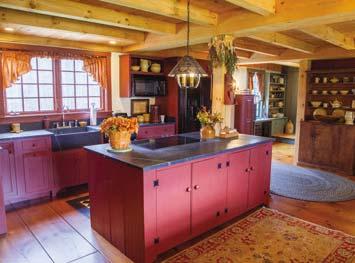









sitting room, where the breeze flows through open doors and a day can slide by as you simply look out to the sea and mountains. They take turns telling me how they found this farm—a story Robert clearly relishes.

In 1939, his family came to the Maine woods. “Can you imagine how happy a 10-year-old boy could be sleeping in a log cabin?” he says. “I woke up to the smell of my mother frying bacon. The memory stayed with me.” He had always loved sailing, and “Maine has the finest sailing in the world. I wanted to have a sailboat in Maine.” In the early 1980s, he flew to Bangor, rented a car, and gave himself 10 days to find a place to put that sailboat. “The woman at the rental counter told me, ‘Don’t go lower than Bucksport,’” he says. “‘Lower than that is too close to Boston.’” Off he drove, and eventually he found his way to the Blue Hill Peninsula. “I said to Mary, ‘We have to go up there.’”
And two years later, that’s what they did. It was Mary’s first time in New England, and they found what she calls “the perfect spot,” a cottage on 12 acres overlooking Eggemoggin Reach, famous among sailors. It was perfect, and they bought it—except now Robert had also seen the prettiest saltwater farm on the entire peninsula, the one owned by E.B. White. Months after White’s death, Robert learned that his son Joel was interested in selling it privately. They met on the farm. “I walked all over,” Robert says, “thinking like a developer, and I came up with a figure I was willing to pay. Joel quoted a price and it was almost the same, to the nickel. We shook hands. I took out a checkbook to leave a deposit. He said, ‘We don’t need that. We shook hands.’”
“And now,” Mary says, smiling, “we suddenly had two houses on the Maine coast.” For the next few years, before they sold it, they rented out the cottage or loaned it to friends; in the

The drawing you see above is called Legacy. It is completely composed of dots of ink. After writing the poem, I worked with a quill pen and placed thousands of these dots, one at a time, to create this gift in honor of the love shared by two of my dearest friends.
Now, I have decided to offer Legacy to those who have known and value its sentiment. Each litho is numbered and signed by hand and precisely captures the detail of the drawing. As an anniversary, wedding, or Christmas gift for your husband or wife, or for a special couple within your circle of friends, I believe you will find it most appropriate.

Measuring 14” by 16”, it is available either fully-framed in a subtle copper tone with hand-cut mats of pewter and rust at $145, or in the mats alone at $105. Please add $16.95 for insured shipping and packaging. Your satisfaction is completely guaranteed.

My best wishes are with you.
The Art of Robert Sexton • P.O. Box 581 • Rutherford, CA 94573
All major credit cards are welcomed through our website. Visa or Mastercard for phone orders. Phone (415) 989-1630 between 10 a.m.-6 P.M. PST, Monday through Saturday. Checks are welcomed; please include the title of the piece and a contact phone number on check. Or fax your order to 707-968-9000. Please allow up to 2 weeks for delivery.
*California residents- please include 8.0% tax
Please visit my Web site at www.robertsexton.com
“This, I will remember, when the rest of life is through: the finest thing I’ve ever done is simply loving you.”


































meantime, they made the farm their own. Robert laid out an allée of trees that led like a magical pathway to the trim boathouse where, when the weather was right or there was too much going on in the house, E.B. White would retreat with his black Underwood typewriter. There he built a simple table and bench, placed a barrel for waste and an ashtray by his side, and with the sea breezes for company typed some of the most elegant and memorable sentences in the English language. For their part, the Gallants brought in some extra furniture and added fresh paint and curtains, helping to make the boathouse, like the entire farm, what E.B. White had wanted: a place for families to love.

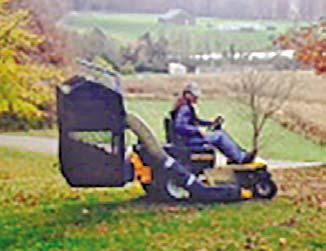

The Gallants’ children grew up and brought their own children here, where they found a sturdy dock for launching boats and brave bodies into the chill water, and trees bursting with ripe peaches, pears, and apples. There were berry bushes, endless pasture to run through, clams to dig and fish to catch, evening campfire cookouts, and lazy days for reading.
And as the Gallants were putting down roots, they had a guide: Henry Allen, who had worked for the Whites for 37 years. “I said, ‘Henry, we will need someone to look after this place,’” Robert says. “Henry said, ‘I’ll stay on for 30 days. See if you like me, and I’ll see if I like you.’” Allen stayed on for seven more years before finally retiring in his late sixties. “Oh, it broke my heart when Henry left,” Mary says. “He was the spirit of this place. He was our connection to the personal side. Henry said people tried to encourage Mr. White to name the house, which he thought pretentious, but he said if he had to, he would call it ‘Two Big Chimneys and a Little One.’”




Whoever comes after the Gallants will soon learn that E.B. White simply wanted to be left alone, to write and to farm and to be a member of the community. He did not want his



Set back from the clamflats is the boathouse where White often did his writing when the weather was fine. Though the Gallants updated the decor a bit, they left in place his handmade bench and desk ( BELOW )—and even added his original liquor cabinet, moved here from the farmhouse.

home to become a shrine, a museum, a writers’ retreat; he wanted it to stay just a family home. His granddaughter Martha White, a staunch defender of her grandfather’s wishes, told me she believes the Gallants have made it their own, which is how it was meant to be. She hopes it will forever be that way.
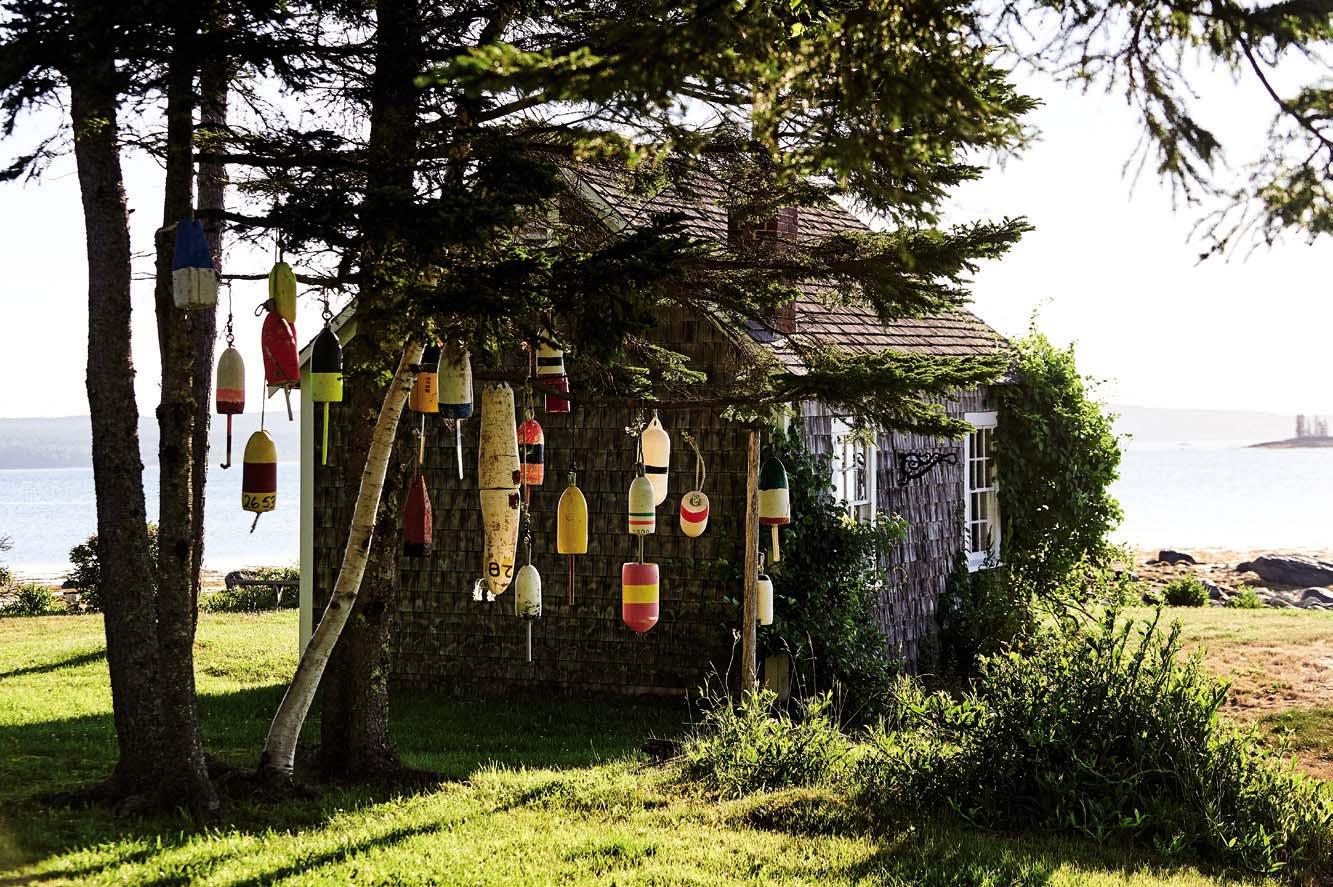
“I feel I’ll always want to come back to Maine,” Mary says. “But I will miss just settling in, the way you do when it’s home.” Robert’s voice grows a bit huskier as he chimes in, “This house, this barn, this property is very dear to our hearts. These have been the best summers of our lives.” Mary says she will miss the sunrise over the cove, and the full moon rising “right there”—she gestures toward Harriman Point—adding, “You can read a book by its light.”
E.B. White never knew the Gallants, but he’d know what they’re feeling. He told one of the few interviewers whom he welcomed to the house, “This place doesn’t fit me since Katharine died. The only thing is, I really had to live here. Also, I love the place, and it’s my home.”
The property is priced at $3.7 million. Serious inquiries only, please. For more information, contact Martha Dischinger at Downeast Properties in Blue Hill, Maine, at 207-266-5058 or by email at msd@brooksvillemaine.com.
welcome to the seventeenth century


Readers of this non-fiction narrative have the opportunity to sail across the Atlantic Ocean on Winthrop Fleet ships, learn about dramatic events which led to Harvard College’s establishment, and to go into battle during the English Civil War. Visit early farms, mansion houses and orchards in colonial New England and manor houses and modern-day museums in England. Enjoy unforgettable encounters with early colonial men and women and their Native American contemporaries.









theforgottenchapters.com
Our Cheese Lover’s Gift Box, a sampling of some of our favorites $49.99
Our Cheese Lover’s Gift Box, a sampling of some of our favorites $49.99

15% OFF
Check
Use the code YANKEE to receive 15% of your purchase.
Use the code YANKEE to receive 15% of your purchase.

A truly memorable CHRISTMAS GIFT. First, we’ll send each person on your list a personalized parchment document — a copy of an authentic 1890 TREASURY DEPT. lease, plus a GIFT CARD from you. During the harvest each lessee receives PROGRESS REPORTS full of facts & folklore, thus sharing in the adventure of sugaring. In Spring, when the sap has been processed, each Tree Tenant will get at least 60







SYRUP in decorated jugs (30 oz. guaranteed to Bucket Borrowers) – even more if Mother Nature is bountiful. We do all the work, your friends get the delicious results, and you get the raves! Tree Lease $69.95 + S/H Bucket Lease $59.95 + S/H












It might be hard to believe that one person feeding birds in their yard can help restore the balance of nature. But it’s true. Because in nature, everything is connected. And everything matters.







































































Enjoy




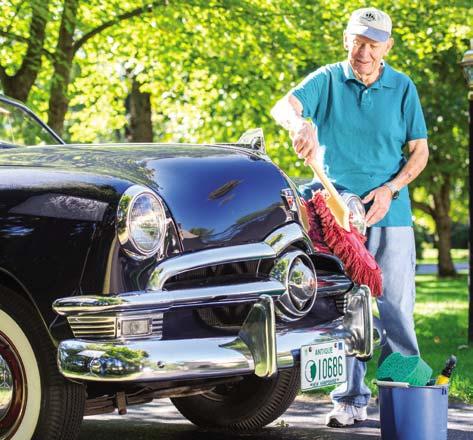

















 BY KEITH PANDOLFI
BY KEITH PANDOLFI
Well, not too deep, really: We were on the outskirts of Portland, Maine, the scatterings of discarded beer cans and cigarette butts indicating the most recent wildlife in the area was likely a herd of drunken teenagers.
It was late October, and aside from the scrunch of our boots in the leaves there was barely a sound as we walked along steep cliffs rising from the Saco River and made knee-cracking jumps over shallow creek beds. Along the way, we talked a little—about our children, about the unsettling number of New Yorkers relocating to Portland—but our minds were only half-focused on these conversations. We were hunting, you see. Hunting for wild mushrooms.
Jamie Salomon, the photographer, declared that conditions weren’t great. Maine was experiencing a drought, which was making the fruits of the mycelium—aka mushrooms, which are drawn to the surface by moisture— hard to come by. And this was the tail end of the fall season, a last window of opportunity before deep frosts would put an end to any new growth. The spring morel season was long behind us; the slower, drier summer season expired. We hoped that a recent bout of rain would bring us some frilly brown
hen of the woods, black trumpets, fragrant porcini, egg yolk–colored chanterelles, or bright red lobster mushrooms.

I’d driven from Brooklyn, New York, to join Jamie and his friend Pierre Janelle, the innkeeper, on my first-ever foraging mission. Jamie, who’s always had a taste for wild mushrooms, started foraging after taking a class with a local mycological society. He met Pierre, an avid home cook with a shared love of mushrooms, a few years back, and they’ve been at it ever since, spending weekends searching Maine’s forests— or sometimes just their neighbors’ yards—for their quarry.
On this day, Jamie was on the lookout for king boletes, the meaty American cousins of the Italian porcini, identifiable by the spongy bottoms of their caps. If lucky, he would also stumble upon some pungent matsutakes, the firm white mushrooms that are nothing short of sacred in Japanese cuisine and can fetch around $25 per pound from the Portland restaurants to which he occasionally sells his bounty.
The first lesson Jamie and Pierre shared with me is that there are certain signs, or “setups,” that’ll tell you which woods are conducive for foraging and which ones are a waste of time. “You want mature forests that are open, not full of thickets,” Jamie said. “Scrubby woods are no good.” The forest we’d chosen was perfect: It was rife with hemlocks and oaks, both of which have a symbiotic relationship with the mushrooms we sought. The mushrooms’ mycelia—fine underground networks of fungal threads—seek out tree roots, tapping their nutrients. In turn, the mushrooms help absorb water and minerals for the trees.
The second lesson: Mushroom foraging can be a tricky business. Ingesting the wrong kind can lead to anything from the mild (an upset stomach) to the hallucinatory to the downright deadly. “You’ll want to rule out any Amanita Jamie told me, referring to a genus of potentially toxic species that are identifiable by the small, egglike bulb seen
once they’re picked from the ground. “I try to collect mushrooms that don’t have look-alikes, like black trumpets and hen of the woods.”
While none of the specimens we came across that day were deadly, some did have the potential to send us to bed with gastrointestinal distress. Case in point: On our drive to the woods,
It took only 10 minutes in the woods with Jamie and Pierre until I was hooked. The longer we walked, the more my focus shifted away from the trees and creeks and rocks, and toward the forest floor and the fungi below. Before long, that was all I could see.
I was electrified when I came across a huge outcropping of bright yellow fungi on a fallen log, thinking they
It was just the three of us that day—a writer, a photographer, and a third-generation innkeeper—a trio of middle-aged men heading deep into the Maine woods.WILD MUSHROOM CHOWDER
were chanterelles. But when I called Jamie and Pierre over to have a look, they were unimpressed. “Honey mushrooms,” Jamie proclaimed. He later told me that while a lot of people love eating honey mushrooms—they’re a popular filling for pierogi in Ukraine—he’s never given them much thought. “It’s like fish. There are hundreds of species out there, but there are only a few that most people are interested in eating.” He had the same reaction when we stumbled upon a crop of inky caps. “I don’t collect those,” Jamie said. “If you
eat them with alcohol, they’ll make you sick—and I like to drink.”
After an hour and a half of hunting, we left the woods empty-handed. But when we got to Jamie’s car, he opened the trunk to reveal a magnificent 35-pound hen of the woods that looked to be the size of a small asteroid. “I found it in front of a house in Kittery, right along Route 1,” he said. And while I’d never had this sort of reaction to a 35-pound heap of fungi before, my mouth began to water. He told me that he was going to sell it to a chef he knew,
but that he’d already shaved a bit off and pickled it.
Back at his house, Jamie shared some of that pickled mushroom with me—which made me realize I needed to make more room in my life for pickling mushrooms. As I was leaving, I asked what he was up to for the rest of the weekend. He said he’d seen a chicken of the woods (not to be confused with a hen of the woods) growing on a neighbor’s tree; he was going to drive over with a ladder and cut it down.
Heading back to my hotel, I could hardly keep my eyes on the road. All I could see were mushrooms. A few days later, the jar of pickled mushrooms in my refrigerator was ready to eat, a memory of the Maine woods kept alive in my city kitchen.
The following recipes can all be made with mushrooms commonly found in supermarkets: button, portobello, shiitake, oyster, and “mixed wild” varieties. If using wild mushrooms, be sure to source them from a reputable forager. Better yet, enroll in a mushroom identification course through your local extension program or mycological society.
TOTAL TIME : 2 HOURS, 25 MINUTES
H ANDS- ON TIME : 25 MINUTES
Mushrooms are ephemeral, with a shelf life of about 10 days. This quick pickle doesn’t extend that window; rather, it offers a homemade alternative to the marinated mushrooms sold in deli cases and in jars. The fragrant oil-and-vinegar marinade is flavored with a blend of garlic, fennel, bay leaves, and thyme.

3 cups white wine vinegar
3 cloves garlic, thinly sliced
2 teaspoons kosher salt
2 teaspoons fresh thyme leaves
1 teaspoon fennel seeds
3 pounds oyster mushrooms (cleaned and trimmed) or hen of the woods (cleaned and torn)
 POTATO AND WILD MUSHROOM GRATIN
POTATO AND WILD MUSHROOM GRATIN
3 dried bay leaves
About 2 cups vegetable or olive oil
Combine vinegar, garlic, salt, thyme, and fennel seeds in a large saucepan. Bring to a boil. Add mushrooms and cook until tender, about 3 minutes. Drain mushrooms, discarding vinegar, and transfer them to a 2-pint glass jar. Add the bay leaves. Fill the jar to the top with oil. Let sit in oil for at least 2 hours before serving an appetizer or accompaniment. Will keep, refrigerated, for up to a week. Yields 6 servings.
TOTAL TIME : 1 HOUR , 25 MINUTES
H ANDS- ON TIME : 25 MINUTES
Among the chefs who buy mushrooms from Jamie Salomon is Damian Sansonetti, chef-owner of Piccolo restaurant in Portland, Maine. He created this gratin in the French style, with mushrooms and potatoes layered and baked in a creamy cheese sauce until browned and bubbling.
3 tablespoons salted butter, plus more for the baking dish
1 small onion, diced
3 garlic cloves, minced
1 teaspoon chopped fresh oregano
1/8 –¼ teaspoon ground cayenne pepper
1 cup heavy cream
1½ cups whole milk
Salt and pepper, to taste
3 tablespoons olive oil
1 pound mixed wild mushrooms (preferably hen of the woods and oyster), cleaned and diced
2 pounds russet potatoes, peeled and sliced into 1/8 -inch-thick rounds
2 tablespoons chopped fresh parsley
1 cup grated pecorino or Parmesan
Preheat the oven to 350° and set a rack to the middle position. Grease a 2- or 3-quart baking dish with butter and set aside.
In a 3- or 4-quart pot over mediumhigh heat, melt butter until lightly browned. Add onion, garlic, oregano,
and cayenne, and cook, stirring, until the onion is translucent, about 6 minutes. Stir in the cream, then the milk. Bring to a boil, stirring, then immediately remove from heat. Purée with an immersion blender or in a standing blender until smooth. Add salt and pepper to taste, and set aside.
In a large skillet over high heat, sauté the mushrooms in the olive oil until nicely browned, 5 to 7 minutes. Place sliced potatoes in a large bowl and add the cream mixture, mushrooms, and parsley. Using your hands or a wooden spoon, blend mixture, making sure to separate and coat all the potato slices.
Pour mixture into the prepared baking dish and gently smooth the top. Sprinkle with cheese and bake until potatoes are fork-tender and the top is lightly browned, about 1 hour. Serve warm. Yields 6 to 8 servings.
TOTAL TIME : 45 MINUTES
H ANDS- ON TIME : 20 MINUTES
Sansonetti usually serves this aromatic soup as a creamy purée, but we love it in its more rustic form, which is why we call it a chowder. However you serve it, it’s the ideal warm-up for fall.
4 ounces pancetta or thick-cut bacon
1 russet potato, peeled and diced
2 celery stalks, diced
1 large onion, diced
1 large carrot, diced
5 garlic cloves, minced
1 teaspoon dried oregano
1 teaspoon dried thyme
2 teaspoons kosher salt
1 teaspoon fresh-ground black pepper
1 cup dry white wine (e.g., pinot grigio)
1½ pounds mixed wild mushrooms, cleaned and diced
4 cups chicken or beef stock
1½ cups heavy cream
Chopped fresh parsley, for garnish
In a large Dutch oven, cook bacon over medium heat until fat is rendered and bacon is barely cooked, 5 to 7 minutes.
Add the potato, celery, onion, carrot, garlic, oregano, thyme, salt, and pepper, and cook until vegetables are softened, 5 to 7 minutes. Add white wine and use a wooden spoon to scrape any browned bits from the bottom of the pot. When liquid is reduced by about half, add mushrooms and cook for 10 minutes. Add stock and continue cooking until mushrooms are fully tender, about 3 minutes more. Add cream and stir. Serve hot, garnished with a sprinkle of parsley. Yields 8 to 10 servings.
TOTAL TIME : 25 MINUTES
H ANDS- ON TIME : 25 MINUTES
One of the most delicious ways to prepare mushrooms is to simply sautée them over high heat until they begin to caramelize. You’ll see this preparation at Spanish tapas restaurants, where they’re cooked on a hot griddle called a plancha . Here, the mushrooms are seared in a skillet and served for breakfast with a fried egg over toast.
1 tablespoon unsalted butter
1 tablespoon extra-virgin olive oil
1½ pounds mushrooms, any kind, stemmed and sliced
1 teaspoon chopped fresh thyme
Salt and pepper, to taste
4 thick slices crusty bread, toasted and lightly buttered
4 large eggs
Fresh thyme leaves, for garnish
In a large skillet, melt butter in olive oil over high heat. Quickly add mushrooms and cook, stirring often, until they begin to brown, 5 to 7 minutes. Add thyme, salt, and pepper, and cook, stirring, until the mushrooms are caramelized and crisp at the edges, 2 to 3 minutes more. Remove pan from heat and spoon the mushrooms over the toasted bread slices. Return skillet to heat and fry the eggs to your desired doneness. Serve the eggs atop the mushrooms and garnish with thyme leaves. Yields 4 servings.
 BY AMY TRAVERSO
BY AMY TRAVERSO
o get to Underhill, Vermont, which sits a bit north and west of Stowe, you hop off I-89 in Richmond and drive through a series of villages that could be mistaken for one large rural township were it not for the white steepled churches and general stores marking their unique spiritual and commercial centers.
Underhill is the home of Richard Phillips, the merchant mariner whose 2009 encounter with Somali pirates inspired the Tom Hanks film Captain Phillips, but if you’re ranking on popular appeal, that’s only the town’s second-greatest claim to fame. The first can be found just off the main drag in a modest yellow farmhouse with a red sandwich board reading “Pie Today.”
This is Poorhouse Pies, so named because in its early days that’s where Jamie and Paula Eisenberg figured this venture would land them. They operate entirely on the honor system: You help yourself to a pie and drop the money into a box. And, barring emergencies or extended vacations, there really is pie every day, a rotating menu of fruit and cream pies in flavors such as apple, blueberry streusel, OMG (berries and lemon curd in a shortbread crust), and, around holiday time, “raisin hell” (raisin and cranberry).
The bakery began in 2009 when Jamie, a former New England Culinary Institute instructor, was laid off from a café management position. She found another teaching job at a local nonprofit but decided to start her own business on the side. Her wife, Paula, a professional baker with a full-time job, agreed to make fruit pies while Jamie tackled the chiffons and creams (banana, coconut, chocolate), the inventions (creamsicle), and wholesale cakes and cookies. “We’ve both been in food service our whole lives,” Jamie says. “This wasn’t just a whim.”
The plan was to sell to local markets as well as offer pies for sale at a small shed on their property. They turned their living room into a tidy commercial kitchen and stocked it with refrigerators, cooling racks, flour bins, and a basic electric range (which burned out and was replaced by another, and then another, and then another). If they arrange the pies just so, they can bake 12 at a time.
Out by the front door, they installed an insulated pie box made by their neighbor,
 Jamie, left, and Paula Eisenberg at the shed where visitors choose their pies and leave their cash (and, often, thank-you notes).
Jamie, left, and Paula Eisenberg at the shed where visitors choose their pies and leave their cash (and, often, thank-you notes).
Bob Martelle. It holds a dozen pies, with just enough extra room for the lockbox that functions as the payment system—because this is Vermont, and they’d rather lose a few pies than have to stand behind a cash register. “If someone comes and doesn’t have any checks or cash, I say fine, take the pie and send us a check,” Paula says.

In warm-weather months the sales operation, such as it is, moves to a walk-in shed, which is just large enough for two refrigerators and has soft wood walls on which customers tack up love notes. Took a bike path in rain , one reads. Came from Stowe! In rain! Looking around the space, Jamie points to the gaps in the wood where daylight seeps through. “We might have to go more upscale if it sinks into the ditch,” she muses. A couple of years ago, she and Paula installed a motion-sensitive light on the shed after spotting predawn flashlights on the lawn. “If a pregnant woman needs a pie in the middle of the night, who are we to get in the way?” Paula says.
On holiday weekends, they make doughnuts—about 800 of them in 16 to 20 varieties—which nearly kills them every time. “I get up at 1:30 so I can start rolling out the dough, and we’re still sold out by 9:15,” Paula says. “There’s only so much the two of us can do.”

But it will always be just the two of them. Even after an appearance on PBS nearly doubled sales, allowing them to quit their day jobs, they are certain that what they have is exactly what they want: the cash box, the free rhubarb traded for pie, the predawn visitors. “We’re never gonna get bigger,” Jamie says. “I’ve been in this house for 23 years. Before we started the business, I barely knew my neighbors. Now we know everyone. We’ve become a hub of the community, and that’s what I’ve always wanted.”


Fruit pies,$14; cream pies, $16. For more information, call 802-8991346 or go to poorhousepies.com.



hen my friend Meredith was battling cancer, she asked for just one favor: that I bake an apple custard cake her mother, Thelma, had made every autumn in the small Quincy, Massachusetts, apartment where she raised seven children. I had recently published a book on apples but had no custard cakes in my repertoire, and Meredith didn’t have the original recipe. Luckily, a bit of Googling revealed some promising leads.
The fact that Meredith lived in San Francisco, where we had once been neighbors, was a small inconvenience: My husband had an upcoming trip there and was happy to act as courier. So I packed up my best attempt at apple custard cake, and she called to thank me when it arrived. Yet something in her voice said it wasn’t quite what she had been craving. It was good, but it didn’t bring the memory back to life.
Since that first version five years ago, I’ve circled back to the custard cake, trying to achieve the exact right mix of custardy top and tender interior. With this recipe, I finally got what I was looking for. And even if it still isn’t identical to her mother’s, I send it out to Meredith, now cancer-free, with love.

TOTAL TIME : 1 HOUR , 15 MINUTES
H ANDS- ON TIME : 30 MINUTES
Pouring the custard over the cake partway through the baking process creates three distinct layers of cake, custardy cake, and custard—a trio of complementary textures.
1 medium, firm sweet apple such as Honeycrisp, Pink Lady, or Baldwin, peeled, cored, and cut into ¼-inch-thick wedges

1 tablespoon lemon juice

5 tablespoons unsalted butter, softened, plus more for pan
¾ cup all-purpose flour, plus more for pan
¾ cup whole wheat pastry flour
(see note)
1½ teaspoons baking powder
½ teaspoon table salt
½ cup granulated sugar




1 large egg, at room temperature
1 teaspoon vanilla extract
¾ cup milk
Powdered sugar, for dusting
1 large egg plus 1 large egg yolk
½ cup heavy cream
½ teaspoon vanilla extract


Note: Whole wheat pastry flour is different from regular whole wheat flour (it is made from soft white wheat rather than hard, has a milder flavor, and produces less gluten), but it’s quite easy to find. Many supermarkets carry the Bob’s Red Mill brand.
3 tablespoons plus 2 teaspoons granulated

Toss apple slices with lemon juice and set aside. Preheat oven to 350° and set a rack to the middle position. Use butter to grease a 9-inch springform pan, then sprinkle with flour. Shake the pan to coat with flour; discard any excess. In a medium bowl, whisk together ¾ cup all-purpose flour, pastry flour, baking powder, and salt. Set aside. In the bowl of a standing mixer (or in a large bowl with a handheld mixer), cream the 5 tablespoons of butter and sugar on high until fluffy, 3 to 4
minutes. Add the egg and vanilla and beat to combine. Then add a third of the flour mixture and stir to combine. Add half the milk and stir. Repeat with another third of the flour mixture, then the rest of the milk, then the remaining flour mixture. Pour the batter into the floured pan. Lay the apple slices over the top of the cake and set the pan on a baking sheet, then transfer to the oven for 10 minutes. Meanwhile, make the custard: In a small bowl, whisk together the egg, egg yolk, cream, vanilla, and 3 tablespoons sugar. After 10 minutes, remove cake from oven, pour the custard over the top, and sprinkle with the remaining 2 teaspoons sugar. Return to oven and bake until the sides of the cake pull away from the pan and a tester inserted into the center of the cake comes out clean, 30 to 35 minutes more. Dust with powdered sugar, and serve. Yields 8 to 10 servings.

“THIS OLD TOWN OF SALEM ... POSSESSES, OR DID POSSESS, A HOLD ON MY AFFECTIONS, THE FORCE OF WHICH I HAVE NEVER REALIZED....”
The Scarlet Letter, Nathaniel Hawthorne

 BY ANNIE GRAVES
BY ANNIE GRAVES
 FLEMING
FLEMING
t’s eight weeks till Halloween, and Salem is bracing itself. “Last year we had 100,000 visitors,” says one local shopkeeper, with practiced equanimity. “They came by train, boat, bus, car, you name it—it’s like Times Square here. The restaurants ran out of food.”

A stroll down Essex Street in the heart of historic Salem gives us a brief glimpse of what’s in store. If you had a broomstick for every tarot reader, psychic, haunted tour, and magic shop on this pedestrian-friendly street, you could start multiple Quidditch teams. Black attire seems more popular here than in Manhattan, with shredded tights a trendy accessory. There’s a “help wanted” sign for a psychic. We hear about possibly haunted tunnels under the street. It’s intriguing, entertaining, and a little overwhelming: Harry Potter meets the Witches of Eastwick.
And then, a mere block away, presto: Chestnut Street, a magnificent avenue of Federal-style mansions and a graceful tunnel of trees. A testament to Salem’s seafaring heyday in the 1700s, when this was the wealthiest town in America—complete with arguably the nation’s first millionaire, shipping merchant Elias Derby—it has been called the most beautiful street in the country. Money buys shade, too.
But down by the waterfront, it’s an altogether different Salem. Maritime history breathes through the alleyways, tickles the sails of the replica tall ship Friendship of Salem . Men in shorts (national park rangers) tour you through park-owned buildings for free—pointing out, for instance, the Custom House desk where Nathaniel Hawthorne labored, hating his job, but later writing the place into his 1850 classic, The Scarlet Letter. (“I like to call him our first disgruntled federal employee,” jokes our
guide.) A year later Hawthorne published The House of the Seven Gables , and if you walk a little farther down Derby Street, you can explore this creaky 17th-century gem, with its hidden staircase. It’ll make you want to pick up the books again.
Another sliver of Salem’s multifarious “lot,” so to speak, traces directly back to 1692 and the Salem witch trials, when 20 innocent men and women were executed. But it wasn’t until 1970, when the hit TV show Bewitched filmed eight episodes here, that Salem began to assume its current identity, becoming, for better or (some residents would say) for worse, a year-round Halloween magnet, with hundreds of self-proclaimed witches in residence. Most places are many things, often subtle, but Salem’s more like your Auntie Mame: handsome, full of contradictions, wildly eccentric, somewhat unpredictable. “Abwa-cadabwa!” yells a small boy, swooping up a stick from the sunspeckled cobblestones in Derby Square, waving it fiercely at his father. Caught up in a moment of modern-day magic.
Carved into Massachusetts Bay, Salem Harbor sits 15 miles north of Boston, with Derby Wharf jutting half a mile into the water and the Friendship of Salem docked at its side, conjuring a time when Salem had 50 wharves at which to unload its riches. Wealth poured in like water, leaving Salem awash in grand 17th- and 18th-century homes. Samuel McIntire–designed beauties dot the historic center, alongside echoes of the 1600s that drift out of the past, including the Witch House, the onetime home of witch trials interrogator Judge Jonathan Corwin. The elegance culminates on Chestnut Street, which photographer-writer Samuel Chamberlain called “the finest, best preserved, and most aristocratic thoroughfare in America.”

In 1799, Salem’s sea captains pooled their curios to start what would become the Peabody Essex Museum (PEM), one of America’s top 20 art museums and among the oldest in the country. PEM members get first crack at special events, but concerts and films are open to all. Plunge into the city’s past deeply enough, and you, too,





might be tempted to create a walking tour. You wouldn’t be the first. There are dozens, from “Bewitched After Dark” to “Hocus Pocus,” representing a riveting way to master the city’s layout. Traipsing by lantern light on the “History and Hauntings of Salem” tour, we learn about Salem’s most famous modern witch, Laurie Cabot; the origins of Wicca; and a few spinetingling details about a hotel party where “extras” showed up in photos and a guest was lifted off the ground by unseen forces. The only things missing are a campfire and s’mores.
Warm brick, a boho ambience, craft beers, and live music make Gulu-Gulu Café, tucked behind the Bewitched statue (dedicated in 2005), a downtown hot spot. For seafood with a view, Finz, on Pickering Wharf, augments its raw bar with buffalo calamari and a killer sesame seared tuna. A warm fall evening spent sitting outside at the Adriatic Restaurant & Bar, tackling an arugula pizza and local cod, feels like a balmy night under the stars on the, hmm, Adriatic. And if you’re lucky enough to find it open, check out Back Alley Bacon, self-described as “pork-centric street food for those in the know.”
Hoping to conjure the perfect crystal ball? You’ll find dozens on Essex Street—along with wands, runes, and books of spells, but also serious Wiccan tools of the trade and shopkeepers steeped in the art of “benevolent witchcraft.” Museum gift shops carry the unusual, too: handmade lace from the House of the Seven Gables, witch hats from the Salem Witch Museum, “Chat Noir” knee socks from PEM. Ye Olde Pepper Candy Companie, the oldest candy company in America, has been in business here since 1806, and Wicked Good Books dispenses advice (“Make America Read Again”) alongside wicked-good reads.
With Salem’s profusion of grand old buildings, condo is the way to go. A one-bedroom, one-bath in an 1850 building close to Pickering Wharf lists at $269,900. A 1,530-squarefoot antique townhouse condo near the Salem Common, with three bedrooms, wide pine flooring, original bread oven, and exposed brick, sells for $314,900. On the Salem-Marblehead line, a two-bedroom condo with water views, granite countertops, and a large private porch lists at $289,000.

Trick or treat aside, Salem’s 42,000 residents live in an architecturally rich city with one of the great museums in the country. They enjoy a historic waterfront, and they can beat the traffic to and from Boston on the Nathaniel Bowditch , a seasonal ferry that sprints from Boston Harbor in less than an hour. And if they want to get in touch with their inner magic, they probably have a better chance here than anywhere else.
Recently voted the best U.S. citycenter historic hotel by Historic Hotels of America, the Hawthorne Hotel—
OPPOSITE , CLOCKWISE FROM TOP LEFT : LGBTQ advocate and official “Queen of Salem” Gigi Gill; wood turner Tommy Gagnon, a longtime tenant of the cityrun creative space Artists’ Row; Erica Feldmann, owner of HausWitch, a store designed to “bring magic and healing into everyday spaces”; Salem Historical Society cofounders Ryan and Alyssa G.A. Conary.
a just-right blend of elegance and ease sitting like a dowager on a corner of Salem Common—feels as though it hosted Walter Cronkite, Bette Davis, and Jennifer Lawrence (filming Joy there) without batting an eye; plus, its annual Halloween party is legendary. A few blocks away on Washington Street, the Merchant, newly refurbished, offers a boutique hotel experience and a room where George Washington slept. 18 Washington Sq. W., 978-744-4080, hawthornehotel.com; 148 Washington St., 978-745-8100, themerchantsalem.com
To see more photos from our visit, go to newengland.com/salem-2017.
 BY KIM KNOX BECKIUS
BY KIM KNOX BECKIUS
hey’re treasures in motion, these rail-riding relics—rattling and toot-tooting across New England landscapes as if a century or more has been rewound. Tourist trains now, they’re just the ticket if you want to leave the driving to an engineer while you train your eyes on spectacular fall foliage displays.
Each time a vintage B&ML diesel locomotive sputters to life, the bench seats on the open-air car are first to be claimed, especially as falling temperatures coax forth autumn colors. So bundle up, arrive early, and summon the fortitude of a hardy Mainer. You won’t regret opting for unimpeded views of painted trees in a rural landscape that’s little changed since this rail route’s debut in 1870. At a top speed of 15 mph, you’ll absorb the scents, sounds, and sights of fall on the hourlong round trip. Devoted volunteers maintain seven miles of track between City Point Station and Waldo with assistance from local inmates working to reenter the community and begin the next season of their lives. Belfast, ME. 888-317-2142; belfastandmooseheadlakerail.org
At New England’s largest living history museum, meet the families, farmers and artisans who lived and worked in rural New England in the formative, first decades of our new nation.

Experience the triumphs, trials and textures of everyday life in the 1830s – a period driven by agriculture, industry, family and the seasons. Find relevance from their stories, put your hands on history and be inspired.
Old Sturbridge Village… More than a museum.
Militia Weekend | September 2 – 4
Festival of New England Makers | September 23 & 24
Apple and Agriculture Days | October 7 – 9 and 14 & 15
Historic Hauntings | October 18 – 22 and 25 – 29
A New England Thanksgiving | November 1 – 5, 8 – 12, 15 – 19 and 22
Old Sturbridge Inn and Reeder Family Lodges
Historic Setting. Modern Amenities. New England Hospitality. Call 508-347-5056 for a Yankee Magazine subscriber discount.

Like the little engine that could, the all-volunteer nonprofit Berkshire Scenic Railway Museum runs on optimism. So when the tourist trains out of its home base, Lenox, were figuratively knocked off track a few years ago, it turned to the Hoosac Valley, where it officially launched scenic rides last year. You’re free to leave your comfy seat and wander about the smoothriding 1955 Budd Rail Diesel Car as it rolls south toward Adams from North Adams Station. Step out onto the vestibule to shoot photos of Hoosic River reflections, the Victorian-era Southview Cemetery, and the mosaic of autumn colors on the slopes of Mount Greylock and the Hoosac Range. The hourlong narration is an engaging mix of local lore and railroading tidbits. North Adams, MA. 413-637-2210; hoosacvalleytrainride.com
When the Notch Train crosses Frankenstein Trestle and riders are suspended above luminous White Mountain forests, it’s as much a Spielberg moment as when Elliott and E.T. hurtle skyward on a bike. More than 140 years after these special effects were built with iron and determination, passengers still audibly gasp. Dome-car seats offer the ultimate views, but on this five-hour-plus granddaddy of New England train rides, you may prefer to savor three courses in the plush dining car instead. Want to combine railroading and leaf-peeping on a smaller scale? Valley Train trips—55 minutes to Conway or less than two hours to Bartlett— also depart from North Conway’s 1874 station. North Conway, NH. 603-3565251; conwayscenic.com
It’s antique transportation for a multitasking generation: See the kaleidoscope of foliage along the Connecticut River from both a vintage Pullman car and the breezy deck of the riverboat Becky Thatcher. Or catch the Haddam


Special, which combines a longer train trip with three hours on foot exploring two time-warp riverside towns. The romance of the rails meets fine dining aboard the Essex Clipper dinner train, as Mother Nature’s show glides by in slow motion. Another option: Toast fall with a cocktail on a September sunset train ride and cruise, and you’ll witness a half-million tree and barn swallows’ good-night ballet as they plummet out of a golden-violet sky. Essex, CT. 860-767-0103; essexsteamtrain.com
As the world’s first mountain-climbing cog train makes its cloud-bound ascent, your focus will be on this 19th-century wonder’s seemingly ambitious destination: the summit of Mount Washington. Seasonal shifts that take weeks to subtly unfold at a single elevation hit fast-forward during the 60-minute climb. Don’t be shocked to see snow when you deboard at the highest point in New England. An hour of winter at the top will sharpen your appreciation for the warm hues of autumn that sprawl across tree-carpeted peaks and the valley below as you descend. Purists can still opt for early-morning coalfired steam engine trips, but the other locomotives burn biodiesel, preserving nature’s golden assets. Bretton Woods, NH. 603-278-5404; thecog.com
Bennington Museum holds the largest public collection of works by legendary American folk artist Grandma Moses? And with 14 galleries devoted to art, history, and innovation, more unexpected discoveries await. Delve into mid-century modern in Bennington Modernism Gallery, or revisit history within Gilded Age Vermont. Catch Grandma Moses: American Modern (through Nov. 5) and view her paintings alongside works by acclaimed modernists like Cornell, Frankenthaler, and Warhol, and folk artists Hicks and Pickett. See how each created their masterpieces by drawing from images, color, collage, and memory.
802-447-1571 • BenningtonMuseum.org
If you’re looking for a cozy and luxurious room offering sweeping mountain views from a private balcony, the Manchester View is the lodge for you. Cradled by mountains in almost every direction, its elegant, rustic rooms and family-size suites make for an authentic mountainside vacation. Be sure to enjoy the outdoor heated swimming pool (in season) before

And since it’s located close to town, you can’t miss the area’s shopping, fairs, and museums.

800-548-4141 • ManchesterView.com
Discover the Reluctant Panther Inn and Restaurant nestled in the village at the base of Mount of the World” member, it offers 20 spacious rooms and suites with premium bedding, elegant baths, experience at the inn’s 65-seat award-winning cuisine and alfresco summer dining amid tranquil gardens— also the perfect backdrop for intimate weddings and private events. 800-822-2331 • ReluctantPanther.com
One of the best independent bookstores in the country, the Northshire Bookstore invites leisurely exploration within its 10,000 square feet. You’re sure to overhear someone say, “I could spend all day in here.” No wonder, since there’s so much to discover—from an incredibly children’s titles, to inspired gifts and Vermont products. Chat with the knowledgeable and helpful staff; they take pride in
800-437-3700 • Northshire.com

A delightful option to cookie-cutter chains and pricey boutiques, the Casablanca Motel offers 10 charming restored cabins featuring a vintage vibe and modern amenities, friendly innkeepers, and realistic rates, recalling the heyday of American travel. Called “Vermont’s Best Retro Escape” by Yankee, the motel provides a welcoming setting for spending time together. Relax on the summer evening—and when you’re ready to venture out, downtown Manchester is only a mile away.
802-362-2145 • CasablancaMotel.com
WHEN YOU GO: While in the Manchester area, check out the Southern Vermont Arts Center, located on a former private estate crowned by a beautiful 1917 National Historic Trust mansion; the Robert Frost Stone House Museum, that




 BY IAN ALDRICH
BY IAN ALDRICH
o the men who logged the Maine woods in the early 20th century, the Lombard steam log hauler was a game changer. Invented in Waterville, Maine, and resembling a cross between a tractor and a train engine, the machine represented the lumber industry’s first significant leap into the internalcombustion age. Yes, its lack of brakes made it dangerous, and its two wood-fired engines needed constant attention, but it also freed lumbermen from relying on teams of horses to haul sleds of logs out of the woods in winter. Records of the time show that during one two-month stretch in 1907, a Lombard moved more than 3 million log feet, a workload that previously required 62 horses.
Only 83 of these machines were ever manufactured, and today just six survive. One of these is part of the collection at the Patten Lumbermen’s Museum in Patten, Maine, about 90 miles north of Bangor. In 1982 the American Society of Mechanical Engineers named this particular Lombard a National Historic Mechanical Engineering Landmark.
The story of the Lombard steam log hauler is part of a larger tale told here—one of a way of life that goes back more than 400 years, when early settlers felled the pine that dominated Maine’s virgin forests. From this land came the wood that built a new nation’s homes and ships. When the wood-pulp paper industry took root in the late 19th century, generations of Mainers were employed to feed the big mills that sprouted up around the state.
takes visitors into the rugged and essential lives of those who felled the trees that helped build a nation.
Lore Rogers, a research scientist and son of a lumberman, and Caleb Scribner, an artist and game warden, opened the museum in 1963. What they created isn’t a mere collection of artifacts but rather a tour through time. Over here is a replica of a sparse, dirtfloored 1820 camp; over there is its more accommodating 20th-century counter part, complete with bunkhouse and dining quarters. The early saws give way to their gasoline-powered successors, and harnesses and haying tools yield to internal-combustion engines.

Given that it’s set in the heart of the very landscape that inspired it, the museum has grown as almost a community endeavor. Summer bean-hole suppers draw hundreds of attendees, and many items on display have been donated by families who made the woods their way of life. Beyond the eight-foot chainsaws, the Model T bobsled, and the massive wagon wheels,
there are personal artifacts such as the spruce gum boxes that the men decorated or scribbled poetry onto in the darkened hours before bed. Visitors can put their hands on a small tobacco tin or feel the worn leather of a pair of heavy
pass through the front door of the Patten Lumbermen’s Museum. But given that it’s located near the northern entry point of one of the country’s newest natural attractions, the 87,500-acre Katahdin Woods and Waters National Monument, that number is sure to change. After all, anyone who is traveling this far north is likely pulled by some of the very same things—remoteness, an unending sense of grandeur— that called out to those who once worked the woods, or who still do.
work boots. The simultaneous narratives of life and livelihood are blended together seamlessly here, making for a museum in which you can spend a quick hour or an entire afternoon. Only about 2,000 visitors a year
“I love it when the old loggers come in—it brings back all these memories for them,” says Rhonda Brophy, the museum’s curator and director. “It was a unique life they had. It was hard and sometimes cruel, but there was a lot of camaraderie in the work. A lot of accomplishments.”
61 Shin Pond Road, Patten, ME. 207-528-2650; lumbermensmuseum.org

“[A logger’s life] was hard and sometimes cruel, but there was a lot of camaraderie in the work.”

With roots that go back more than 40 years, this annual event at Loon Mountain has blossomed into one of the biggest, most diverse celebrations of Scottish heritage in the United States. Mingle with historical reenactors in Scottish military and civilian encampments, explore your own roots in the Clan Village, and soak up the entertainment, including dance, fiddle, and harp competitions and performances by 30-plus pipe bands. There also are sheepdog trials, a kilt run, and tests of physical strength and skill such as the caber toss, the hammer throw, stone carrying, and more. Lincoln, NH. 800-358-7268; nhscot.org
plus celebrity chef demonstrations that in past years have included such PBS favorites such as Kevin Dundon, Mary Ann Esposito, and the Brass Sisters. Boston, MA. 617-300-5400; cravingboston.wgbh.org
SEPTEMBER 8–24
September is Arts Month in Pawtucket, and celebrations reach their peak at this citywide showcase of visual and performing arts. Built around a theme of “Work Hard, Play Hard, Make Art,” the 16-day festival brings a cavalcade of music, theater, and dance performances to Slater Park and the downtown area. Pawtucket, RI. 401-728-0500; pawtucketartsfestival.org

OCTOBER 7–8
Germany comes to Vermont for a weekend! Eat some schnitzel and roasted sausage, sample German and domestic brews, and kick up your heels to the lively oompah music at the 20th installment of this popular Mount Snow event, which also features a yodeling contest and a keg toss. While you’re there, be sure to take in all the mountain has to offer—from the Harvest Arts and Crafts show in the Base Lodge to the scenic Bluebird Express chairlift ride to the summit. West Dover, VT. 800-245-7669; mountsnow.com
—Compiled by Joe Bills
SEP. 1–4: SOUTH WOODSTOCK, Woodstock Fair. Animals and exhibits, entertainment on three stages, amusement rides, contests, 100-plus food vendors offering everything from sweet treats to hearty meals—there’s something for everyone at the Woodstock Fair, now in its 157th year. 860-928-3246; woodstockfair.com

SEP. 8–10: NORWALK, Oyster Festival. Oysters may be the headliner at this 40-year-old festival, but the celebration goes far beyond shucking and slurping. Veteran’s Park rocks with day-to-evening performances, international foods, kids’ activities, a lumberjack show, and a juried arts and crafts show. 203-838-9444; seaport.org

SEP. 9–10: GLASTONBURY, “On the Green” Art and Craft Show. Glastonbury Arts hosts this traditional event on historic Hubbard Green, attracting more than 175 exhibitors of fine art and handmade crafts. 860-6591196; glastonburyarts.org


SEP. 22–DEC. 31: MYSTIC, International Marine Art Exhibition and Sale. Mystic Seaport’s Maritime Art Gallery puts the spotlight on recent works by more than 100 marine artists from around the world as this popular annual show makes its return. 860-572-5388; mysticseaport.org

SEP. 29–OCT. 1, OCT. 6–8: SOUTHINGTON, Apple Harvest Festival. Stop by the town green for some apple-inspired food and entertainment. Among the highlights are a parade, an arts and crafts show, a pie baking contest, bed races, and fireworks. 860-2768461; southington.org/ahf
OCT. 7–8: BETHLEHEM, Garlic & Harvest Festival. For two days, the Bethlehem Fairgrounds becomes the garlic capital of the world. Expect lots of recipes and cooking demonstrations (with free samples), farm produce, crafts, rides and games, a garlicinspired food court, and live entertainment. 203-266-7810; garlicfestct.com
OCT. 8: SCOTLAND, Highland Games Festival. The Edward Waldo Homestead comes alive with piping, dancing, drumming, and athletic competitions. There also will be swordplay demonstrations, storytelling, sheepdog demonstrations, and all manner of Scottish foods and products. scotlandgames.org

OCT. 21: PUTNAM, Great Pumpkin Festival and Train Ride. While waiting for your train ride through the Last Green Valley (tickets must be purchased separately), you’ll find plenty of entertainment at this fall festival, as a crafts show, live music, great food, and some truly epic pumpkins take over the downtown. 860-428-1278; discoverputnam.com
OCT. 27: HARTFORD, Hallowed History Lantern Tour. Cedar Hill Cemetery opens after dark just once each year, the reason being this annual evening of spooky fun. During the tour you’ll meet actors portraying the dearly departed with dark tales to tell. Reserve a space early for this popular event. 860-9563311; cedarhillfoundation.org




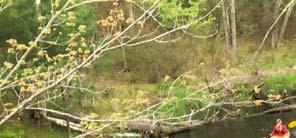









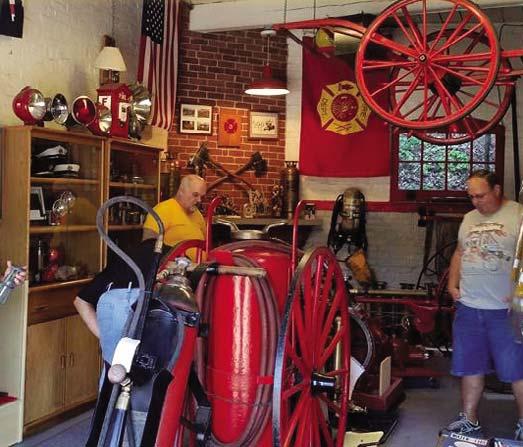






















SEP. 1–10: BOOTHBAY HARBOR, Boothbay Harbor Fest. One of the Midcoast’s signature events, this festival offers harbor crawls and tasting tours of local restaurants, a live music marathon, shopping, art shows, tea tastings, a 5K run, a wellness fair, and a “Fishin’ for Fashion” style show. boothbayharborfest.com

SEP. 8–10: EASTPORT, Eastport Pirate Festival. Hark back to days of yore, when pirates were no strangers to the Maine coast. Come in costume—if you’d like to blend in—and enjoy wacky activities including bed races and pirate reenactments, along with live music, lobster boat races, and kids’ games. eastportpiratefestival.com
SEP. 23: AUGUSTA, Wood Carvers Show and Competition. The Maine Wood Carvers Association takes over the Buker Community Center for its annual show of members’ work, from decoys and other functional carvings to purely decorative creations. mainewoodcarvers.com
SEP. 24–30: CUMBERLAND, Cumberland County Fair. Now in its 146th iteration, this family-friendly favorite includes two pro rodeo events, fireworks, a midway, a demolition derby, livestock shows, and the official Maine state pumpkin and squash weigh-off. 207-829-5531; cumberlandfair.com



OCT. 1–8: FRYEBURG, Fryeburg Fair. Known as “Maine’s Blue Ribbon Classic,” the Fryeburg Fair offers livestock shows, baking competitions, harness racing, and an array of garden and craft exhibits, plus midway rides and live entertainment. 207-9353268; fryeburgfair.org
OCT. 7–9: DAMARISCOTTA, Pumpkinfest and Regatta. At Pinkham’s Plantation, Maine Maritime Museum, Boothbay Railway Village, and other Damariscotta locations, you’ll find a giant-pumpkin contest, pumpkin catapult, pumpkin derby, pumpkin drop, pumpkin pie eating contest … perhaps you’re detecting a theme? Don’t miss the big pumpkin-boat regatta finale. 207-6773087; mainepumpkinfest.com
OCT. 16–22: PORTLAND, Harvest on the Harbor. Foodies converge on Portland as the city toasts its talented chefs. Stop by the waterfront for cooking contests and demonstrations, wine seminars, and live music. 207-772-4994; harvestontheharbor.com
OCT. 20–22: OGUNQUIT, OgunquitFest. Fallthemed attractions fill the downtown, including pumpkin and cookie decorating, a costume parade, and a classic-car show. Shop at the craft bazaar, thrill to the haunted house, compete in the high-heel race or bed race, and take a ghost tour or a wagon ride. 207-646-2939; visitogunquit.org
OCT. 28: SOUTH BERWICK, Victorian Frightful. Spend a spooky evening listening to tales of hauntings and horror read by actors portraying Edgar Allen Poe, Elizabeth Gaskell, and especially Sarah Orne Jewett, whose Victorian house museum hosts the event. 207-384-2454; historicnewengland.org




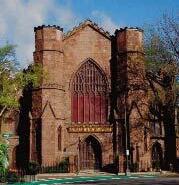

























SEP. 5–10: BRIMFIELD, Antiques Show. The largest outdoor antiques show in the country offers its final dates for the year as dealers set up shop along a mile-long stretch of Route 20. If you can’t find it at Brimfield, it may not exist. brimfieldshow.com
SEP. 7–10: GREENFIELD, Franklin County Fair. Celebrating rural life since 1848, this country fair today boasts a lineup of entertainment that ranges from tractor pulls to talent shows, and pig races to demolition derbies. 413-774-4282; fcas.com


SEP. 15–OCT. 1: SPRINGFIELD, The Big E. The largest fair in the Northeast is home to such supersize treats as the Big E Cream Puff and the Craz-E Burger. Enjoy top-name entertainment (on this year’s lineup: Sheila E., the Red Hot Chili Peppers, and the Village People), the Big E Super Circus, the Avenue of States, and animal shows, rides, shopping, and crafts. thebige.com

SEP. 21–24: PROVINCETOWN, Tennessee Williams Theater Festival. From his classics to his experimental work, with performances at various venues, the town comes alive with the spirit of one of America’s greatest playwrights. This year’s event pairs several of Williams’s works with Shakespeare’s plays for side-by-side comparison. 866-789-8366; twptown.org

SEP. 22–OCT. 1: CONCORD, Nature: A Walking Play. This performance on the grounds of the Manse explores the friendship—and mutual fascination with nature—of Ralph Waldo Emerson and Henry David Thoreau. The actors lead the audience on a walk through the natural environment as scenes unfold through a combination of music, song, and story. thetrustees.org
SEP. 22, 29, OCT. 6, 13, 20, 27: LENOX, Ghost Tour. Explore the haunted history of Edith Wharton’s historic homestead, the Mount, through this guided tour of its eeriest areas. Advance registration required. 413-551-5111; edithwharton.org
SEP. 22–24: EAST FALMOUTH, Cape Cod ScallopFest. Award-winning scallops, seafood, and chicken dinners combine with midway rides and games, live music, and a juried craft fair at the Cape Cod Fairgrounds. 508-759-6000; scallopfest.org







SEP. 23: NEW BEDFORD, Working Waterfront Festival. Explore the historic and contemporary roles of fishing families while enjoying music, cooking demonstrations, vessel and harbor tours, fishermen’s contests, author readings, film screenings, local seafood, and a maritime artisans marketplace. 508-9938894; workingwaterfrontfestival.org
OCT. 14–15: WELLFLEET, OysterFest. Give a nod to the town’s famous oysters, clams, and shellfishing traditions with some hometown fun and flavor. Enjoy local cuisine, arts and crafts, cooking demonstrations, kids’ activities, walking tours, live music, a road race, and the annual oyster shuck-off, all in the downtown area. wellfleetoysterfest.org





Your Costa Rica tour is all inclusive with all meals, all hotels & all activities. Fully guided from start to finish.


Join the smart shoppers & experienced travelers who rely on Caravan; Fully guided tours since 1952.

Costa Rica: Caravan Tour Itinerary
Day 1. Bienvenidos! Your Tour begins in San José, Costa Rica.
Day 2. Enjoy a guided tour at a Coffee Plantation. Sample fresh Costa Rican coffee. Stroll among coffee trees.
Day 3. Cruise on the Rio Frio river. Relax and soak in volcanic hot springs.
Day 4. Hike the Hanging Bridges, and visit Leatherback Turtle National Park.
Day 5. Free time at your beach resort.
Day 6. Cruise on the Tarcoles River. Bird watching and crocodile spotting.
Day 7. Visit Manuel Antonio National Park. Hike through the rainforest and along spectacular beach coves.


Day 8. Return with great memories. Hasta la vista!
Detailed Itinerary at Caravan.com
Choose An Affordable Tour +tax,fees
Guatemala with Tikal 10 days $1295
Costa Rica 8 days $1195


Panama Canal Tour 8 days $1195
Nova Scotia & PEI 10 days $1395
Canadian Rockies, Glacier 9 days $1695
Grand Canyon, Bryce, Zion 8 days $1495
California Coast, Yosemite 8 days $1595
Mt. Rushmore, Yellowstone 8 days $1395

New England, Fall Colors 8 days $1395
“All hotels were excellent! There is no way I would’ve stayed in such superior & sophisticated hotels for the price I paid”—Client, Salinas, CA
“Brilliant,


OCT. 19–22: EDGARTOWN, Martha’s Vineyard Food and Wine Festival. Celebrate the island’s rich tradition of farming and fishing with local chefs and the farmers, fishermen, oyster producers, and artisans they work with. 617-267-2244; mvfoodandwine.com


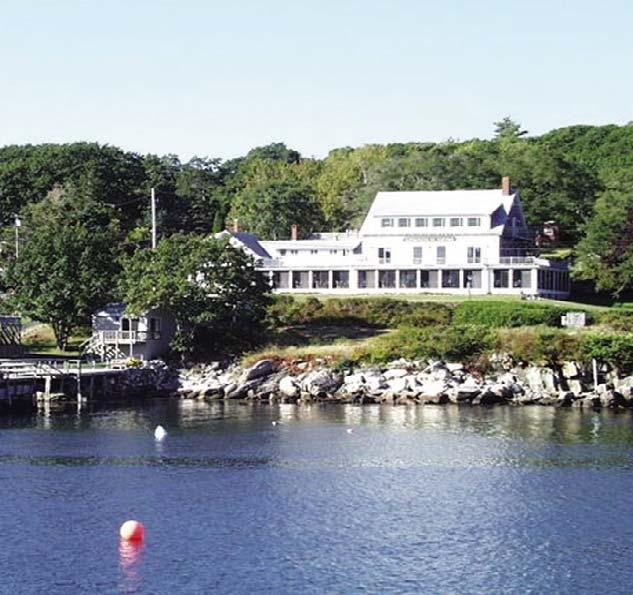



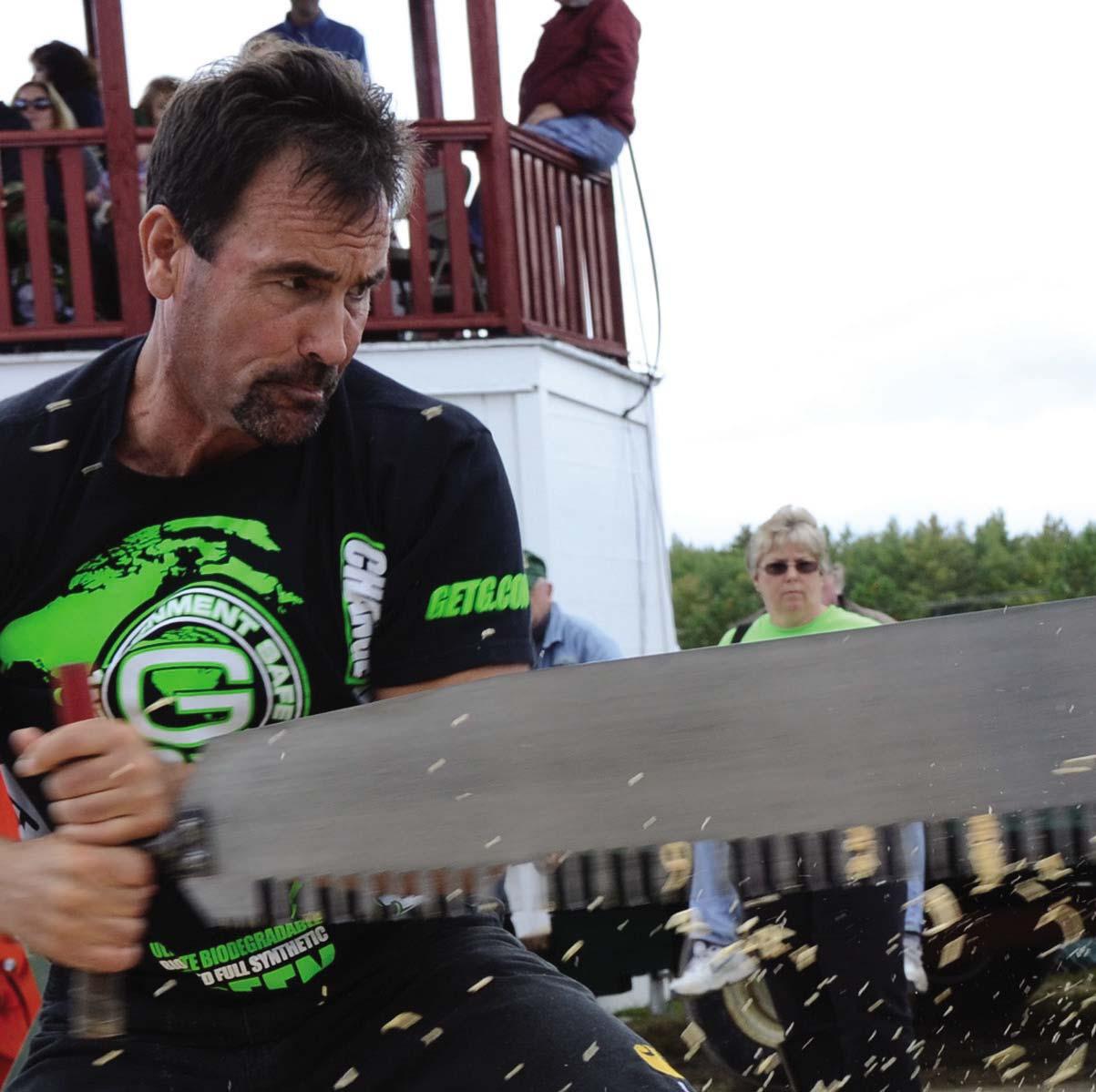
OCT. 21: ESSEX, Essex ClamFest. Stop by Memorial Park to sample the offerings of area restaurants as they compete for your vote in the clam chowder competition. Look for kids’ games, arts and crafts, a raffle, and more. 978-283-1601; visitessexma.com





SEP. 1–4: FRANCESTOWN, Labor Day Celebration. Now in its centennial year, this festival offers a parade, contra dancing, tennis, mud volleyball and golf tournaments, a juried arts and crafts fair, a road race, live entertainment, and great food. 603-547-3600; francestownhistory.info
SEP. 8–10: HAMPTON BEACH, Seafood Festival. Hit the beach for a weekend of live music, seafood delicacies, chef demonstrations, contests, arts and crafts, fireworks, and the ever-popular lobster roll eating competition. hamptonbeachseafoodfestival.com
SEP. 16: CANTERBURY, Canterbury Artisan Festival. Celebrate traditional arts with a juried craft fair, a farmers’ market, musical performances, and demonstrations of blacksmithing, basketry, tea making, and more. 603-783-9511; shakers.org

SEP. 23: LITTLETON, Schilling Oktoberfest. A bit of Bavaria comes to small-town New Hampshire as Schilling Beer Co. hosts pig roasts, live music, games, arts events, and a beer tent well stocked with lagers and hefeweizens— the perfect kickoff to leaf-peeping season. 603-444-4800; schillingbeer.com
SEP. 23–24: PORTSMOUTH, Portsmouth Maritime Folk Festival. Market Square and other downtown venues host traditional American and English folk music performances, celebrating our maritime history and the “Age of Sail.” pmffest.org


SEP. 28–OCT. 1: DEERFIELD, Deerfield Fair. This time-honored tradition returns to the Deerfield Fairgrounds with livestock competitions, a variety of entertainers and musical performers, concessions, midway rides, a demolition derby, and more. 603-463-7421; deerfieldfair.com


SEP. 30: ENFIELD, Harvest Festival. At Enfield Shaker Village you can take a horse-drawn wagon ride or hunt for prizes in a haystack; make your own cider, churn butter, or crank your own ice cream; dip candles and learn other traditional crafts; then sit down to a savory harvest lunch of homemade soups. 603-632-4346; shakermuseum.org
OCT. 1: PORTSMOUTH, New Hampshire Food Truck Festival. Red Hook Brewery hosts the state’s biggest congregation of food on wheels, with offerings ranging from Vietnamese sandwiches and lobster rolls to duck tacos and fresh, bubbling pizza. 617-7827117; foodtruckfestivalsofamerica.com



OCT. 7–9: LINCOLN, Fall Craft Festival. The Village Shops and town green host more than 100 juried artists and crafters presenting jewelry, scarves, ceramics, leather, furniture, blown glass, and folk art. 603-332-2616; castleberryfairs.com
OCT. 28: CANTERBURY, Ghost Encounters. As darkness falls, prepare for an otherworldly experience at the 200-year-old historic Shaker Village, where you can do some trick-or-treating, listen to ghost stories, and enjoy other Halloween-themed food and fun. 603-783-9511; shakers.org

A Visit to Wolfeboro Can Be…
…Whatever You Want It To Be
Waterfront Shopping, Dining and Lodging. Free Public Beaches. Boat Rentals. Golf. Art Galleries. Paddleboarding. Concerts. Fishing. Cruises. Trolley Tours. Theatre. Scuba Diving. Four Museums. Kayaking. Jet Skis. Farmers’ Market. Fairs. Sunsets.
You can do everything…
...or nothing at all.
See “101 Things To Do in Wolfeboro” at wolfeborochamber.com

SEP. 1–3: CHARLESTOWN, Rhythm & Roots Festival. With more than 40 musical acts on the roster—including Roseanne Cash, the Mavericks, and the Squirrel Nut Zippers—this Ninigret Park festival will have the audience swaying to the beat for hours on end. rhythmandroots.com
SEP. 9: PAWTUCKET, Chinese Dragon Boat Races and Taiwan Day Festival. Grab a prime spot along the banks of the Blackstone River as colorful dragon boats race from the School Street pier. Also on tap: cultural performances, arts and crafts, and the popular dumpling eating contest. 401-724-2200; dragonboatri.com
SEP. 14–17: NEWPORT, International Boat Show. This annual Newport Yachting Center event is one of the largest in-water boat shows in the country. Nearly all makes and models of powerboats and sailboats are represented, as are many other products and services to enhance the boating lifestyle. 401-846-1115; newportboatshow.com
SEP. 15–17: BLOCK ISLAND, Taste of Block Island. More than 60 local businesses participate in a weekend of gallery openings, wine and beer tastings, shopping and hotel discounts, restaurant specials, kayak tours, and more. 401-466-2474; blockislandchamber.com


SEP. 21–24: NEWPORT, Wine and Food Festival. Some of the area’s best vintners and purveyors of fine food join forces at Rosecliff, Marble House, and the Elms to offer tastings, silent and live auctions, wine seminars, celebrity chef appearances, and cooking demonstrations. 401-847-1000; newportmansions.org
SEP. 30: PROVIDENCE, TEDxProvidence. Now in its sixth year, this innovative platform for community connection, storytelling, and performance returns to the Vets for an evening of compelling conversation. This year’s theme is “Past, Present, and Future.” 401-421-2787; ppacri.org
SEP. 30–OCT. 1: MIDDLETOWN, Harvest Fair. The Norman Bird Sanctuary hosts this family tradition, an old-fashioned fair with local food and beer, games and competitions, hay rides, the “Mabel Express” barrel train, a mud pit, a craft fair, and a full lineup of musical acts. 401-846-2577; normanbirdsanctuary.org
OCT. 5–NOV. 5: PROVIDENCE, Jack-o-Lantern Spectacular. Visit Roger Williams Park Zoo after dark for a display of 5,000 carved and illuminated pumpkins, presented in themed scenes with music. This year’s event will take you through time to visit the dinosaurs, explore the Ice Age, and peek into the ancient civilizations of Egypt and Rome. 401-785-3510; rwpzoo.org
SHOP
Concord
Nashua
• Hanover • Hooksett
• North Conway
• Littleton
• Meredith
• Center Sandwich (May-Oct)
WWW.NHCRAFTS.ORG

603-569-2200
Sponsored by wolfeboronh.us
Wolfeboro Economic Development Committee

“Work and Live Where You Love to Play”
OCT. 7–9: NORTH SCITUATE, Scituate Art Festival. Spend a lovely day strolling the picturesque village green as some 300 juried artisans present their creations. Good food and live entertainment complete the scene. scituateartfestival.org
Clay vase by Wendy Jackson

















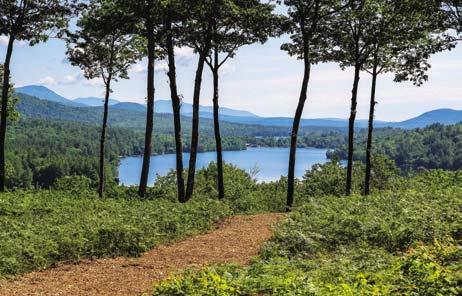






SEP. 3: RANDOLPH, New World Festival. Revel in the vitality of small-town Vermont and the Celtic and French Canadian heritage of northern New England with a day of music and dance. Six stages in the historic village center feature a succession of entertainment, with children’s activities, crafts, and great food, too. 802-728-6464; chandler-arts.org
SEP. 8–10: BURLINGTON, South End Art Hop. Visit the city’s original arts district and discover thousands of works of art as well as outdoor sculpture, performance art, live demos and workshops, kids’ activities, and a fashion show. 802-859-9222; seaba.com
SEP. 14–17: TUNBRIDGE, World’s Fair. Explore family farm traditions from the past with antique farm machinery and implements and an authentic one-room schoolhouse. But the fun at the fairgrounds doesn’t stop there: There are pig races, harness races, and an old-fashioned carnival, too. 802-889-5555; tunbridgeworldsfair.com
SEP. 16–17: BENNINGTON, Bennington Quiltfest. Featuring more than 100 quilts, this annual show at Mount Anthony School also has demonstrations, raffles, and vendors. 802-823-4631; benningtonquiltfest.com
SEP. 23–24: WOODSTOCK, Vermont Woodworking and Forest Festival. Billings Farm and Museum and Marsh-Billings-Rockefeller National Historical Park host this weekend of woodworking demonstrations and events, where you can meet the artisans who create fine wood furniture, utensils, jewelry, bowls, cutting boards, toys, cabinetry, and flooring. 802-747-7900; vermontwoodfestival.org
SEP. 29–30: WESTON, Weston Antiques Show. This benefit show at the Weston Playhouse has dealers from across the nation presenting Americana, silver, furnishings, jewelry, and other treasures. weston-vermont.com
SEP. 29–OCT. 1: MANCHESTER, Manchester Fall Art and Craft Show. Riley Rink at Hunter Park plays host to more than 175 exhibitors selling fine art, crafts, and more. Make it a family outing and spend the day enjoying live entertainment and great local foods. 802-425-3399; craftproducers.com
OCT. 6–8: STOWE, Stowe Foliage Arts Festival. More than 100 juried artisans come to beautiful Topnotch Field at the height of foliage season for the area’s biggest autumn arts festival. 802-425-3399; craftproducers.com

OCT. 7–8: WINDSOR, Harpoon Octoberfest

Vermont. With the upper valley’s peak foliage scenery as the backdrop, visit Harpoon Brewery and toast the season with live music, chicken dancing, hearty German fare, and freshly brewed beer. harpoonbrewery.com
OCT. 12–15: BRATTLEBORO, Brattleboro Literary Festival. Multiple locations host readings, panels, and special events featuring emerging and established authors. Past participants have included winners of the Pulitzer, the National Book Award, and the Newbery Medal. brattleboroliteraryfestival.org
Shelburne Museum’s renowned water fowl decoy collection— featuring works by Elmer Crowell, Shang Wheeler, Albert Laing, and more—takes up residence in the meticulously















 BY BILL SCHELLER
BY BILL SCHELLER
There’s no need to get in line to see Vermont’s fall colors. You don’t have to hop onto one of the state’s main thoroughfares—Vermont’s “foliage highways”—and string together an itinerary that links one night’s lodging with the next. Nor is it necessary to book a weekend in one of the two or three top-tier destination towns and leaf-peep with the crowd.

Having peeped at a leaf or two in the quarter-century I’ve lived in Vermont, I’ve devised a third way to take in the colors: Pick a “base camp” from among dozens of smaller communities, stay there for a couple of nights, and explore your surroundings within a rough 25-mile radius. There’ll be less traffic, fewer people, just as much color … and maybe even a twisty little back road or an obscure historic site that few travelers know about.
Here are four of my favorites, from north to south. Of course, that’s the way the fall foliage display progresses, too—if you have a week or so, you can follow it along, devising your own route less traveled.
Although Vermont’s polychrome fall foliage didn’t get that way by being tie-dyed, there was a time when you might have thought such was the case in Montgomery. Located a scant eight miles south of the Canadian border, the town was a magnet for counterculture types back when the counter around which local culture revolved was a long marble one in a ’70s watering hole named Kilgore’s, after the Vonnegut character Kilgore Trout.
Located just south of the Canadian border, Montgomery offers some early fireworks in New England’s foliage season.
OPPOSITE : Vintage-style cruising yacht the Northern Star on Lake Memphremagog.

The saloon is no more, although its former home, a big Victorian ark of a building, still dominates Montgomery Center’s lone business block. The hippie aura is likewise mostly a memory, and today Main Street is home to two elegant hostelries, The Inn and the Phineas Swann Bed & Breakfast Either might well serve as a base for exploring this corner of Vermont, where Franklin County’s dairy lands meet the forests of the Northeast Kingdom, all in the shadow of one very big mountain, Jay Peak.
If there’s one thing that shouts “Vermont” more than fall foliage, it’s covered bridges. Montgomery reputedly boasts the most of any town in the nation—six in all. I headed out early from Montgomery Center to look in on my favorite, the West Hill Bridge on remote Creamery Bridge Road (the town office has a map of all six, handy even for us locals), and found that it had been spiffily restored since I last saw it. No longer looking neglected and almost spooky, it wore its new wooden sheathing in calm contrast to the riot of surrounding color.
I was tempted to continue collecting covered bridges, but the new day and the fine weather called for more extensive wanderings. To get an overview of the terrain I wanted to cover, as well as sights a good deal farther afield, I rode the Jay Peak Resort’s aerial tram to the mountain’s nearly 4,000-foot summit. With vistas ranging clockwise from Quebec’s Eastern Townships to Vermont’s Northeast Kingdom to Mount Mansfield to Lake Champlain, the question became “Where to next?” I settled on Newport, at the southern end of borderstraddling Lake Memphremagog.
Newport’s boardwalk promenade brought me to the Northern Star a 90-minute lunch cruise on the U.S. side’s only Memphremagog excursion boat. If there’s a more laid-back way to enjoy autumn’s panorama, it would have to involve an Imax theater. Later, I popped into the Northeast Kingdom Tasting Center downtown, where I took a glass-by-glass tour of local ice ciders and stocked up on fresh-baked cookies for a deliberately

circuitous ride back to Montgomery. That ride involved a jog down Route 100 and, at Lowell, a turn onto the Bayley-Hazen Military Road (Route 58). Named for a pair of Continental Army officers charged with constructing an invasion route to Canada during the American Revolution, the road never made it to the border—it was, the Yankees figured, too likely to become a two-way street. Today the stretch between Lowell and Montgomery Center is an unpaved tunnel through dense hardwood forests, reaching a nearly 1,800-foot crest at Hazen’s Notch. October is the last reliable month for traveling the old invasion
road, as it closes when the trees give way to bare branches and winter white.
On my last day in Montgomery, I staged my own invasion of Canada, driving through the border crossing at Richmond to the lively town of Sutton, Quebec. Here I found a cozy bistro, Le Cafetier, serving immense bowls of café au lait. At a gourmet food shop called Le Rumeur Affamée, I discovered a spectacular runny cheese, Epoisses Berthaut, beneath whose orange rind lies something that Brie might become if it were to grow up and take a worldlier attitude. With a bag of handmade bonbons from Chocolaterie Belge Muriel nestled next to my gearshift, I headed back to Montgomery and my pleasantly interrupted survey of covered bridges.
I have to admit I was torn. I was, after all, in the mountain bike capital of New England, and the people at the Kingdom Trails office, in East Burke, assured me there were plenty of easy trails—marked in green on their map—that even a road biker like me could negotiate. And there was that rental center right across from the Wildflower Inn , where I was staying. But I decided I’d rather look up at the trees than down at the next bump, so I stuck to the roadways and footpaths in this sporty little shire.
I walked Darling Hill Road, past the old Darling mansion, a neoGeorgian banana cream pie of a building in yellow and white, and along pastures where Belted Galloway cattle grazed. The trimly bordered pastures, as well as the Quebecois cyclists gathered to visit the lovely, privately built Chapel of the Holy Family just above, lent a look of rural Europe to the scene.
For a taste of rougher terrain, I drove the two-mile toll road to the summit of Burke Mountain . From the platform that surrounds the terminus of Burke Mountain Resort’s highest chairlift, I looked to the northwest, where Mounts Pisgah and Hor cradle Lake Willoughby. Amazingly, I was alone up there, above so much color and under so vast a blue sky. I could think of more than a few other lofty Vermont vantage points where my immediate foreground view might have been of someone’s hat. And solitude, of course, meant that there were no mountain bikers around to make me look guiltily at my car.
The next morning brought a light drizzle, but I knew just what to do when I found myself near Lyndonville in that sort of weather. Green Mountain Books and Prints , a couple of blocks away from the town green and its row of “painted lady” Victorian homes, is a delightfully cluttered trove of secondhand volumes. I got myself lost in there after an espresso at the nearby Grindstone Café , and didn’t come up for air until I glanced out the window and saw that the rain clouds were lifting.
I drove the 10 miles south to St. Johnsbury. If it had still been raining, I’d probably have hunkered down at the Fairbanks Museum and Planetarium or dropped into the St. Johnsbury Athenaeum to revisit its collection of 19th-century paintings. But under clear skies, I continued through town to Dog Mountain
Dog Mountain is the crowning achievement of the late beloved artist, illustrator, and wood-carver Stephen Huneck. The property itself is crowned by the Dog Chapel, an intimate monument to a 30,000-year friendship between species. It’s dogs
all the way in this little chapel, from the stained glass windows to the dog carvings at the end of each pew. Most poignant are the floor-to-ceiling photo tributes to bygone canine pals from their humans. And there he was, my old German shepherd, Max, posed on the edge of his meadow in all his dogly dignity. The picture was right where I put it two years ago.
I left the chapel and walked up to the summit of Dog Mountain—a modest rise, really—and looked out over hillocks of orange, yellow, and vermillion that tumbled off toward the Connecticut River Valley. Max, autumn-born and autumn-departed, would have loved this October stroll.
The Brandon Artists Guild knew what it was doing when it put rocking chairs on the business district sidewalks. These aren’t “art” rocking chairs. You can sit in them, and rock.
After dinner on a crisp fall evening, I stopped mid-saunter to park myself in one of the chairs as if I were on my own porch instead of a street corner. I watched Brandon go by, as shadows fell around the Civil War monument on the green, then strolled on to my lodgings at the Brandon Inn , one of the oldest continuously operating hostelries in Vermont.
For years I had thought of Brandon as merely a sharp bend in Route 7
At St. Johnsbury’s Dog Mountain, notes and photos memorializing beloved pets fill this oneof-a-kind chapel, whose welcome sign reads “All Creeds/All Breeds/ No Dogmas Allowed.”

between Middlebury and Rutland. But I learned just how unfair I’d been when I put up for a couple of days at the inn, and discovered a community where a two-chair barbershop and a hardware store share downtown with the artists guild’s gallery, a fine independent bookstore, and Café Provence , an upscale restaurant with an outdoor patio. Better yet, Brandon proved to be an ideal base for autumn explorations in almost any direction.
I started off with the requisite covered bridge—the Sanderson is right outside town—then meandered north via Routes 73 and 53 to the shores of Lake Dunmore, opposite which a Green Mountain National Forest trail leads to the Falls of Lana , a long series of sluices and pools turned into bright mosaics of fallen leaves and reflections of the ones still hanging on. I could have ascended farther, to pretty little Silver Lake, but the pull of history was taking me south and west of Brandon, to the one official state historic site I had yet to visit:
Hubbardton BattlefieldThere are more direct routes from Brandon to Hubbardton than the
 A snapshot of rural tranquility at the Inn at Mountain View Farm in East Burke.
A snapshot of rural tranquility at the Inn at Mountain View Farm in East Burke.

FALL IS SOMEHOW A GOOD SEASON FOR VISITING PLYMOUTH NOTCH ... THERE SEEMS TO BE A REMINDER THAT COOLIDGE’S TIME WAS THE AUTUMN OF AN OLD YANKEE ERA IN LIFE AND POLITICS.

 Sucker Brook courses through Green Mountain National Forest, heading for its splashy 100-foot-plus descent through the Falls of Lana.
Sucker Brook courses through Green Mountain National Forest, heading for its splashy 100-foot-plus descent through the Falls of Lana.
one I took, but none is better for simply getting lost. High Pond Road , if you can find it, is a terrific excuse for ignoring what’s-her-name on the GPS and bumbling through a crayon-box autumn forest toward Monument Hill Road. When the vistas open up, that’s the rumpled northern verge of the Taconic Range ahead.

The battlefield, which Continental Army troops reached on an eastward march with far less regard for scenery, sprawls across a sloping meadow. Here, on July 7, 1777, they fought a rear-guard battle against their British and German-mercenary pursuers. The rebels were routed, but the enemy’s advance was slowed, and the stage was set for the battles of Bennington and Saratoga. I walked the field alone; battlefields are always more crowded with ghosts when you see them that way.
The next day, looking for scarlet in leaves rather than phantom redcoats, I headed southeast from Brandon to an out-of-the way corner of the national forest that cradles the Chittenden Reservoir and its small near-appendage, Lefferts Pond . I followed a trail that skirts the pond, a mirror for the bright hardwoods crowding its shores, while a lone kayaker shimmered the colors with the slow rhythmic dip of her paddle. Later, when I learned that a day pass at the nearby Mountain Top Inn gives access to a fleet of kayaks and canoes, I took to the water myself, on the vast reservoir.
That runny wedge of Epoisses Berthaut that I bought up in Sutton was all very well in its sophisticated way, but we Vermonters have to stand by our own versions of what Clifton Fadiman once called “milk’s leap toward immortality.” So when I chose Ludlow and environs as a tour base for foliage season, I knew I’d have to make a pilgrimage to nearby Healdville and the Crowley Cheese factory.
“We just finished making,” said a white-aproned woman as I walked into the modest shop in Crowley’s 1882 headquarters, the oldest continuously operating cheese-making plant in the country. “There’s just the four of us, and we’re sitting down for a while.” That gave me a few minutes to poke around the shop, where I saw that although jars of muffuletta and giardiniera had been added to the inventory since my last, long-ago visit, the staple was still the honest unpasteurized cheese that Winfield Crowley once made.

After buying a chunk—it’s quite similar to cheddar, though they don’t call it that—I kept up the dairy theme by heading back down Route 103 to Buttermilk Falls. Fallen leaves swirled in the pools that punctuate the falls as I made a lunch of cheese and the smoked sausage I’d bought at Singleton’s General Store , a must-stop in Proctorsville, on the other side of Ludlow, for anyone in need of picnic provisions (or a coonskin cap, a Hula-Hoop, or Vermont-made whiskey).
I made my Ludlow-area headquarters at Castle Hill , a resort that incorporates a grand stone mansion built at the turn of the 20th century by Vermont governor Allen Fletcher. This “castle” stands in sharp contrast to the home of another, better-known politician, whose life journey took him from a quintessential Vermont hill town all the way to the White House. As I drove the dozen or so miles north to Plymouth Notch, I thought about young Calvin Coolidge walking this route for weekends home from Ludlow’s Black River Academy. Home, of course, was his ancestral village of Plymouth Notch, where his father farmed and ran the general store.
I’ve visited the Calvin Coolidge State Historic Site enough times to know his story well. Coolidge may never rise
And at the end of the day, there would be a comfortable rocking chair waiting for me.FROM TOP : Strolling the Revolutionary War site Hubbardton Battlefield; handmade Crowley cheese, a Vermont tradition for more than a century.
With sections dating from the 1790s, the 1800s, and the 1940s, the MooreBlanchard barn complex presents a patchwork of farming heritage in Plymouth Notch.


Driving or hiking to the top of Mount Ascutney offers the chance to soak up an autumn view like this one from its 25-foot observation tower.

above the middle presidential tier in scholars’ rankings, but his ascent from Plymouth Notch (not that he would have called it an ascent) and his father’s administration of the presidential oath of office by lamplight after Warren Harding’s death still resonate, and still make it worthwhile to look in at that little inaugural parlor. Fall is somehow a good season for visiting Plymouth Notch; the leaves gather on generations of Coolidge graves, and there seems to be a reminder that Coolidge’s time was the autumn of an old Yankee era in life and politics.
Mount Ascutney, east of Ludlow, in Windsor, is one of the peaks that Coolidge famously said moved him “in a way that no other scene could move me.” I finished my ramblings with a trip up the mountain’s staterun toll road, where a park ranger told me as I bought my ticket, “We have an undercast.” While I’d never heard the word, I quickly understood what it meant: I’d drive the lower part of the road surrounded by morning mist, but once up top I’d be rewarded with clear skies and a view of ... morning mist, down below.
I parked at the road’s end and hiked the last half-mile to the summit lookout tower, and, sure enough, I’d arrived above the clouds. But I was in no hurry, and it was wonderful to watch the mists lift, patchily revealing farmland and vibrantly hued forest

and the New Hampshire hills beyond the broad Connecticut River. Over on that other shore, I recalled, painters such as Maxfield Parrish, members of the Cornish Art Colony, once treasured their views of Ascutney. Through the rising mist, I felt as if I were looking back at them.
MONTGOMERY
The Belfry: Busy little pub in a 1900s schoolhouse with burgers, pasta, and an impressively large specials blackboard. 802-326-4400; thebelfryvt.com
Phineas Swann B&B: Pristine (and pet-friendly!) Victorian farmhouse with glorious gardens and antiquesfilled rooms. 802-326-4306; phineasswann.com
The Inn: Historic manor turned boutique hotel, with a hunting lodge ambience and innovative fine dining on-site. 802-326-4391; theinn.us
LYNDONVILLE/BURKE

Burke Publick House: Lively gastropub serving seasonal, local fare alongside a full lineup of regional brews and creative cocktails. 802-6261188; burkepub.com
Miss Lyndonville Diner: Wallet-friendly favorite for breakfast classics and
old-school comfort food. 802-626-9890
Wildflower Inn: Accommodations with country charm on a former dairy farm, plus field-to-table dining at Juniper’s restaurant. 802626-8310; wildflowerinn.com

Inn at Mountain View Farm: Historic 440-acre farm turned B&B with 14 cozy rooms and suites, some with fireplaces. 802-626-9924; innmtnview.com
BRANDON Café Provence: Casually elegant French eatery that includes maple crème brûlée among its killer desserts. 802247-9997; cafeprovencevt.com
Brandon Inn: Grand old Dutch Colonial–style inn on the village green with 39 rooms and suites, plus an outdoor pool. 802-247-5766; brandoninn.com
The Lilac Inn: Nine refined guest rooms (three with fireplaces) in a 1909 mansion
situated on one of Brandon’s prettiest streets. 802-2475463; lilacinn.com
The Downtown Grocery: Big-city excellence in a small town, with highlights including house-made pastas. 802-228-7566; thedowntowngrocery.com
Mojo Café: Inventive Tex-Mex and Cajun cuisine with lots of vegetarian options. 802-228-6656; mojocafevt.com
Castle Hill Resort and Spa: Ten luxury rooms in a c. 1905 stone mansion on a property that also includes rental condos and a hotel, the Pointe. 802-226-7361; castlehillresortvt.com
Echo Lake Inn: Victorian summer hotel that’s now a year-round lakeside retreat, with private dock, tennis courts, and pool. 802-2288602; echolakeinn.com
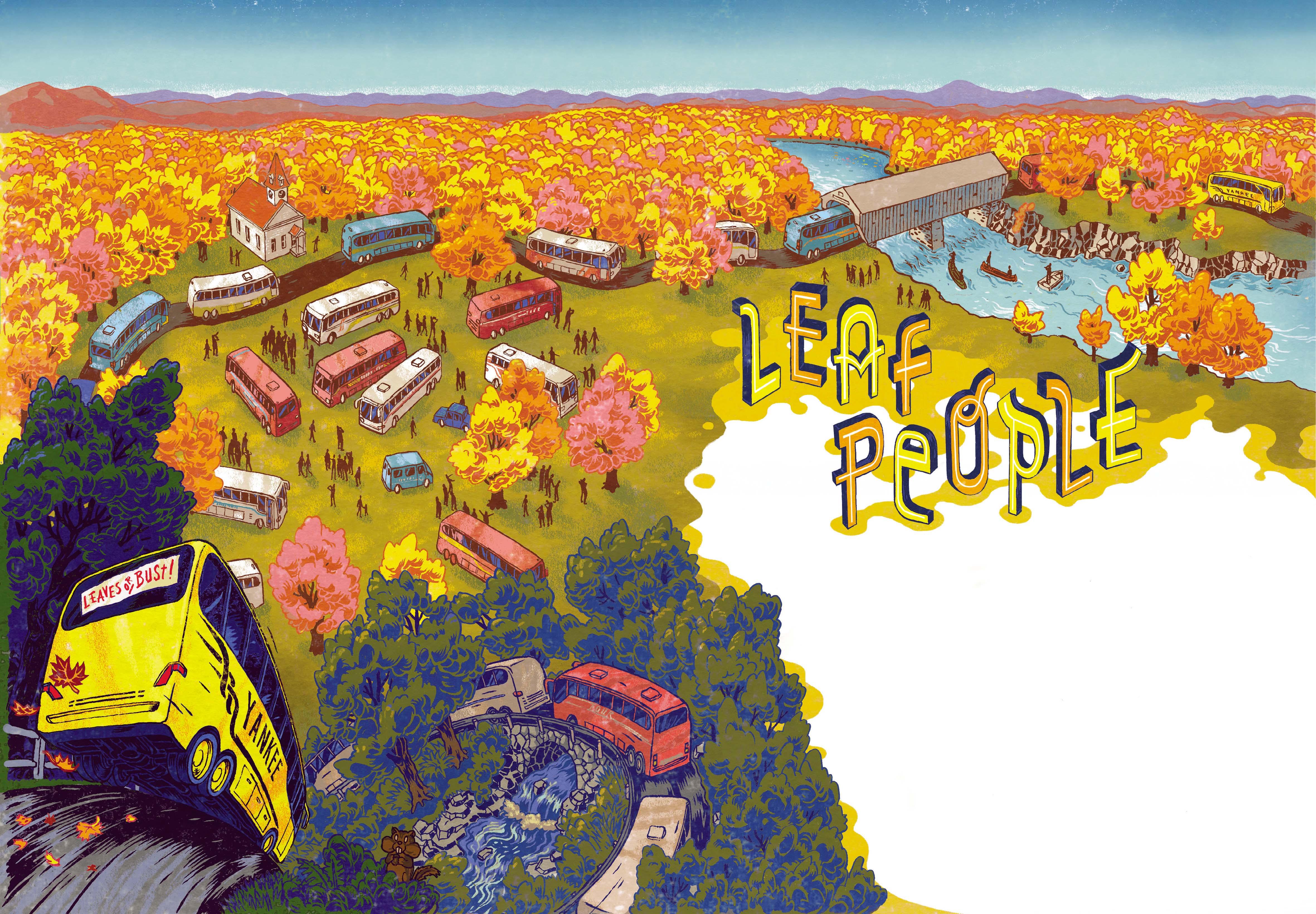
A WEEK ON A GUIDED FOLIAGE TOUR SHOWS OFF NOT ONLY NEW ENGLAND BUT A BIT OF HUMAN NATURE, TOO. BY
IAN ALDRICH
t’s at the Sugar Hill Meetinghouse, on the western edge of New Hampshire’s White Mountains, that we finally find autumn. For nearly a week we’ve been on its trail, investigators looking for clues as to where peak color might be hiding: a row of changing maples on a quiet country road, a rush of crisp morning air. But the New England season of our imagination had proved elusive. It was just up the highway, or maybe a few towns away.
In Woodstock, Vermont, a store clerk looked dismissively at a batch of autumn postcards. “Those pictures are just enhanced,” she said, shaking her head. “I live 45 minutes north, and up there the leaves are amazing.”

But were they?
It was early October, and I was starting to have doubts. The search had begun some five days before, when our group of 44 met in a hotel conference room in Boston for wine and cheese to kick off a weeklong guided bus trip through New England with Connecticutbased tour operator Tauck. From there our journey took us around the city, then south to Hartford before charging north into Vermont and New Hampshire. Maybe we’re too early, some wondered. Or possibly it’s just not a great year for color, others said.
And then we discover the quiet village of Sugar Hill. All the boxes are checked: The white clapboard meetinghouse decked out with pumpkins and browning corn stalks. The near-peaking maples on the front lawn. The blue-sky day. The tidy farmhouse across the street. Nothing—not the private tour of Fenway Park, the free cheese and crackers at the Vermont Country Store, or the stroll through Revolutionary War sites in Lexington and Concord— elicited the excitement this tiny green sparks in my fellow travelers.
I stay in my seat and watch the others take in the moment. One couple does a quick dance, several people pose for photos with the trees, one woman actually hugs one of the maples. On the steps of the meetinghouse, a round of selfies is produced.
my hometown in southwest New Hampshire. Big questions, important questions, come to mind: What compels a person to travel for a week on a bus full of strangers? Are people still speaking to each other at the end of the journey? What are the bathroombreak situations like? I wanted some answers, and so I turned to Tauck, which has been leading foliage trips since 1925, to get them.
My journey begins on a Saturday night in a Boston hotel conference room, where I meet our guide, Gloria Swanson Ream, and my 43 fellow travelers. I am the only New Englander among the group and, at age 43, its youngest member by a good 15 to 20 years. It’s a varied bunch I’ve joined. There’s a North Carolina couple, Thomas Trahey, a cardiologist, and his wife, Arabella, an orthodontist; though
Louis tells the group. “She kept badgering me to go, and I’d say, ‘I don’t know, Mom. There are other places besides New England that I want to see.’ Then last winter I was looking for trips”—and here he simulates flipping through a notebook—“and I found this Tauck tour my folks had taken all those years ago. Here we are.”
On and on the stories go. Only a few in the room, like me, have never taken an organized trip before. Others speak in glowing terms of past journeys, many with Tauck. “I did the Scandinavia trip.” “I went to Italy.” “I was in South Africa a couple of years ago.” They are connoisseurs of this kind of travel: organized, historyladen, upscale. They talk the way an expert might discuss fine wine or chocolate. The mention of competing tour operators elicits groans.
WITH THE TOUR GUIDE’S JOB COMES A LOT OF QUESTIONS. ABOUT NEW ENGLAND HISTORY. ABOUT GLUTEN-FREE OPTIONS FOR LUNCH. ABOUT A HOTEL ROOM’S WEAK HOT WATER. AND, OF COURSE, ABOUT FOLIAGE.
There is euphoria in the air. I understand the jubilation; after so many days, I feel some of it myself.
Following a solid 10 minutes of picture-taking, the crew begins to file back onto the bus. “That’s the best selfie I’ve ever taken,” says a woman from Florida, pausing in the aisle to look at her phone. She laughs with approval. “That’s so good.”
ccording to my own rough calculations, something like 17.2 trillion visitors pour into New England every September and October. Or maybe it just feels that way. They clog small-town centers, snap pictures of leaves, and snatch up tiny bottles of maple syrup, covered-bridge photos, and T-shirts that say Champion Leaf Peeper. Some visit on their own, but many more come via organized tours. I’ve spent most of my life in New England, and every autumn I watch with curiosity the motor coaches that roll through
they’d visited Maine many years ago, this would be their first extensive New England trip. There are two longtime college friends, Cora Hill of Texas and Barbara Danforth of Washington state, both widows in their eighties. “We wanted an excuse to travel together,” says Danforth, laughing. I meet Sharon Tyson of Arizona and her friend Karen Kuehnis of Nevada, who’ve turned to traveling to heal from the recent deaths of their husbands.
California claims the most representatives. There are the Turners, Randy and Polly, who are marking a 50th wedding anniversary, and at the other end of the spectrum are Tom and Teresa Tighe, who are still in the early years of their marriage. Dennis and Sharon Araki are also with us, along with Sharon’s cousin Stan Higashi. Another couple hailing from the Golden State are Louis and Sharon DeLeon. Both former teachers, they’re celebrating Sharon’s recent retirement. “My parents did this same trip 25 years ago and couldn’t stop talking about it,”
“You get what you pay for,” one man tells me at dinner later. “The hotels aren’t as good and not all the meals are covered. This”—he sweeps his hand across the dining room as though presenting a palace—“is firstclass all the way.”
If there’s an expert on Tauck travel among the group, it’s Gilbert Pohl, an 82-year-old retiree from Chicago. A short man with a full head of gray hair, a toothy smile, and a wardrobe that leans heavily on perfectly ironed shirts, Pohl tells me over dinner that he’s taken 48 Tauck trips.
“Actually,” Ream interrupts, “we counted and it’s more like 64.”
“Wow,” he says. “I must be old.”
Pohl’s memories of his first trip, however, are far from foggy. It was early fall in 1964 when he embarked on a two-week excursion that took him around New England and then north to Nova Scotia.
“It cost me just $600,” he says, then adds with a smile, “Plus, I met a girl. It was a good trip.”

enway Park glistens in the morning sun. The ballpark is just hours removed from the outpouring of public affection that accompanied David Ortiz’s final regularseason home game, and workers are hosing down the seats and manicuring the grounds for the upcoming playoff tilt against the Cleveland Indians.
It’s Monday, and Tauck has lined up a private tour of the century-old ballpark. There are several sports fans in our group, and as we turn onto Lansdowne Street a collective “oooohhh” circulates around the bus. Inside Fenway, we climb to the Green Monster seats, trek through the press box, pass a hallway series of black-and-white photos of legendary players, and duck into a small Red Sox museum. Some marvel at the coziness of the park—but not all.
“Look at those seats,” says Pohl, shaking his head. “I’d rather just stay at home and watch it on the big screen.”
In the concourse, Sharon Tyson leans against a giant 34. “Now, whose number is this?” she asks.
“Big Papi’s!” someone shouts out.
“OK,” she says, fumbling for her smartphone. “I’m going to post a picture of it tonight for my nephew. He’s a big baseball fan.”


At the museum, Harold Lutz of St. Louis watches a clip of his Cardinals beating the Red Sox in the 1967 World Series. “Come on,” says his wife, Mathilda. “We have to go.”
He holds up his hand and scrunches his face. “Just give me a second,” he says. “I just want to see them win one more time.”
Pohl approaches Barbara Danforth and her longtime friend Cora Hill, who stand near a display of 1920 baseballs.
“Have you figured out who the oldest one on the trip is?” he asks, placing his hand on Danforth’s shoulder.

“I think I got it,” says Danforth, who’s 86. “Both of you are 82, right?”
They nod. “But what about that couple?” Danforth asks, pointing to Frank and Ingrid Schroeder of Minnesota, who are gingerly making their way across the room. “I checked with him and he said he started working
in ’53, so if you do the math he may be older.”
Danforth watches the Schroeders for a moment. “Eh, I doubt it. I think I may still have it.”
e are on the trail of Paul Revere’s midnight ride. It’s late morning, still Monday, and we are blazing down the Mass. Pike toward Lexington. The afternoon’s itinerary is heavy on colonial history. As we roll up to the Battle Green, downtown Lexington looks like a theme park. Cars and buses nose through the congested pedestrian scene. A few oblivious visitors wander into the road for a better camera angle of the green’s minuteman statue.
“The other way! The other way!” a man instructs a friend who’s taking a shot of him and his family.
A woman in a colonial-era dress leads a small group through the events of the history-changing battle. A young family tags behind, their
6-year-old boy clutching a mound of cotton candy. Stately maples with only early signs of color frame the scene. Across the way at the visitors center, tourists pick through postcards, hats, and books with titles like George vs. George , Why Don’t You Get a Horse, Sam Adams? and Will You Sign Here, John Hancock?
An hour in Lexington is all we need. Back on the bus, Ream resumes her position at the front, clutching a microphone and often standing to face her audience. She’s equal parts emcee and teacher, moving seamlessly from logistical details (bathroom locations are important) to historical tidbits and back again. Sometimes she leans against a seat as she talks; other times she straddles the aisle with the agility of a surfer as the bus makes turns. Her history is succinct—a CliffsNotes version of the region, to be sure—but she keeps it a story, knowing where to amplify the funny and when to dive into some interesting trivia. At one point, the topic of George Washington comes up, and someone in the back asks the name of his horse. A brief pause follows. “Nelson,” she finally answers, and laughs. “You thought you could trick me, huh?”
Ream’s work is an act of sorts, and her onstage partner is the tour’s bus driver, Ryszard Drozdzal. The two have worked together for six years, and Drozdzal, whose speech still carries a heavy accent from his native Poland, can practically finish her sentences. “If you don’t tell the joke about the bales of hay and the marshmallows, I’m not driving anymore,” he tells her as we pass a stretch of Vermont farmland.
Their knack for playing off each other keeps the tone light. Ream informs us that Drozdzal was once New England’s champion moosecaller. “What do you think, Ryszard? Do you think you can perform for the group?” she asks during a rest stop.
“I guess this one time,” he says. He bashfully gets up from his seat, takes a deep breath as he holds the microphone, and launches into his call. “Here, moosey, moosey, moosey,” he says. “Here, moosey, moosey, moosey.” The bus erupts with laughter.
“Oh, he just gets better with age,” Ream says to us. Then she turns to Drozdzal. “Who were the judges, exactly?”
Ream’s ease in her role masks its intensity. The trips are a relentless run of logistics and problem solving. A resident of Phoenix, she has led tours for

Tauck for more than 30 years and works all over the world, but come autumn she’s largely anchored in her native New England. It’s not uncommon for her to lead up to four consecutive weeklong trips, saying good-bye to one group on a Saturday afternoon in Boston and welcoming a new one just a few hours later.

With Ream’s job comes a lot of questions. About New England history. About gluten-free options for lunch. About a hotel room’s weak hot water. And, of course, about foliage. On our trip, the autumn color is scarce in southern New England, and while visits to the Hartford homes of Mark


Twain and Harriet Beecher Stowe are met with enthusiasm, by Tuesday there’s a restlessness to push into the heart of the region. As the bus heads north into Vermont, the mood lightens. The air is cooler, and as we ride through small towns like Chester and Ludlow, the sense begins to deepen
that we’re in the New England many of us have come for.
Just a few miles from our hotel for the evening, the Hawk Mountain Inn and Resort in Plymouth, we stop at the Green Mountain Sugar House. While owner Doug Rose leads most of us on a tour of how he makes maple
syrup, Louis DeLeon takes a seat in a rocker in front of the store and chats up some travelers from another tour group. When we emerge from the evaporator room, DeLeon shares the news he’s heard.
“I was speaking with a fella who just came from up north, and he said the White Mountains are on fire ,” he says, opening his hands wide.





t’s Thursday, late morning, and downtown Woodstock is thick with buses, cars, and pedestrians jostling for space. Main Street is virtually a wide sidewalk, as tourists, most of them wearing name tags, crisscross the road with little regard for the drivers. It’s like spring break for senior citizens.
“You a resident?” one man asks me, a bit desperately, shortly after I get off the bus. “I’m trying to find another ice cream store, because the line at the one over there”—he motions down the street—“is just ridiculous.”
Outside F.H. Gillingham & Sons, a famous country store with all the fixings, two men are killing time
waiting for their wives. “I got that Black & Decker battery on that drill, and boy, it just goes,” says one to his friend, who wears a black Route 66 hat pulled down on his head. Inside, people wander the aisles in search of wall prints, maple candies, and cider doughnuts. “Do you have any T-shirts that just say Vermont ?” an older woman asks a clerk, who responds with a patient smile, “Look in the back.” Nearby, another woman is pawing through prints. “I don’t want anything with fancy edges,” she says to herself.
In front of the Woodstock Inn, a black bus rumbles to life and its passengers begin filing back aboard. “How’s your trip going?” someone asks a father and his teenage son.




Both beam. “We’re from Texas and we love the colors,” the dad responds. “You don’t see these kinds of colors back home.”
Asked where they’re headed next, father and son look at each other and shrug. “You know,” says the dad, “I don’t really know!” And he bursts into a hearty laugh.


There’s a kindred spirit in all this that we feel on our bus, too. When we pull into Woodstock, it’s our fifth full day, yet there’s little indication that anyone is road-weary. Oh sure, there’s been grumbling about a hotel’s hotwater situation, and some complaints about how long a restaurant took to serve us, but overall there’s a cama-
raderie and awe for the New England we’re seeing.

There’s even a sense of looking out for one another. When Cora Hill finds it too difficult to navigate the grounds at Billings Farm & Museum in Woodstock, she requests a wheelchair. Dennis and Sharon Araki then take turns pushing her around the property to make sure she doesn’t miss what the rest of the group is experiencing.
A day after our visit to Woodstock, we’re in New Hampshire, motoring through the White Mountains and Franconia Notch, which is alive with the reds and yellows of maple and beech. Dipping south, we stop at Canterbury Shaker Village. A deepblue October sky hangs overhead, and after a lunch at the museum café we take a tour of the grounds, ducking into barns, workshops, and the church building.
Sharon Tyson eyes the horsedrawn washing machine the Shakers invented. “I don’t know,” she quips, “it doesn’t seem like you could really be a princess here.”
“What are you talking about?” her friend Karen Kuehnis says. “You would love it.”
As we step out of the schoolhouse at the end of the tour, most of the group heads toward the bus. There’s a twohour ride in front of us, to Cape Neddick, Maine, and our final destination, the Cliff House resort. But Cora Hill and Barbara Danforth, the old college friends, hang back a little.

They move toward the edge of the big front lawn that’s lined with maples whose tops are just starting to turn orange. Beyond, a sun-drenched pasture drops down to the road.




“I want to remember this,” says Hill, who is walking with two canes to the row of trees. It’s not an easy stroll—the lawn is uneven in spots—and she takes her time. But she moves with determination, and Danforth is at her side the entire time. This is their first trip to New England together. When they reach the maples, they stand silently for a moment, just looking.
In two days, Hill and Danforth will rent a car in Boston and drive to northern Vermont to continue their New England journey on their own. “My husband and I traveled a lot,” says Hill, walking the long lawn back to the bus. “After he died, I wanted to keep doing it. I didn’t want to slow down. Doing the things that I love, seeing new things—it’s what keeps me going.”
came into this trip a bit dubious of what such tours offered. I suspected that the New England they presented was merely a regional quick-hit bucket list. Here’s a covered bridge. There’s a smalltown meetinghouse. Now let’s eat a lobster dinner. Have pictures taken in front of a Maine lighthouse. Where was the room for spontaneity? For fun? For surprises?
But as we got further into the week, I saw something different. On many vacations, we are often solo actors. We
eat at the same restaurants as other travelers, swim in the same pools, go back to the same kinds of hotel rooms. Typically there’s little engagement with strangers—there’s no incentive to engage. When you’re thrown together with a bunch of strangers on a bus, however, there’s no choice but to socialize. You’re exploring together. You’re seeing places and meeting people for the first time together. There’s a shared experience to draw from, and it can deepen the meaning of what you’re seeing.
And what we did see was probably more diverse than what many of us could have planned for ourselves. For every covered-bridge photo op and general-store visit, there were museums and historical properties, too. In Walpole, New Hampshire, we watched parts of Ken Burns’s new Vietnam War documentary at his Florentine Films studio. In Vermont, we sat for a lecture on the history of the New England landscape. In Boston, we spent part of an afternoon on a foodie tour of the city.
“[Back home] we’ve got history, places from the 1850s, but nothing from 300 years ago,” says Randy Turner, the Californian celebrating his 50th wedding anniversary. “We had thought about doing something like this on our own, but then a friend told us that wouldn’t be a good idea. Even with GPS, there are all those narrow roads. You’re still bound to get lost. You blink, and the town has passed by. And seeing these roads, traveling around like we have, I see that he was right.”
Our final stop on the trip is the Cliff House, on the southern Maine coast. It’s Friday afternoon when we arrive, and after a few days in the mountains and countryside it feels good to arrive at the open, rocky coast. There is space and a warm ocean breeze. A couple of us stand above the water and watch 80-year-old Stan Higashi nimbly scramble over the rocks and down to the sea, where he splashes his hand around.

“How is it?” somebody shouts.


“Really nice,” he says, turning back with a big grin.



Nearing the end, there is no consensus on how we all feel. Some, like Gilbert Pohl, the retiree from Chicago, are up for more traveling. Tomorrow he will hop onto a different bus in Boston to go to New York City. “I want to catch some shows and look at the architecture,” he says.


Others, though, are tired and ready to head home. “It’s been great, but I want to get back,” says Lynn Haurie of Virginia. “I think I hit the wall this morning. I feel like I’ve worn these clothes already.”
We say our good-byes that night over a lobster dinner, and in the morning we step onto the bus one last time. The ride back to Boston is quiet. A few are playing games on their tablets. One woman is looking over finances. “Looks like they received the deposit for our 2018 Alaska trip,” she tells her husband. “We are signed up.”
Outside Boston, the traffic thickens on I-95’s northbound lanes. It’s a Saturday morning, and people are escaping to Maine and New Hampshire.
“Look at the leaf peepers,” says Tom Trahey, the North Carolina cardiologist. Then he catches himself, and laughs. “I mean, fellow leaf peepers.”

A CADRE OF NEW ENGLAND WHEAT GROWERS AND ARTISAN BAKERS WHO PROUDLY CALL

 Blair Marvin of Elmore Mountain Bread, a wood-fired bakery and stone-ground flour mill that she founded with husband Andrew Heyn in Elmore, Vermont. OPPOSITE : Loaves of Thornhill Rye, baked at Elmore Mountain using locally grown rye and wheat.
Blair Marvin of Elmore Mountain Bread, a wood-fired bakery and stone-ground flour mill that she founded with husband Andrew Heyn in Elmore, Vermont. OPPOSITE : Loaves of Thornhill Rye, baked at Elmore Mountain using locally grown rye and wheat.
THEMSELVES “GRAINIACS” ARE CREATING SOME OF THE BEST BREADS IN THE COUNTRY.

The day I learned I’d been eating dead flour all my life came last summer when I wandered into my local co-op and picked up a loaf of hearth bread still warm from its oven. It was dark and crusty, with an ornate wheat pattern cut into the top, and it smelled like a hot field in August. It was called Vermont Redeemer. I bought it because of that smell, which was unlike that of any loaf I’d encountered, and because it was made entirely from organic Vermont wheat, which I’d not thought possible, and especially because the bottom of the bag had something else I’d never seen. It was stamped with the name of the farm that had grown the wheat: Rogers Farmstead, Berlin, Vermont.
As I drove home, it was all I could do not to tear into the loaf. My mind chewed on the conundrums. Vermont wheat? All the wheat I’d ever heard of came from the Midwest. New England’s hardscrabble farms were too hilly, too small, and too wet. Yet clearly somebody had grown this wheat. And somebody had milled it. And somebody had made bread with it.
And what bread! Back home, I tore off a hunk, troweled butter over the top, and wolfed it. It was not showoffy bread; it was richer, creamier, more satisfying. I’d always thought that most whole wheat bread tasted like rank sawdust, so this was a game changer. It had the nutty, green liveliness of mown hay, and I realized that although I had tasted a lot of delicious bread before, none of it had ever tasted freshly killed.
I had no idea why, so I contacted the bakery that had produced the loaf and asked. “We mill all our flour the day before we bake,” explained Blair Marvin, who runs Elmore Mountain Bread with her husband, Andrew Heyn. “That’s what you’re tasting.”
Fresh-milled flour? New concept. Wasn’t flour a white powder you bought in paper bags with a medieval knight on the label? Not theirs, Marvin said. “We built our own mill. Want to come see it?”
Oh, yes, I did.
By the time I arrived at Elmore Mountain Bread, at the end of a dirt road in the Vermont woods, I’d boned up on cereal. Although I’ve written for years about the “good food” movement, as
the Portsmouth chef Evan Mallett calls it, grains had never been on my radar. That suddenly seemed absurd, since they are the basis of agriculture and supply more of the world’s calories than any other food group. But hey, this was New England. We had some of the best local meats and cheeses and veggies on the planet, and we had star bakers churning out wholesome loaves—but those loaves were made with wheat from Kansas and North Dakota. Our bread was about as local as our coffee.
Yet that hadn’t always been the case. In 1800, Vermont and Maine were the breadbasket of the Northeast, supplying New York and Boston. New England once had 15,000 small mills lining its waterways, grinding flour for local consumption. Only after the Erie Canal opened in 1825, and railroads followed, did the Midwest win the grain game. With its warmer, drier summers and massive acreage, it produced cheaper wheat with a higher protein content, which is what gives bread its elasticity. Wheat moved west, the mills followed, and New England’s farmers switched to milking cows and tourists.
Today, a handful of gigantic steel roller mills in the Grain Belt produce most of our flour, and it is almost all white—the ultimate generic, shelfstable commodity. And as with other commodities, flavor is not a consideration. Commercial flour is made from standardized blends of high-yielding wheats designed to have as little noticeable character as possible, and whatever perfume the wheat might retain quickly dissipates after grinding. It’s the blank canvas the artisan baker paints on, not the art.
At least, that’s what I thought until I stepped through Elmore Mountain Bread’s screen door and confronted the oven, a brick altar of wheat veneration. Three metal doors crossed its face, and a rosy-cheeked woman with fair hair spilling out of her black cap was pulling golden baguettes from the middle door. Marvin gave me a floury handshake as she scored a batch of Vermont Redeemer with that intricate wheat pattern, a gramophone tattoo flexing on her arm. “I wanted to make the score on this bread really special,” she explained. “All the other bakeries have straight scores. I wanted to do one that was kind of hard, because I felt like it was a really special bread. It’s so much work, and boy are my hands numb by the end of the day, but the bread totally deserves it.” Beads of sweat glistened on her nose. “Sorry,” she said, “the oven’s crazy hot today.”
Elmore Mountain’s bread is woodfired, the new standard for hardcore bakers. Marvin fires the oven at 9 a.m. the day before and lets it burn for 12 hours. The masonry retains so much heat that 700 loaves can be baked in the cooling oven the following day. “We carefully designed the breads to work with the oven,” Marvin explained. Focaccias, which like high heat, go in first, then baguettes, then more substantial breads that need a longer, cooler bake, like Vermont Redeemer. Breads with maple syrup or honey go in last. “It’s taken a long time to dial it in and figure it out,” Marvin said. “We spent years staring at this thing, baking thousands and thousands of loaves and figuring out how best to utilize the heat.”
Technically not a grain but a fruit seed that’s related to rhubarb and naturally gluten-free. Organically grown in Benedicta, Maine.
Yields an aromatic flour perfect for Nordic-style breads and even cookies.
Organically grown in Benedicta, Maine.
Atlantic Coast variety that grows well in Maine’s cool, moist climate—making for a sweeter oat with a creamy, robust flavor. Organically grown in St. David, Maine.

Member of the old-world “hulled wheat” family, which includes emmer and einkorn. Can be milled for baking or cooked in berry form for soups and salads. Organically grown in Berlin, Vermont (left), and Leeds, Maine (above).
Hard red winter wheat that’s ideal for breads, rolls, pasta— anything needing structure and chew. Fresh-milled flour has a complex aroma with hints of peas, black pepper, and fresh cream. Organically grown in Berlin, Vermont.
Marvin and Heyn designed the oven eight years ago with a gifted mason named William Davenport. For years, they’d used a conventional oven with a single door. They could move just three loaves at a time with a peel, losing heat every time. By the time that oven expired, they had pages of notes on their dream oven, which Davenport built for them. The new oven is larger, better insulated, and bolstered by a steel framework so the bricks won’t blow apart from the constant heat, and it allows them to load or unload two dozen loaves at once with a belted loader through one of the doors without disturbing the others. The moisture from the new batch helps steam a crackly crust on the finishing batch.
Soon the tight-knit community of wood-fired bakers was making the pilgrimage to Elmore to see the Turtlerock oven, as Davenport called it, and to commission their own. One

of the first visitors was Dave Bauer, a celebrated North Carolina baker. Bauer was grinding his own local heritage grains on a small stone mill from Austria to produce uniquely Southern breads and pizza crusts. You can’t imagine what a difference fresh-milled flour makes, he told Marvin and Heyn. They were skeptical. “I wanted consistent flour,” Marvin recalled. “I wanted predictability. I wanted to know exactly what I was getting into.”
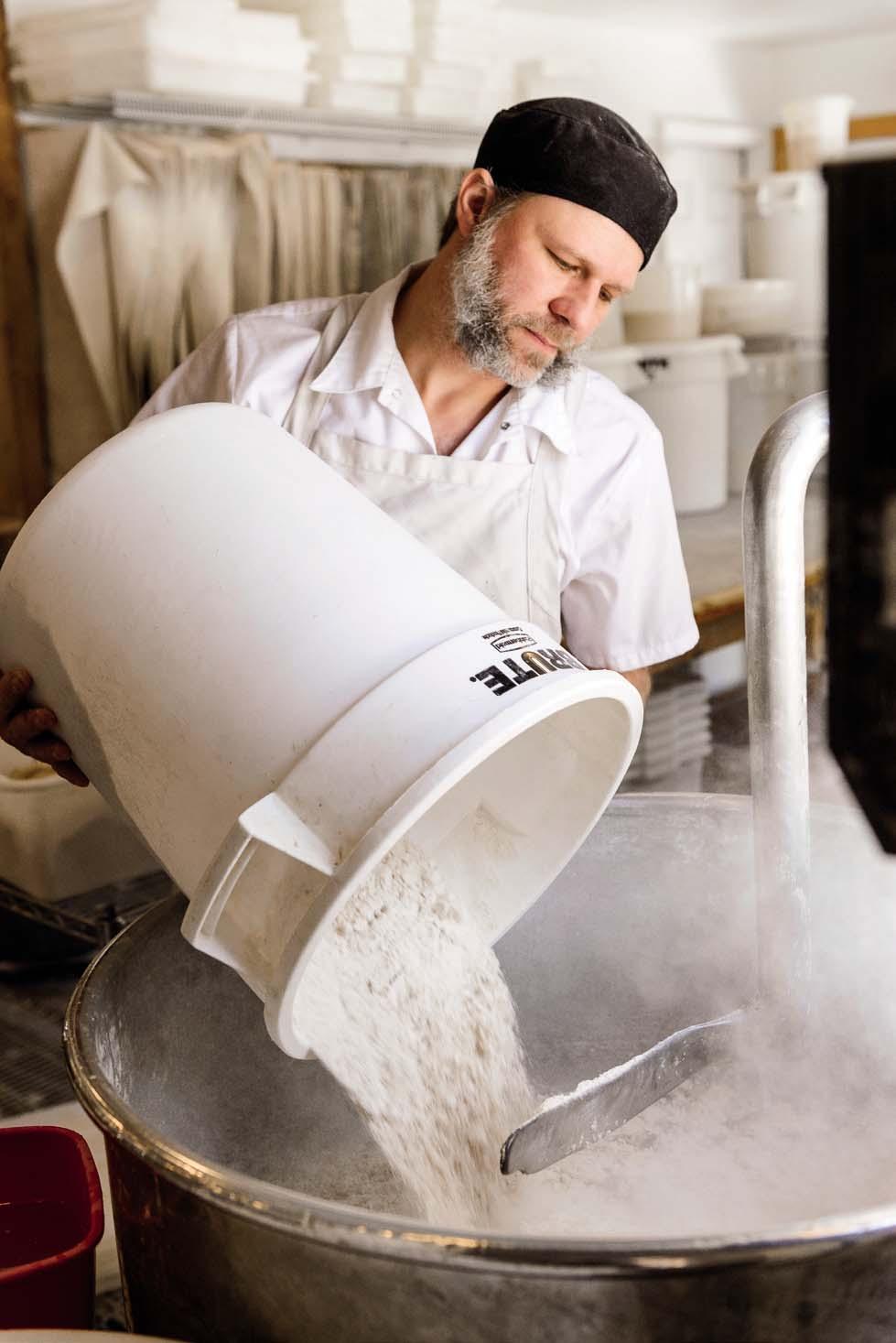
A few days after Bauer’s visit, a FedEx box appeared on their doorstep. Inside were bags of heirloom Bloody Butcher dent corn, Abruzzi rye, and Turkey Red winter wheat that Bauer had milled the day before. They opened up the bags and stuck their heads inside. “BOOM!” Marvin said. “It was this face-punch of flavor! It blew us away. The smell of it! The aroma! That was the moment. We were like, Sold! Done! We have to do this.”
The best grindstones are made of granite, but they need frequent redressing to stay “sharp,” and that’s a lost art. Austrian mills, the only ones commercially available when Marvin and Heyn began looking, are made from a cheaper composite material embedded with grit, so as they wear away they maintain some roughness. They work fine for rustic, Austrianstyle whole grain breads, but they can’t grind fine. As Heyn put it, “It’s like using a Ginsu knife versus a good German chef’s knife.”
Heyn, who has the white stubble, laconic reserve, and tinkering mindset of an old-school New Englander, had a better idea. He pored over 19thcentury milling books, boning up on things like the shape of millstone furrows and the trajectory of wheat berries, and came up with a design for a set of granite millstones that would
grind flour finely enough to make a superb baguette. He ordered the stones from some flabbergasted granite carvers, built a mill around them, ordered some whole wheat berries from Kansas (the only organic supply available that year), and in November 2013 began milling his own flour.
The impact on Elmore Mountain’s bread was profound. Grinding their own grain allowed them to preserve the germ—the oil-rich heart of the kernel that is ejected by industrial roller mills in making white flour—and whatever portion of the husky bran they wanted, giving their flour a creamy color and intense flavor. Marvin couldn’t believe what she’d been missing. “Open up a bag of flour from a large mill and what do you smell? Nothing. When you open up a bin of fresh-milled flour, you smell all of these things. Wheat is not just a blank slate. Each variety has its own aroma, complexity, sweetness, muski-
ness, barniness—all of these flavors to translate into the bread.”
Marvin and Heyn quickly became the poster children of the baking revival. “I have met the next bread,” grain maven Amy Halloran wrote of the pair in The New Bread Basket, her 2015 bible of the movement.

“We got lucky that what we wanted to do fell within the trajectory of bread right now,” Marvin told me with a shrug. “Either that, or we just created our own universe.”
Part of that new universe, they hoped, would be farmers. Bakers have always been limited to the handful of standard flours offered by the big mills, all of which are designed to be as neutral as possible. Marvin and Heyn, however, now had the option of buying wheat berries directly from any farmer they could find. Their first thought was to source locally, but they were
stymied. “We thought that was going to be easy,” Heyn said. “We had no idea it would be such a challenge.” At the time there were only three people growing wheat commercially in the state, and it was spoken for. The dream of the local loaf was put on hold.
Meanwhile, Heyn found himself in the millstone business. “Other bakers got interested,” he told me. “They’d say, ‘What, you built your own mill? You’re milling all your flour in-house? That’s crazy!’ And then they’d say, ‘Hey, would you build me a mill?’”
Heyn now spends more time on his New American Stone Mills than he does in the bakery. He’s built mills for bakers and millers in Rhode Island, Connecticut, and North Carolina, and a 48-inch monster in Minnesota, and as fast as he can build them, the orders pile up faster.
Why? I wondered. Why would people already committed to long, hard days of sweaty baking pile the arduous task of milling on top? Weren’t we running the clock of industrial progress backward?
For an answer, Heyn brought me to his mill. A thin stream of whole wheat berries funneled down the inverted pyramid of the hopper into the eye in the center of the runner stone, out through the furrows where the whirring runner stone met the stationary bedstone, and into a bucket as fresh flour. I leaned my head into the bucket and breathed in the romance of a hayloft, and for the first time in my life, I thought of flour as a seed.
Of course, if asked I’d have said that grain was made of seed heads, but a lifetime of experiencing flour as a nutritionally barren white powder had conditioned me to think of it otherwise. Seeds: tasty, nutritional gold. Flour: starchy scourge.
in warehouses ever since. I wondered how generations of Americans, mine included, had put up with that.
But then I remembered coffee. Like wheat, coffee is a seed. How many decades was a stale can of Folgers standard fare in American homes and diners? Nobody complained about the old-toast flavor; that was just what coffee tasted like. Not until the 1980s, when a few nuts began grinding their own beans, did people begin to discover the bliss they’d been missing out on. It suddenly seemed obvious to me that this was going to happen with grains, too, and that little Vermont was going to lead the way. But when I proposed this to Marvin, she gave me a funny look. “Have you seen what’s happening in Maine?” she asked. Um, no, I hadn’t. “You are going to the Kneading Conference this month, aren’t you?”
I stammered and said of course I was going to the Kneading Conference. Who wasn’t?
interested in growing or baking with heritage and local grains. She also learned that in the 1830s, Somerset County had produced 239,000 bushels of wheat a year, enough to feed 100,000 people. By 2007, it produced virtually none. So she launched the first Kneading Conference in a pocket park in Skowhegan, 75 bread heads showed up, and things snowballed.
Pretty quickly, Lambke spotted the pinch point in the system. Growing grains requires a lot of infrastructure: You need combines and seed driers and, above all, mills. “I realized that central Maine was not going to participate in Maine’s grain economy unless we had a mill again,” Lambke told me. She visited Kansas State University’s International Grains Program to learn about milling, which turned out to be a dead end. “No faculty member there could tell me anything about stone milling,” she said. So she trekked to Denmark. “What blows me away in
But this was so clearly different, and I began to wonder if the ills we assign to wheat have a lot more to do with the industrial process than with the plant. Marvin agreed. “With the industrialization of food, the quality of bread has gone down, and it’s gotten a bad rap. As we were seeing more and more people not want to eat bread, it increased our desire to make better-tasting, healthier, more interesting bread that was closer to the way people have been eating bread for thousands of years.”
Right now, the evidence is circumstantial but growing that the gluten in naturally leavened, slowly fermented breads acts very differently from the gluten in quick-rise industrial breads, and that the gluten in many heritage wheats is easier to digest than the gluten in modern, high-yielding varieties. And fresh-milled flour unquestionably has more vitamins and enzymes than white flour that was milled months or years ago and has been slowly staling
Somehow the Kneading Conference had been flying under my radar for 10 years in, of all places, Skowhegan, Maine, a down-on-its-luck former mill town of 8,500 people on the Kennebec River, about an hour from Maine’s moneyed coast. Skowhegan is ringed by boarded-up strip malls with grass poking through the pavement, but when I popped into a nondescript bakery downtown to buy a baguette, the baker handed it over the counter and said, “This is made with Sirvinta wheat, an Estonian variety that does very well in this climate. It’s milled right around the block.”
I poked my nose around that block and found the Somerset Grist Mill, a four-story mill started three years ago by Amber Lambke, a local community organizer who also founded the Kneading Conference. While working for the farmers’ market, Lambke had noticed the surge of people
Denmark is that appreciation of whole grains hasn’t been lost. The culture around really good, seedy, dark breads is still there. They’d lost the art of stone milling as well, but they’re about 10 years ahead of us in reestablishing their own grain economy.”
Just as Lambke had assembled the knowledge she needed, a surprisingly perfect space opened up: the local jailhouse. The sturdy cinderblock bruiser was strong enough to hold the milling equipment and thick enough to contain the din. When Lambke toured the building in 2009, it was still full of inmates, but she could picture all those cells filled with milling equipment, and now they are: A four-foot-wide stone mill from Austria, a century-old wooden Clipper cleaner, a de-stoner, a de-huller, a sifter, and all the other obscure pieces of equipment that those of us who enjoy our bread and oatmeal never think about. Lambke milled (continued on p. 148)
I LEANED MY HEAD INTO THE BUCKET AND BREATHED IN THE ROMANCE OF A HAYLOFT, AND FOR THE FIRST TIME IN MY LIFE, I THOUGHT OF FLOUR AS A SEED.
CLOCKWISE FROM TOP LEFT : Amber Lambke of Maine Grains, which operates the Somerset Grist Mill; the mill, sited in an old county jail in Skowhegan; miller Erik LeVine checks a batch of fresh-ground flour; a gravity table “cleans” the grain before milling.





he first delphiniums I ever saw: A man arrived at the door bearing two tremendous spokes of blue. He looked so gallant and so silly at the same time, outdone by his preposterous bouquet—their stems were the length of a car antenna. Soaring from his fist, they poked the doorframe; I stared, dazzled, while my friends, the hosts, scrambled to find a vessel to accommodate his sapphire wands.
A handful of years later, my mom gave me an envelope of seeds marked “Delphiniums 1966.” She’d been cleaning out my great-aunt’s things and found them in a drawer. They must have been left over from Hope Farm in Center Sandwich, New Hampshire, the farm named after my great-aunt, and, well, the condition of positive anticipation.
Hope’s husband, Bill, was a courageous man with a feeble heart, a stockbroker whose doctor said (absurdly), “Try farming,” and so they did, replacing financial stock with livestock. They raised and milked Jerseys and delivered milk around town. They never had children of their own, but my mother spent her childhood summers helping Aunt Hope in the kitchen, and then, fetching the flat basket and clippers, heading out to the garden to cut bouquets.
By the time I was born, Aunt Hope and Uncle Bill had sold their herd. However, as I grew, my aspiration to raise animals and vegetables intensified, and when I’d visit or write to my great-aunt, she’d counsel me with all she knew.
In their envelope, her seeds look like coarsely ground coffee or flecks of tobacco, and I wish I could guess why—unlike so many other things from her life—they had persisted. Also, I wondered whether her delphiniums had been especially beautiful that year—the color of Uncle Bill’s eyes, or a first-prize ribbon at the Sandwich Fair? All through their blooming: U.S. planes started bombing Hanoi; race riots ignited in Cleveland; Bob Dylan crashed his motorcycle; workers broke ground for the World Trade Center.
In 1966, my mom was at college and my dad was working in New York City. I wasn’t even a gleam—my parents wouldn’t meet for two more years.
When I shake the envelope, it chatters with potential: ch, ch, ch.









In 2002, the summer my greataunt died, I was working at a perennial farm in Vermont for a man who could propagate anything, even lady’s slippers. I showed him the packet over my lunch break. “Could you germinate them?” I asked. “Do you think they might take?”
He looked doubtful. “Mmm, probably not. But I’ll try.”
Suddenly my envelope seemed more like a purse of valuable coins. I had to choose: Should I invest them with the propagator, to potentially see a return in the form of blooming things? I knew that if each seed grew, there’d be 68 plants, producing a congregation of blue spires. However, if I turned them over only to learn their potency had expired, then all I’d have is the empty envelope: “Delphiniums 1966.” Then, silly as it is to say, my great-aunt would really be gone.
So I held on to them. I brought them with me when I moved into a farmhouse and began raising my Jersey heifers. The seeds bided their time in a drawer while I planted a garden around a perennial bed that included some delphiniums from my old boss’s inventory.
Every June, those tremendous spokes shot up through the carrots and potatoes, and by mid-July they loomed, cerulean blue, over the zucchini and beets. Amid the low-lying vegetables they looked both gallant and silly. I began to anticipate their blooming, a season within a season.
One day during delphinium season, seven years into work on my own hopedriven farm, I met a man with eyes the same color as the flowers. Three years later, in that enchanted mini season, we eloped beside the garden in front of the people who had made us. I carried a fistful of blue stalks for my bouquet.
When my father, the pastor, asked if anyone knew of a reason why we shouldn’t be joined in marriage, there were so few of us to reply that the question seemed ridiculous. The garden


was our congregation; the delphiniums, witnesses to our vows, swayed in what I think was an assent to proceed.
Recently, I was pawing through a box at the back of my mother’s closet. In it, I found some pictures from Hope Farm. There’s one of my greataunt standing in the dooryard after a whopper of a snowstorm, holding her toddler-size cats, Poukie and Missy, one under each arm. There are pictures of her flower garden featuring her soaring delphiniums. I also found an envelope just like the one containing the flower seeds, only this one was marked “Given me by Mary Wright.” Inside, there’s a snippet of yellow lined paper bearing a handwritten passage:
Lord, help me to go to seed. The fruit I want to bear for you is not some big juicy accomplishment, but the subtle scattering of seeds of your love in many hearts. One seed planted in a heart, nourished and encouraged to grow, can eventually mature and go to seed, yielding a hundred loving kindnesses … help me to go to seed for you.
My Aunt Hope once admitted to me how she and Uncle Bill had desperately wanted to have children, but “it wasn’t meant to be.” She remembered her sole pregnancy ended soon after she and Uncle Bill went for a swim in a too-chilly swimming hole.

It’s been more than 50 years since she gathered the seeds from her garden and pocketed them for a girl who hadn’t been dreamed of yet. This envelope has come over the White Mountains, and across the Connecticut River. I shake the dark pellets into my hand and let each one drop into a cup of this soil. Either way, she continues to live with me.
FIND MORE OF JULIA SHIPLEY’S DISPATCHES FROM HER VERMONT FARM IN YANKEE ’S DIGITAL ISSUES, AVAILABLE FREE TO SUBSCRIBERS. FOR DETAILS, GO TO NEWENGLAND.COM/YANKEE-DIGITAL










From the day this year’s Topsfield Fair opens, on September 29, to its closing more than a week later, some 500,000 people will stroll its fairgrounds, half an hour north of Boston. Not many will know the deep history of the oldest agricultural fair in the country. And not knowing won’t affect their enjoyment of seeing farm animals up close, or watching the oxen and horse pulls in the arena, or ogling 1,000-pound pumpkins, or taking in the aroma of fried dough and the din of the midway. But knowing the past may well add a touch of wonder. Since the 1818 founding of its organizer, the Essex Agricultural Society, the Topsfield Fair has been interrupted only by the Civil War and World War II. The fair is both timeless and timely: When so many Americans seem more connected to the cloud than to the land, we realize we need this—and all country fairs—more than ever.

 PHOTOGRAPHS BY MARK FLEMING Y TYPOGRAPHY BY JEFF ROGERS
PHOTOGRAPHS BY MARK FLEMING Y TYPOGRAPHY BY JEFF ROGERS
Among the many memorable images he brought back from Topsfield, Yankee senior photographer Mark Fleming has some personal standouts, including the one on this spread. “My favorite time to be at the fairgrounds was just after sunrise. Not only is the light beautiful, this is also when the farmers are tending their animals—who seem to be much more social and curious at this time of day, too. This gorgeous Texas longhorn was more than happy to pose for my camera!”


“There’s a certain pride among folks who come to the fair to compete,” Fleming says. “They spend the year honing their skills, many of which have been passed down through generations, all in preparation for their moment in the spotlight. Horsemanship is one of my favorite things to watch at the fair—from the Royal Canadian Mounted Police, who make an annual stop at Topsfield, to the local Barnstable Barn Burners show team, above.”








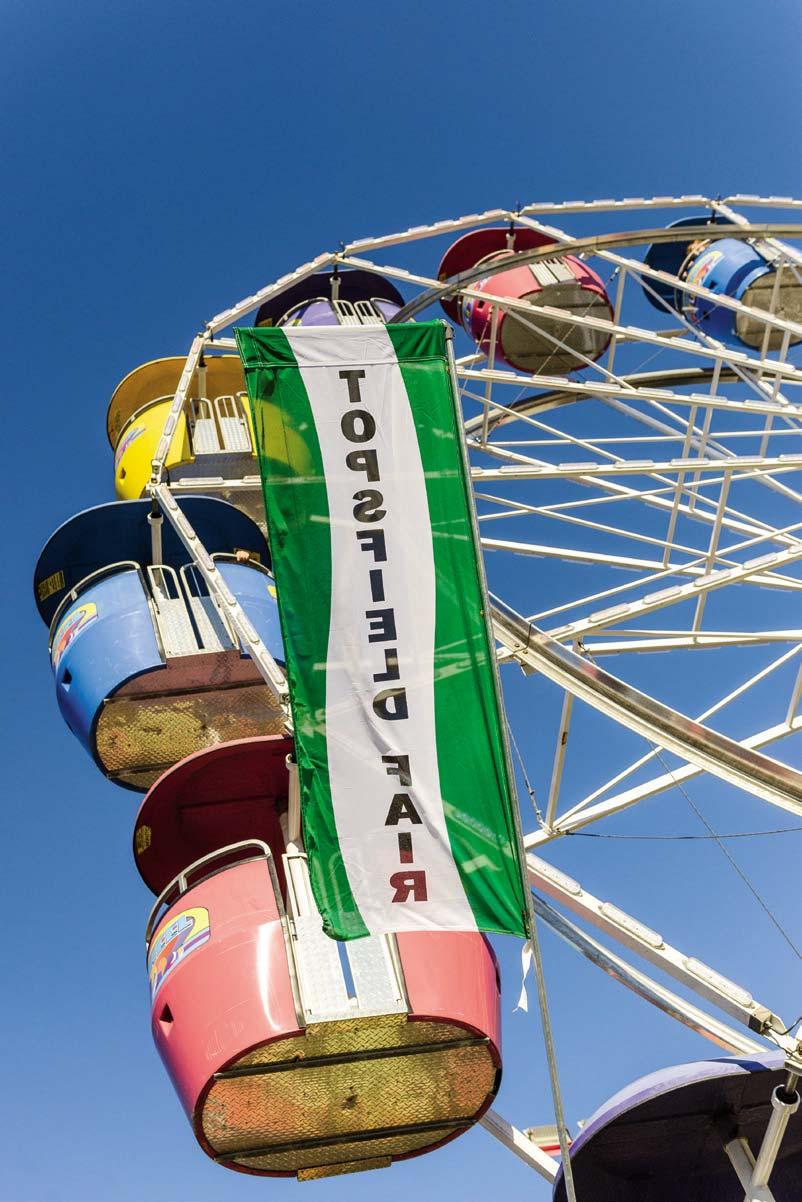


“You haven’t had the full Topsfield experience until you’ve meandered the rows of the midway, fried dough in hand, as boisterous carnival workers invite you to be the next big winner. From pie contests to giant Ferris wheels, a fair is a mix of the ordinary and the outlandish, with each component somehow perfectly blending into the mosaic of New England rural life.”

 Among the images featured in the new documentary The Vietnam War is this 1965 AP photo of Marines marching toward defense positions near Da Nang Air Base.
Among the images featured in the new documentary The Vietnam War is this 1965 AP photo of Marines marching toward defense positions near Da Nang Air Base.

Even the children grow quiet beside the Wall. They seem to know to walk softly on the cobblestones—that though they are in a place they may not entirely understand, the black granite monument needs silence. Memorial Day: The air is cool, but promises to heat up. The formal ceremony at the Vietnam Veterans Memorial in Washington, D.C., where honored documentary filmmakers Ken Burns and Lynn Novick are speaking, will not begin until 1 p.m., but already, hours before, you can hear busloads of school groups chattering up and down the steps of the Lincoln Memorial and all along the grass-lined walkways of the National Mall. But when they reach the 58,318 names inscribed on the Wall, they quiet.
It’s been 35 years since the Wall was dedicated. Maya Lin was a 21-year-old Yale University architecture student when her design was chosen from among 1,421 entered in a national competition. She has said she learned the “power of names” while walking past Yale’s Memorial Rotunda, where the names of fallen alumni seemed to implore that she reach out to touch them.
Today some 5 million people visit the Wall every year, among them tens of thousands of veterans and parents, children, brothers, sisters, and friends of soldiers who died in Vietnam. Many leave a gift, a memory, from the lives they have been given to continue. The Wall offers them a place to lay it down.
Flowers. Dozens and dozens of bouquets are tightly clustered, lining the cobblestones. Single-stem roses are propped against the Wall, as if growing there. There are letters, too, many with photographs of soldiers who have the luminous faces of being 18, or 19, or 20. Someone leaves a pair of army boots. Someone else a faded green uniform. Eyes search the

Wall, scanning the rows, then the hands follow, resting on a name. People hold scraps of paper against the Wall, rub them with pencils until a name emerges. Some kneel stiffly, then struggle to straighten. A woman looks on and murmurs, “They were all the same age then. They are the same age now.”
By 1:00 the sun sears the stage where the invited speakers are sitting, facing the lawn. Someone gives Ken Burns a green floppy hat; beside him, Lynn Novick shades her face with a program. After the opening ceremonies, a woman named Julie Kink speaks about her brother, David, a helicopter pilot lost in Vietnam at age 19. She has spent 25 years tracking down the men who served with her brother. “Finding his friends brought me closer,” she says. “Not closure— closer. In his last letter home, my brother wrote, ‘You are never alone on a mission.’” She pauses. “Every name on that wall had a family, and that family is us….”
And then Burns and Novick, codirectors of The Vietnam War, which will enter America’s living rooms for 18 hours this September on PBS, step to the podium. “It is overwhelming to stand in this profound place,” Burns begins.
For 10 years, they and their team at Florentine Films have grappled with the complexity of their task. How to fit the story of a war that, as one soldier in the film says, “drove a stake into the heart of America” against the turbulent backdrop of the time: the internal politics, the battleground, the antiwar demonstrations; the terrible rifts between young and old, neighbor and neighbor; what happened to soldiers at war, and what happened when they came home. How to make a film that speaks to those who sought refuge in Canada as well as those who lost buddies and loved ones in Vietnam. How to reach both those old enough to remember everything and the newer generations. How to show viewers that there is another, all but unknown story: the other side. Vietnam, where hundreds of thousands of families were plunged into grief. Where they call it “the American War.”
“You are the keepers of the complicated story we have tried to tell,” Novick says, looking out to the lawn where so many veterans are sitting. “In the past 10 years ... we have searched for answers to so many questions. What really happened? Why did things go wrong? Who is to blame? Why do we avoid talking about the war? Why, decades after it ended, are we unable to put Vietnam behind us?” She pauses. “We
did learn one important lesson of the Vietnam War. We will never again blame our soldiers for the policies of our leaders. Never again will we confuse our warriors with the war.” When she says this, the stillness is broken with an outpouring of applause and cheering.
Burns and Novick take turns telling about people they met along the film’s journey. There was the Marine, Burns says, who charged an entrenched machine gun position certain he’d be alone, but when he looked back, every member of his platoon was alongside him. Novick begins talking about a soldier’s mother who followed the war on television and worried when her son’s letters did not arrive. It’s a
story Novick has seen play out over and over in their film, but her voice breaks in the retelling. “Then, on a beautiful day in 1966,” says Burns, picking up the tale, “she looked up and saw two men in uniform coming to the house….”
Burns and Novick say here what they have said many times before: The seeds of the deep discord in America today were sown in Vietnam. “Until we can find a way to talk, not shout across this divide,” Burns says, “the ghosts of the Vietnam War will continue to haunt us.”
Their movie carries a burden that they have placed on it with every interview, every screening—that, just maybe, it can provide common ground, the way this wall embraces everyone no matter their feelings about the war. It is as ambitious a project as we can expect to see now, maybe ever, on our televisions. And it began in a place as far from the fear and heat of a Vietnam firefight as any you can imagine: in the softness of the New England village that Ken Burns calls home.
When you drive to Walpole, New Hampshire, from the south, you pass a sugarhouse that serves pancakes with native syrup, then an apple orchard that overlooks the Connecticut River and Vermont to the west, and then a dairy farm that has been in the same family for more than 300 years. Moments later you find yourself in the heart of a village that Norman Rockwell would have painted, except Rockwell would have had to tear himself away from
“I LIVED THROUGH THE ENTIRE VIETNAM WAR,” BURNS SAYS, “BUT IN MAKING THIS FILM, THE FIRST THING I UNDERSTOOD WAS THAT I KNEW NOTHING .”
the chocolates at L.A. Burdick as well as the fine meals at its namesake restaurant. Just off the edge of the town green, trimmed with stately colonials and churches, is a house like many others, except the interior has been converted into filmmaking studios where film editors and sound mixers converge in the beating heart of Florentine Films.
On this day in mid-April I am meeting Ken Burns a few miles from the village center, at the property where he lives in an old farmhouse and works in offices and screening rooms nestled into two handsome barns. Though he is known as America’s greatest documentary filmmaker, Burns does not seek anonymity in Walpole. Townspeople see him dining at Burdick’s; he’ll often end the day there with staff and sometimes with the people whose stories they’ve filmed. Someone tells me which roads to follow to Burns’s place, noting that there are no signs to indicate that this

is where many of the landmark films about America have been hatched: The Civil War, Baseball , Jazz , Lewis & Clark , Prohibition , and The Roosevelts , among many others.
When he arrived in Walpole in the summer of 1979, Burns was an impoverished 27-year-old filmmaker with his first film, Brooklyn Bridge, still two years away from its audience acclaim and subsequent Academy Award nomination. His New York landlord had just raised his monthly rent to $325, an impossible amount, and he’d found this farmhouse for only $225.
Burns knew rural New England from his student years at Hampshire College, on the outskirts of Amherst, Massachusetts. The school had drawn such notable faculty members as photographers Jerome Liebling and Elaine Mayes, who infused in Burns the desire to make documentary films. His final college film project took him to Old Sturbridge Village; there, for one of his last frames, he focused his camera on a
painting of a farmhouse ... then slowly panned to a factory. It was the earliest experiment with what later became known as the “Ken Burns effect,” in which archival photographs are filmed with depth and emotion, the camera teasing life from stillness. “Little did I know that I had just walked into my future,” Burns has said.
When he and a small cadre of other young filmmakers launched their company, they took the name Florentine Films from Florence, Massachusetts, home of their early supporter, Elaine Mayes. With The Civil War ’s groundbreaking success in 1990, finances improved, and a few years later, when the Walpole landlord said he wanted to sell, Burns was eager to buy. He raised a family here, renovated one barn and built another, added a guesthouse, and bought the second house by the town green for his studios.
Today his private office is on the second floor of a white barn a few steps away from his home. When I enter, Chester, the family dog, barks a greeting from the top of the stairs. Burns has always possessed the aura of eternal boyishness; now, in his early sixties, there is gray in his black hair and mustache. He wears a sweatshirt and jeans, a scarf around his neck. Posters and photographs from nearly four decades of filmmaking line the walls. His office is small; a shelf of baseballs, a photo of Jackie Robinson, a jar of dust from the Dust Bowl all jostle for space.
He calls The Vietnam War “as epic a story as we have ever tried to tell.” The project began in late 2006, when he and Lynn Novick, one of his closest collaborators on many films, were putting the final touches on The War, about World War II. As he recalls it, they looked at each other and said, “The Civil War The War. We’ve got to do Vietnam.” They both felt Vietnam was the most significant event in America since the end of World War II, “yet nobody talked about it, nobody understood it,” Burns says. “I lived through the entire Vietnam War, but in making this film, the first thing I understood was that I knew nothing.”
The Pelatiah Leete House is one of the earliest surviving dwellings built in Guilford, CT in the early 18th century, by Pelatiah Leete, the grandson of Guilford founder, and Connecticut governor, William Leete. It is one of only a handful of properties in Guilford that is included on the National Register of Historic Places. In 1781, during the American Revolution, the Battle of Leetes Island was fought across the road from the house and its surviving 1705 barn, and Simeon Leete, who lived in the house at that time with his wife and three small children, was mortally wounded near the conclusion of the battle. He was brought back to the house, where he died, at age 28, the following day. His gravestone is around the corner from the house, on land owned by the Leete family since 1661, and an annual celebration of his life is held every June on the Sunday nearest June 19, the anniversary of his death date. The Sixth Connecticut Regiment of the Continental Line performs musket drills and live firing at the event, which draws numerous neighbors and townspeople.






AUTHENTIC
from around the world, as well as the heartland of America.
P.O. Box 130
• Perkiomenville PA 18074


Email: info@old-village.com



Tel: 215-234-4600 • Fax: 215-234-4601

Toll Free: 800-498-7687 | www.old-village.com




Two days after our visit Burns will be speaking at the University of Michigan, where, in a sense, this movie and all his others began. When he was 9, his family moved to Ann Arbor, where his father, Robert Kyle Burns Jr., began teaching in the anthropology department. Burns’s mother, Lyla, had been ill with cancer since he was 3, and impending tragedy hovered over their lives. In March 1965, his father helped organize the nation’s first antiwar teach-in. A few weeks later, Burns’s mother died; she was 43. Neither Burns nor his brother nor his father could cry at the service. But later he saw his father weep while watching a movie on television, and he recognized the power of film to awaken emotions. He knew then what he wanted to do with his life. Burns has long believed that “we experience history at its most impactful through the lives of ordinary people.” In his films, photographs of “ordinary people” shimmer as if alive. Years after he achieved fame, he would finally understand that his passion emerged from “a thinly disguised attempt to raise the dead. And there was really only one person I wanted to bring back.”
With The Vietnam War, the task before Burns and Novick was to navigate the most wrenching years in America since the Civil War. To be willing to reopen wounds and reveal truths through “ordinary people” and their memories. To weave these truths together to connect nations once locked in a war neither ever truly understood.
There are hundreds of books about Vietnam, and the Florentine team dived in: from Tim O’Brien’s combat novels, to scholarly history and political analysis, to unpublished memoirs that were sitting forgotten in the Library of Congress. They combed through old news broadcasts and followed leads wherever they pointed— which in 2010 brought them to Tom Vallely, a decorated former Marine who was now an influential expert on modern-day Vietnam. He joined the team and helped open doors into that country, where the filmmakers found soldiers and civilians who had waited 50 years to be heard.
In a few years, they had files filled with people, more than 100, whose lives had been forever changed by the war: in America and Canada, and in Vietnam. The soul of the movie emerged when they heard stories that could tear a heart apart but also mend it in the telling. The artistry came next, “braiding them together,” then flowing in a soundtrack as memorable and as haunting as the words.
Burns talks about the “huge responsibility” that comes with turning the camera on someone who has rarely spoken about what happened half a century ago. There is the young doctor, Hal Kushner, whose helicopter is shot down and who is thrown into nearly six years of unimaginable hardship in enemy prison camps. Today he practices in Florida and vacations at his summer home in Maine, and rarely, if ever, relives those years. You watch him on an old newsreel as he first tastes freedom; later you watch him, now in his seventies, struggle to describe the indescribable. There is a Viet Cong soldier who says he will never forget peering through the jungle at Americans crying over the body of a friend and “seeing they were human like we were. They were like us.” And back home, a New York woman describes in a halting voice how she joined protestors shout-

ing epithets at the returning soldiers, calling them “baby-killers.” “I just want to say I am sorry,” she says through tears. “We were kids, too.”
I tell Burns I’ve read that he’s called this his most “controversial” film.
“Only among those who don’t watch it,” he answers.
He continues, “The subject is controversial. The film is not. The film, I hope, is a work of art. I hope it’s the best film ever made. I suspect it’s not. But I really hope it is.
“Look, you understand that it’s thousands of hours down to 18? I mean, 18 is nothing. That’s short.... I always use the metaphor of maple syrup: 40 gallons of sap boiled down to one gallon of syrup. And that’s what we do. Subtraction. Yet sometimes we go the opposite way. We only had a single sentence about Kent State in the script. And I just happened to be giving a speech at Kent State. And they said they just opened this new little museum on what happened on May 4, 1970. It was no bigger than this office. I heard audiotapes and I came back here and said, ‘We’ve got to open it up.’ It’s an unbelievable scene. It hurt to watch it.
“I promise you,” he says, “there’s some really tough stuff in here. But not too tough. Particularly if you watch it with someone you love.” He looks at


me. “Know what I mean? And have handkerchiefs. Because you will not get through this.”
In the screening-room barn, the Florentine team would show episodes from the film to groups that often included vets. “It was still raw, unfinished,” Burns recalls. “And these veterans would go out to smoke together or to hug each other or to cry. We had the head of programming for PBS sobbing and saying, ‘We’ll never put on anything more important than this.’”
Burns says again, “It’s really important not to watch alone.”
There’s a gift that a few people possess that is almost impossible to describe, but you know you are in its presence when the camera closes in on someone who has known tragedy or terror and you, the viewer, feel as if you have been allowed to share a special secret. This is the gift of Lynn Novick.
“She is the best interviewer I have ever seen,” says Jack Todd. Today he is a well-known Montreal sportswriter, but long ago, when his Marine unit was deploying, he fled from the U.S. to Canada. His best friend had returned from Vietnam, pleading with him to
get away. Leave, his friend said, leave Years later, Todd wrote a memoir about what it was like to lose family and country, thinking he would never see either again. An estimated 100,000 American boys like him went to Canada, and his story in the movie became a way to show the reasons and consequences. “It was a powerful experience talking with Lynn,” he says.
Now it’s the day after I met Burns in New Hampshire, and Novick is telling me about her years immersed in a war she was once too young to understand.
“I knew something very important and serious and really bad was happening,” she says. “But I didn’t know why. I was a child.” During the making of the film, she made three intense trips to Vietnam, listening closely to voices that had finally found a listener. In America, too, she entered the lives of people who gave her permission to simply ask what it had been like. “There was a period of time,” Novick says, “there was a series of interviews that I did ... I remember saying to Sarah [Botstein], our producer, that I feel my job is to make grown men cry. And I cry, too.”
We are sitting in a conference room at the Ash Center for Democratic Governance and Innovation at Harvard University, a few hours before a screening in a packed auditorium at the Fogg Museum. Beside her is Tom Vallely, who has forged a career at the Ash Center; today he is its senior adviser for mainland Southeast Asia and former director of its Vietnam program. He went from fighting the Viet Cong and North Vietnamese to eventually learning as much about them— their culture, their politics, how they think, their education system, how they have rebuilt a country—as anyone in America. “No one was more important to this movie than Tom Vallely,” Burns says. “He was a persistent guiding force. He opened our eyes to what we could do.”
Novick is describing an interview she did with a North Vietnamese army commander. “We have a lot of angst about the American bodies we have left behind,” Novick says, “and to this day there are still too many that have not been recovered (officially about 1,600). But there are 300,000 missing North Vietnamese. He told us how with so many of his soldiers who were killed, their families never got the body back and no one knows what happened to them. He said every day he gets a call from a family member of someone in his unit asking, ‘Have you found my son?’”

I ask her about coming in so close, so raw, day after day. “I did feel that it was OK to put people [in a place] where they would cry,” she says, “because they wanted to tell the story. And there was something so heroic and courageous to have these words come out. Those are excruciating and painful moments— but if you can tell them, there is something really brave about that.”
Vallely looks on, nodding. He and Novick have an easy familiarity, one that lets them be serious and then laugh moments later, that speaks to all their days together in a distant country, watching the film find its shape, and “nights without sleep, picking things apart,” as Vallely describes it. Novick chimes in, “Tommy would watch something or read something, and he would say, ‘You have it all wrong.’ Or, ‘You’ve left out this very important perspective.’”
What everyone involved with the movie knew was that time was running out. Great stories need storytellers, and on two continents the people with the stories of Vietnam were dying out. “If we didn’t make this film now, it couldn’t be made,” Vallely says.
“Ken and I knew from day one we were not going to tell only the American story,” Novick says. “We wanted to make sure we could understand what it was like in Vietnam. And the only way to do that was to go to Vietnam and to get to know people and to figure out what questions to ask them, and how to ask them. We didn’t know how we were going to do it. We just knew we would. And then we met Tommy.”





• Established: 70+ years strong
• Competitive prices




• Fast turnaround

When you’re ready to sell your collection, contact Littleton Coin Company. With thousands of active collectors and outstanding demand, we need your coins and currency! Our expert staff has over 150 years of combined buying experience and deals with all U.S. coin and paper money types. Experience counts – get knowledgeable, professional service from leaders in the numismatic field!


• Actively buying and retailing collections through the mail since 1945



• Single issues, large collections and hoards
• We spend over $50 million a year on coins & paper money

• As one of the nation’s largest, most trusted retailers, we can pay more!
Find out how to receive your FREE appraisal. Contact Littleton now for your personal and confidential consultation.

We’re buying scrap gold, platinum and silver, unwanted or broken precious metal jewelry, watches and rings.
















Mention B9E821 to get your FREE Seller’s Guide!
“When I decided to sell my coins, I was looking for three things: timely replies, professional, respectful treatment and a fair price… I got all three…”



J.P., Wadsworth, OH

Tom Vallely had grown up outside Boston, in Newton, one of eight children of a judge and a mother raised in Vermont who felt the war was wrong and misguided. But in his head was “The Ballad of the Green Berets,” a song that all these years later he can’t listen to without wanting to fold up.
“It’s 1968. I’m in high school,” he recalls. “And I’m young. I’m believing in the American idea. I’m listening to John Kennedy’s words: ‘We shall pay any price, bear any burden, meet any hardship ... to assure the survival and success of liberty.’” He joined the Marines and found enough hardships for a lifetime, as a member of I-Corps in Quay Nam, a region that saw constant fighting and that he today describes succinctly as “a tough place.”
Awarded the Silver Star for his actions during an August 1969 firefight, Vallely came home a hero from a war he no longer believed America could win. His certainty of the war’s futility led him to the Massachusetts congressional campaign of antiwar activist Father Robert Drinan. Vallely still looked the part of the battlehardened Marine, and he became the heroic vet against the war that Drinan wanted on the trail. He also found kinship with another Massachusetts vet, John Kerry, whose opposition to the war would make him a national figure. Vallely and Kerry stood together on the National Mall in April 1971 with 1,000 other Vietnam vets, who threw medals and ribbons over a fence not to dishonor the soldiers in combat, they stressed, but to save them from a war that no longer should be fought.
Vallely had never been a brilliant student, but he was “street smart” and so made his way to Harvard, political consulting, and the state legislature. He became a leader in bringing the best and brightest young Vietnamese to Harvard on scholarship, and he was the guiding hand in establishing the Fulbright University in Vietnam. He knows modern-day Vietnam; he can maneuver, as he says, “in the neighborhood.” And as someone who could get things done in a country more than
8,000 miles away, he was exactly what Burns and Novick needed.
Yet at first he said no. “I’m not a historian,” he told them. “You want a scholar.” His son, Charlie, was incredulous. “Dad, do you know these people? You’d better go talk to them. They describe America to Americans, so you’d better call them back.”
Vallely did. “I showed them the winning side,” he says. “I introduced them to the people who won.”
I ask him what it was like to watch the unfolding episodes. I ask if he ever had to turn away. He shakes his head. “No,” he says quickly. “I’m very good at cleansing my emotions. I can get over something. I can handle it.”
Vallely adds, “My 19-year-old mindset is a very tough, not particularly
went through.’ And ‘How can anyone understand the sacrifices that we made?’ And ‘How incredibly difficult this period was if we don’t talk about it.’ And ‘I’m old. And if I don’t tell you, then maybe that story will be lost.’”
Novick and Vallely are preparing to return to Vietnam to screen the film in translation two months before the U.S. premiere. “We’re showing the Vietnam side,” Vallely says. “We’re getting them ready for what’s going to happen. Oh, this film will shake up Vietnam a little bit. This will shake up this country a little bit. So get ready.”
Novick tells me about interviewing the mother that she and Burns would later mention in their Memorial Day speech at the Wall. “She was reliving the day for me when the soldiers came
emotional”—and he stops, swallows, cleansing, finishing—“killer.” Silence. Then, “I’m fine. I’m not that anymore.”
Novick continues the story: “Through Tommy, we had this extraordinary Vietnamese producer, Ho Dang Hoa, and we explained that we were filmmakers from America. What really struck me on a human level was to just sit and talk to someone like we are doing right now. And I’d say, ‘Tell me your story. What happened to you during the war?’ And I think they were open to telling it because they don’t get questioned about it that way. I would say something, and Hoa would translate. We said, ‘We want to know what it was like for people to live through it. We want to know what your family went through. What you went through. What you remember. What you think about it now.’ The same questions I would ask anyone here. I remember people saying things like, ‘You know, we never talk about what the war was really like—it’s too painful. But I want my children, I want my grandchildren, I want your country, to know what we
to the door. I’m not very religious, but something very profound happened in that conversation. And if that doesn’t change you, then you shouldn’t be doing this. So I don’t forget about her. She becomes a part of me, truly.”
A few weeks later, I phone the mother. Born in Massachusetts, she had raised her family a few hours’ drive away. I want to know what it was like to be on the other side of the Florentine Films camera. She says when she went to a screening in New York, she was overwhelmed, and spent the next day in her room. But she concedes the movie will be a legacy for her grandchildren and, one day, their children.
“This movie will make a difference,” she says. “People will be more accepting and respect what our children did. I don’t like to speak for other people, but this was so helpful to my son and daughter to share their feelings. For a long time, whenever someone said the word ‘Vietnam,’ they had to leave the room. This movie has changed that. Now they can talk about it. They are free.”
PEOPLE IN VIETNAM TOLD NOVICK THAT ALTHOUGH THE WAR WAS OFTEN TOO PAINFUL TO TALK ABOUT, “I WANT MY CHILDREN, I WANT MY GRANDCHILDREN, I WANT YOUR COUNTRY, TO KNOW WHAT WE WENT THROUGH.”
A simple silver bracelet made unique with your monogram
Beautifully crafted in our Rhode Island studios, your own personalized monogram becomes a work of art. Centered on a slim chain, the stylized medallion ensures that this delightful design will be truly yours and yours alone.

$59 Plus Free Shipping Sterling Silver Monogram Bracelet 63 4" length. Sterling silver rolo chain. Lobster clasp. Scripted type. Please allow 2-3 weeks for delivery. Shown larger for detail.
Ross-Simons Item #811320
To receive this special offer, use offer code: ALLME92 1.800.556.7376 or visit www.ross-simons.com/ALLME
(continued from p. 124)
about 700 tons of wheat, oats, corn, and rye in 2016—a rounding error compared with one of the Midwest’s industrial roller mills, which produce 600 tons a day, but revolutions always start small. More than a dozen farmers around Somerset County have jumped onto the grain bandwagon, and others are on the way.
A mile north of the grist mill, at the Skowhegan Fairgrounds, I climbed aboard that bandwagon at the Kneading Conference, which I quickly rechristened the Forearms Festival for all the bulging, tattooed flexors on display among its millers, bakers, and oven makers. “We’re on the precipice of a grain explosion,” Tristan Noyes, the young executive director of the Maine Grain Alliance, told the crunchy crowd. “We’re beginning to reap the rewards of creating an interconnected community of grainiacs.”
Grainiacs, it turns out, are earnest, industrious, sweet, and slightly nuts. “You can grow all the grain you need to make your own bread for a year in an area the size of a two-car garage,” a seed evangelist named Richard Roberts told us in the seminar on heritage grains. And you should harvest that wheat with your own scythe, explained photographer/snowboard patroller/scythe enthusiast Jesse Cottingham in the scything workshop. “It can be a backbreaking tool to use, or it can be like dancing,” he said as he whirled through the tall fairground grass in shorts and bare feet, stalks flying, while the rest of us labored to imitate him without severing anything vital.
There were workshops on building an earthen oven and on baking with einkorn, a predecessor of modern wheat. Marvin and Heyn gave a talk on stone-milling fresh flour. I met a maltster. Farmers asked bakers and brewers what heritage grains they should grow next—an entirely new kind of dialogue. Everyone agreed that there wasn’t enough grain in all of New England to touch local demand.
Jason Perkins, the head brewer at Allagash Brewing Company, presented Sixteen Counties, its first beer brewed entirely from Maine grains—mostly malted barley, with some raw wheat and oats thrown in for zest. It tasted clean and bitter and potent, deliciously severe in a very Maine way.
At breakfast, a black-haired priest named Paul Dumais made ployes, the traditional Acadian buckwheat pancakes of Madawaska, his home region near the Canadian border. Ployes are a challenging yellow-green color because of tartary buckwheat, the variety unique to the region. “It’s
millers and bakers and eaters. A warm loaf of Vermont Redeemer, bought from a local co-op, is an unlikely triumph of communal gluten.
To be honest, though, I still didn’t get it. I loved having access to flavorful, local bread, and I certainly understood an artisan baker’s wanting to make the best bread ever, but I still didn’t get what would turn a normal farmer into a grainiac. And I wouldn’t, until I tracked that Redeemer to its source: Rogers Farmstead, Berlin, Vermont.
When I pulled up beside the Rogers farmhouse on a steamy summer day, a small boy with a crewcut was surveying a ragtag collection of field equipment like a general reviewing his troops. He waved me over urgently, though he had no idea who I was. “That’s the twactor,” he said solemnly, pointing. “Combine. Thwesher. Mowedboahd pwow.” I nodded in faux comprehension. The red barn, the old farmhouse, the antique equipment, the crewcut—it could have been a diorama of life on the prairie 50 years ago. Some rye that had escaped a nearby field waved in the breeze, its heads still green.
one of Maine’s poverty foods,” he said as he handed them out. “Generations grew up on it.”
Flipping spelt pancakes beside him was the biggest grainiac of all: author Amy Halloran. “This is ground zero for the revival of regional grain production,” she told me. “It’s happening in pockets all around the country, but this is the most grassroots-driven. People are restoring the social value of staple crops. The processes of farming, milling, and baking make it obvious how necessary we are to each other.”
In other words, bread is relationship. It takes a village of farmers and
A 40-year-old version of the same boy, right down to the crewcut, stepped out of the barn and shook my hand. Nate Rogers explained to me that one of the first steps in becoming a small-scale wheat farmer was hunting down equipment nobody had made in years. “That length grader shipped from Oregon. I found those cleaning screens in Orono, Maine. The combine’s from northern Michigan. That moldboard plow’s out of Quebec. Five grand. A steal. You can’t get this stuff anymore. That grain drier is the most important piece of equipment we have. I got it for $1,000. It’s 30 years old. It can transform 10,000 pounds of grain into a beautifully stored product in two hours.”
Rogers grew up on a dairy farm in upstate New York. He loved farming but knew dairy had no future, so he became an engineer at Vermont’s IBM plant. Still, he kept dreaming about

raising his kids on a farm, so when he heard about a run-down farm for sale beside the Dog River, just south of Montpelier, he jumped on it.
There was no master plan. Rogers thought maybe he’d raise beef cattle, but he was trying to stay open-minded. “You have to let the land dictate what you’re going to do,” he explained.
And the land, it turned out, had some very clear ideas on the subject. When Heather Darby, an agronomist with the University of Vermont extension service, visited the farm, she turned over foot after foot of rock-free, well-drained sandy loam, and told Rogers something she tells very few farmers: Think about wheat. “She said there’s so much opportunity, you have to go for it,” Rogers said. “I knew the soils were good, but I didn’t know how good. They’re ridiculous. When you end up with prime river bottom, you have to maximize it.”
Darby introduced Rogers to Redeemer, a new variety from Ontario she’d been testing for years. Redeemer thrived in well-drained soils, had excellent flavor and performance, and was resistant to fusarium, a toxic fungus that wrecks most wheat in wetter climates. Rogers went all in. It was an immense gamble, but he had the magic touch. His first crop of Redeemer came through beautifully—and he realized he had no idea what to do with it. There was no Somerset Grist Mill in Vermont.
But there was Elmore Mountain Bread. When Blair Marvin heard that a farm 25 miles down Route 12 from them was sitting on a crop of organic wheat, she had trouble believing it. She cold-called the farm and got some samples, and in 2014 the first experimental loaves of Vermont Redeemer began rolling out of the Turtlerock oven.
One of those loaves was handdelivered to Nate Rogers, and that was all it took for full-blown grain fever to take hold. “I was really intrigued by the scalability,” he told me. “Grains are much more scalable than vegetables. If you have five acres of vegetables, that’s a big deal. But with grain, 50 acres isn’t that much more work than five.” In 2015, he harvested 20,000
pounds of Redeemer and sent samples to Marvin and Heyn, who came down to the farm to talk business. “It was one of the coolest conversations I ever had,” he recalled with a smile. “They brought lunch, and we sat on the lawn on a big blanket with the kids running around, and I said, ‘OK, how much do you guys want?’ And they said, ‘We want it all.’ And I said, ‘It’s yours.’”
And that was the beginning of a beautiful relationship—a farmer who needed a miller and a baker. Not only did they want Rogers’s entire crop but they also wanted to put his name on the label and tell the story of the bread. “It was utterly brilliant in its simplicity,” Rogers said. “We were an unknown entity and we had to define ourselves. Every customer I talk to, I say, ‘Just look at the bag.’”
Now he’s on a roll, and thinking big. He’s growing oats, and a few acres of spelt for a local distiller’s whiskey. He’s playing around with buckwheat. Bigger tractors and combines loom. And he could easily see his 100 acres of wheat becoming 500.
“Every piece you pick up makes the next one easier,” he said with a glint in his eye. “We’re just scratching the surface of what we can do.”
Rogers grabbed a rye seed head and squeezed. Milky liquid squirted out. “This is just entering soft-dough phase,” he said. “It’s still a long ways away. The Redeemer is already starting to turn golden. Want to see?”
Oh, yes, I did.
We piled into his truck and drove to a high field framed by green hills and a vintage Vermont barn. We waded into a chest-high field of Redeemer, and there I was, gazing across my first amber wave of grain. So much food! I thought about all the other fields of wheat across New England turning golden at the same time. Something hopeful caught in my throat, something every wheat farmer for 10,000 years must have felt, going back to those first pioneers in the Fertile Crescent. From fields like this, you could make bread and beer for everyone in town. From fields like this, you could build civilization.
WRITERS ON A NEW ENGLAND STAGE ATUL GAWANDE


Author of the #1 NY Times bestseller now in paperback.
WRITERS ON A NEW ENGLAND STAGE IS A PARTNERSHIP BETWEEN:

SERIES SPONSOR:


The South African Gold Krugerrand is the most famous gold coin in the world. That’s because it was the very FIRST modern gold bullion coin— and is still the most widely traded gold coin on the planet. The Gold Krugerrand is the model for every other gold coin that followed it, including the American Eagle.



Now, to mark the 50th anniversary of the first Gold Krugerrand, you can help us celebrate another landmark FIRST...the first ever SILVER Krugerrand!


Now Shines in Silver!





Krugerrands have never been struck in silver before—making this first-ever release a oncein-a-lifetime opportunity you won’t want to miss! Issued by South Africa, the Silver Krugerrand is an official legal-tender coin, struck in a full ounce of 99.9% pure silver in stunning Premium Uncirculated collector condition. This stunning silver coin bears the classic original design: former South African President, Paul Kruger on one side, and the symbolic South African Springbok antelope on the other. In addition, each one-ounce silver coin features a special 50th anniversary mint mark.









Over 60 million Gold Krugerrand have been issued in the past 50 years.But the first and only 2017 Premium Uncirculated Silver Krugerrand is strictly limited to only one

million for the entire world. This means you can buy a Gold Krugerrand that numbers over 60 million (and spend up to $1300 each) OR you can secure the first ever Silver Krugerrand for as low as $47.95!


GovMint.com is the exclusive North American distributor for the 2017 Silver Krugerrand. Don’t miss out on this once-ina-lifetime opportunity!


















EnergAire continuously purifies up to 4,000 cubic feet (a large room) of air and makes it breathable and invigorating. Restores natural ion balance to unhealthy environments caused by industrial pollution, automobile exhaust, central airconditioning, and heating, smoke, dust, pollen, animal fur. . . removes microscopic pollution particles not removed by any other method of air purification. EnergAire was rated Number One for speed of removal of cigarette smoke by the leading U.S. consumer protection magazine. It has no noisy fan, no costly filter, and requires no maintenance. Uses less than 2 watts. 9" high. 3" diameter. Weighs less than 1 pound. $69.95























RODAR is the super-powerful professional ultrasonic pest repeller with up to 60 or more times the power of other devices — and power is what makes RODAR so effective. RODAR ultrasound equals a jet engine — noise unbearable to pests but at frequencies humans and pets cannot hear. RODAR units are completely safe. RODAR drives pests out and keeps them from getting in. Handsome simulated walnut cabinet 5-5/8" high. Weight 1-1/2 pounds. Uses less than 5 watts. $99.95
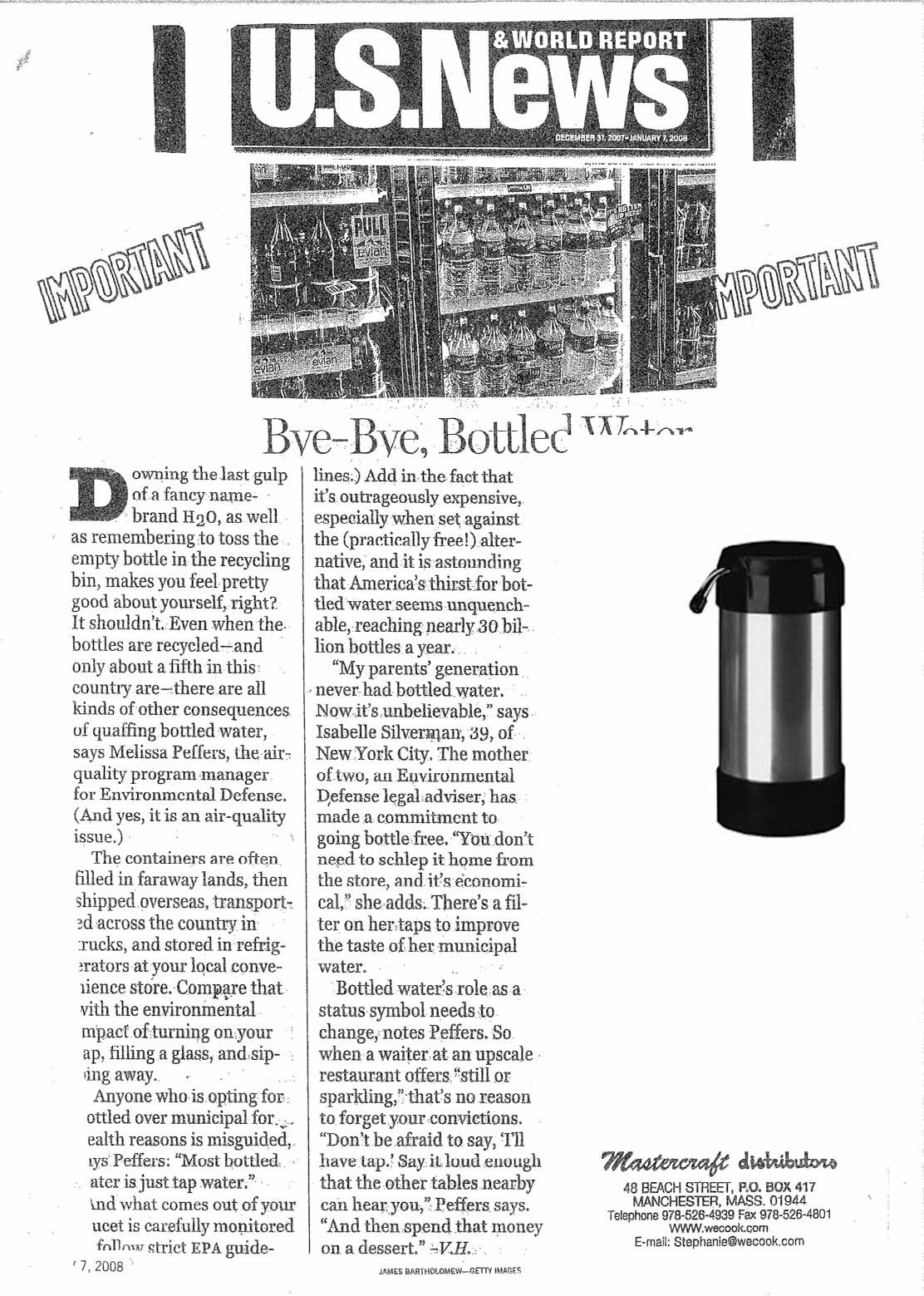



U.S. Made Braided Rugs (including wool cloth). All sizes and shapes. Custom colors and sizes our specialty. Chair pads, stair treads and baskets to match. We also feature Wool







TRIMS &

















thick grass and weeds without bogging down—the only trimmer guaranteed not to wrap!



















































































When the original Filene’s Basement closed 10 years ago this fall, Boston lost a quirky shopping experience—and a kind of common ground.
wo years ago, a 60-story tablet of glass known as the Millennium Tower officially took its place in the Boston landscape. Topped by a penthouse whose price tag set a city record ($37.5 million), it casts a shadow over many of its Downtown Crossing neighbors—including, right at the base of this luxury tower, the former home of some of the best bargains in New England.
The original Filene’s Basement had operated for nearly a century beneath the Filene’s department store at Washington and Summer streets. Known as the “Tunnel Bargain Basement” when it opened in 1909, the store immediately got people’s attention with its sales model: The merchandise, a mix of discontinued designer lines and overstocks, was automatically marked down the longer it went unsold, with anything remaining after 30 days donated to charity.
This meant that patience, luck, and even a little sneakiness (i.e., trying to hide a great piece of clothing from other shoppers until the next markdown) were key to scoring
brag-worthy deals in the Basement. And when the annual bridal gown sale, aka the “Running of the Brides,” began in 1947, the ability to throw an elbow didn’t hurt either.

By 1990, the Basement was Boston’s second most popular tourist attraction, drawing up to 20,000 people a day. Visiting celebrities, local politicians, working-class families— they all dug through the motley bins and racks under dingy fluorescent lights, shoulder to shoulder, right up until the store closed September 3, 2007, for a redevelopment project.
In summing up the Basement’s legacy, it’s hard to top the observation of veteran Globe reporter Joseph Dinneen, writing of the store in its heyday, “The Basement is democratic. The first families of Boston mingle with the last families off the boat, and it is the same way with the merchandise.… There is no caste system of any kind in the Basement—no special distinction or special privilege. Big names among people and in merchandise come and go; but the Basement goes its merry way.” —Jenn
Johnson

From biking along Vermont’s back roads to canoeing on Maine’s Allagash River, we reveal our go-to “hidden escapes” to help you discover some great fall color.



Looking to change up your breakfast routine? Try this terrific recipe for savory sautéed mushroom toasts—we’ll show you how to make it.
Where to eat, stay, and play in Kent, Connecticut, recently chosen by Yankee as New England’s top town for fall foliage.






Check out the season’s best photographs from our Instagram community.







Revisit editor Mel Allen’s 1984 tale of a legendary Maine river guide.







FLAX & CHIA
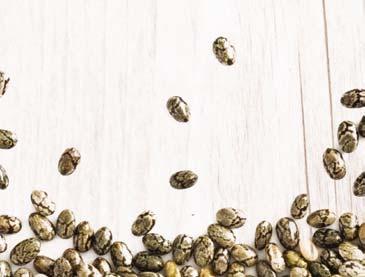

























WHOLE GRAIN











































































GLUTEN FREE HIGH FIBER

























































































Now it’s even easier to enjoy the goodness of whole grain oatmeal just about anywhere, thanks to Bob’s Red Mill Gluten Free Oatmeal Cups. The convenient grab-and-go, carry-anywhere cups feature hearty and healthy blends of whole grain gluten free oats, flaxseeds, chia seeds, fruits, nuts and spices. Available in four delicious flavors and ready in only three minutes—just add hot water or pop it in the microwave.


